One of the most astonishing churches in the world, Copenhagen’s Grundtvigs Kirke is an all-time example of shooting your shot–twenty times more expensive than any competing entry, in 1913 architect Peder Vilhelm Jensen Klint’s proposal actually finished runner-up in the competition to design a memorial honoring Danish pastor-poet-pioneering educator N.F.S. Grundtvig. The competition brief called for a monument fusing sculpture and architecture, so the foremost artists in Denmark submitted 29 sculptural monuments–statues, arches, plinths and the like. For the 30th entry, Jensen Klint said fuck it and shot for the moon. He proposed a full-on building, a brick expressionist gothic cathedral inspired by the stepped gables of a traditional Danish village church. Sculptor Niels Hansen Jacobsen won the competition and took home the prize money, but they built P.V. Jensen Klint’s monumental church. The tower portion opened first in 1927 and, after P.V.’s death in 1930, his son Kaare Klint and master mason Valdemar Jørgensen finished the entire church in 1940.
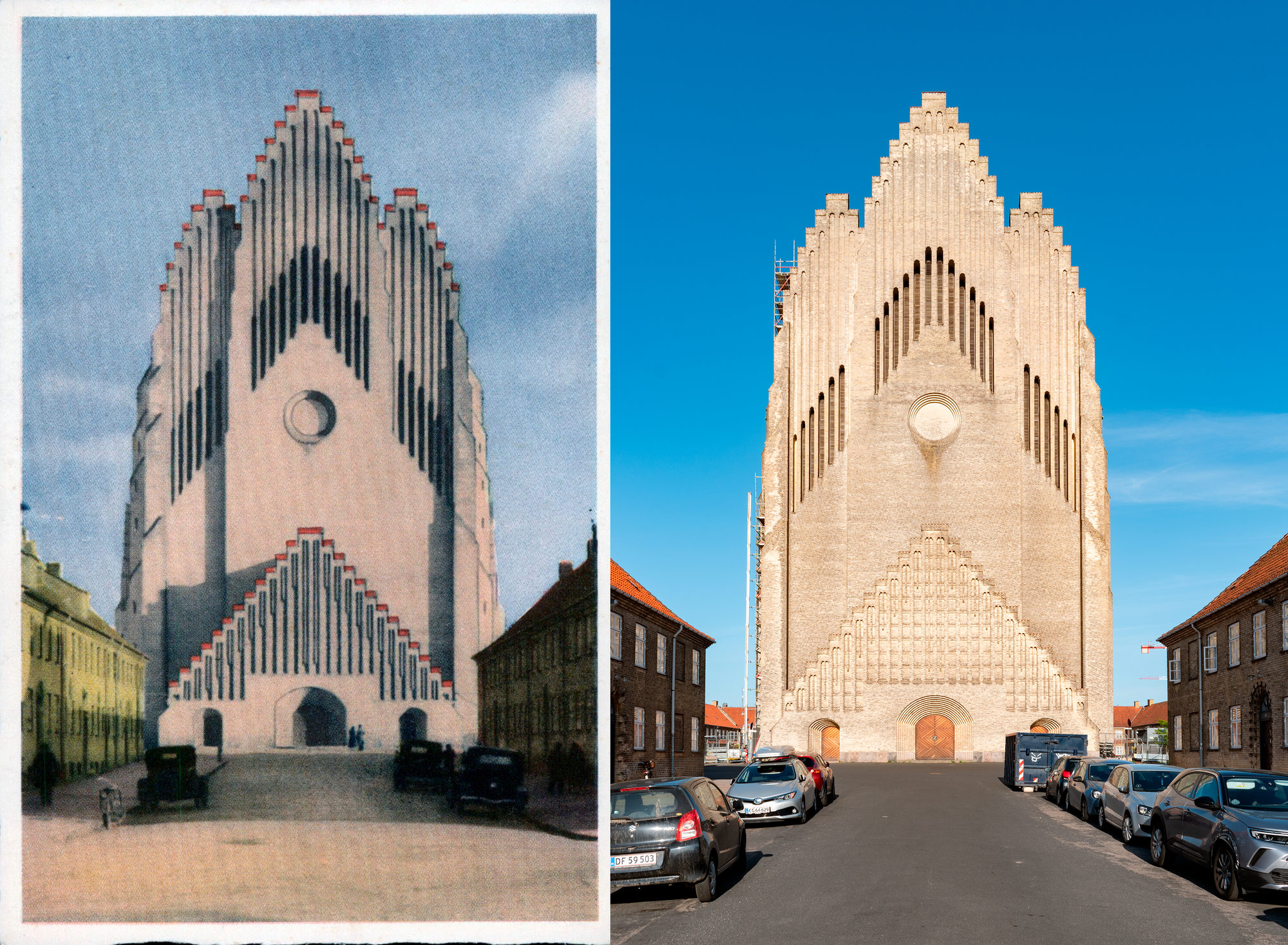
So, changes? You tell me–basically none (and, with the church embraced as an icon basically immediately, they’re unlikely to come). More cars, of course, and bigger ones (booooo), but other than some mild restoration work going on, it looks the same.
Who was Grundtvig and why did he deserve such a magnificent church? Glibly, Grundtvig basically invented Danish national consciousness. Ministering to the masses from his parish at Vartov hospital in Copenhagen in the 1800s, Grundtvig influenced the practices of the Church of Denmark (hymns, sermons, theology, etc.), participated in the constitutional assembly that transitioned Denmark into a democratic constitutional monarchy in 1849, and set values for the Danish education system–the promotion of a broad-based culture of lifelong learning–that persists to this day (through the folk high school system but also generally).
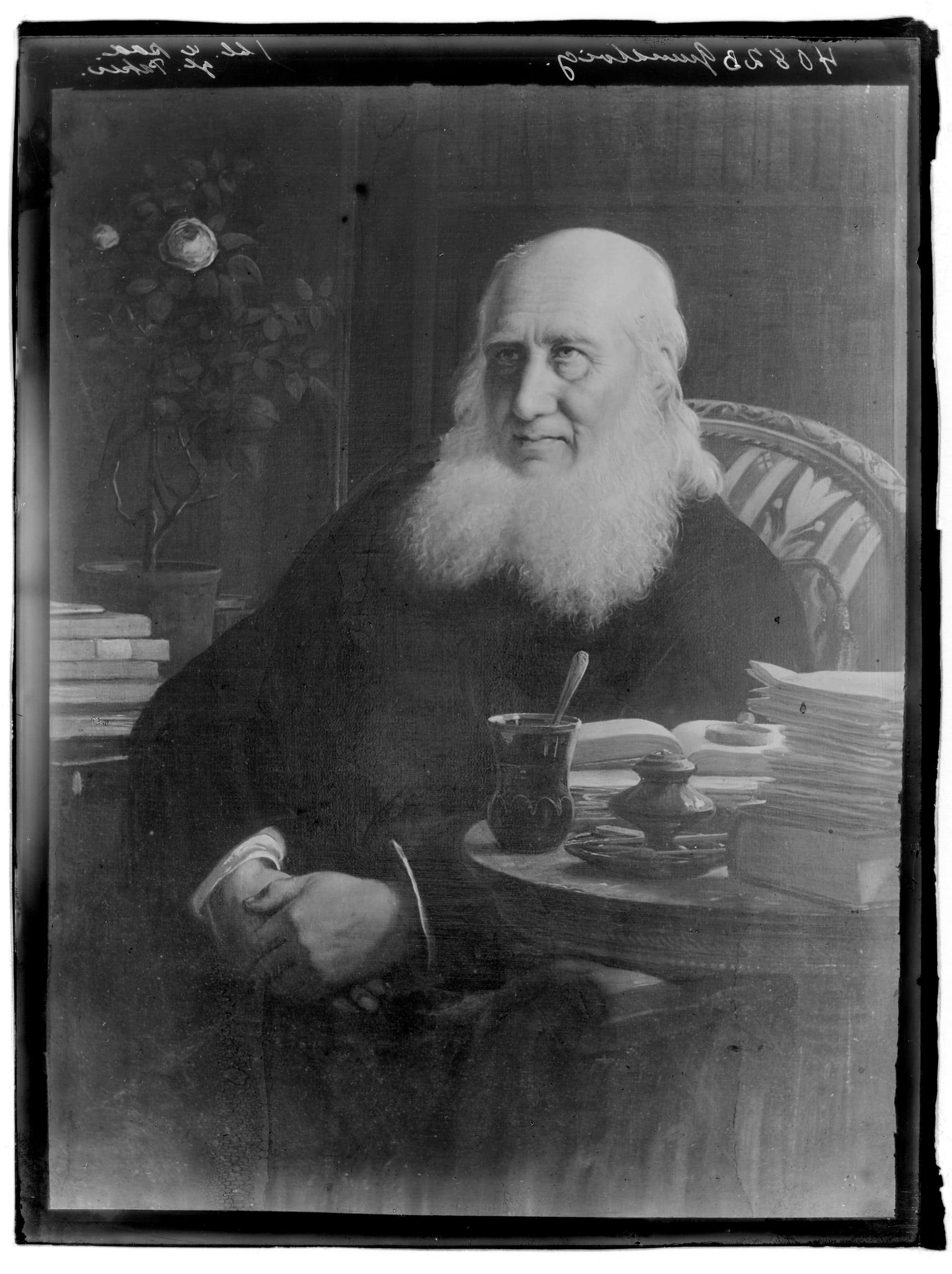
19th century mass education and political liberalization created the modern European nation-states that we take for granted today, but I don't know of anywhere else where a single person stood at the intersection of mass education, religion, and politics as those national consciousnesses crystallized in the way that Grundtvig did–he was sort of a founding father of Denmark thrice-over (at least!).
Such a paragon of Danishness deserved a particularly grand memorial…and one which would, appropriately, advance the Danish nation-building project to which Grundtvig was so integral. The word “pantheon” was thrown around quite a bit, but decades after his 1872 death there were still no major monument dedicated to Grundtvig in Copenhagen. So in the early 1900s a committee was formed to brainstorm plans and begin fundraising, and launched the first competition to design Grundtvig’s monument in 1912.
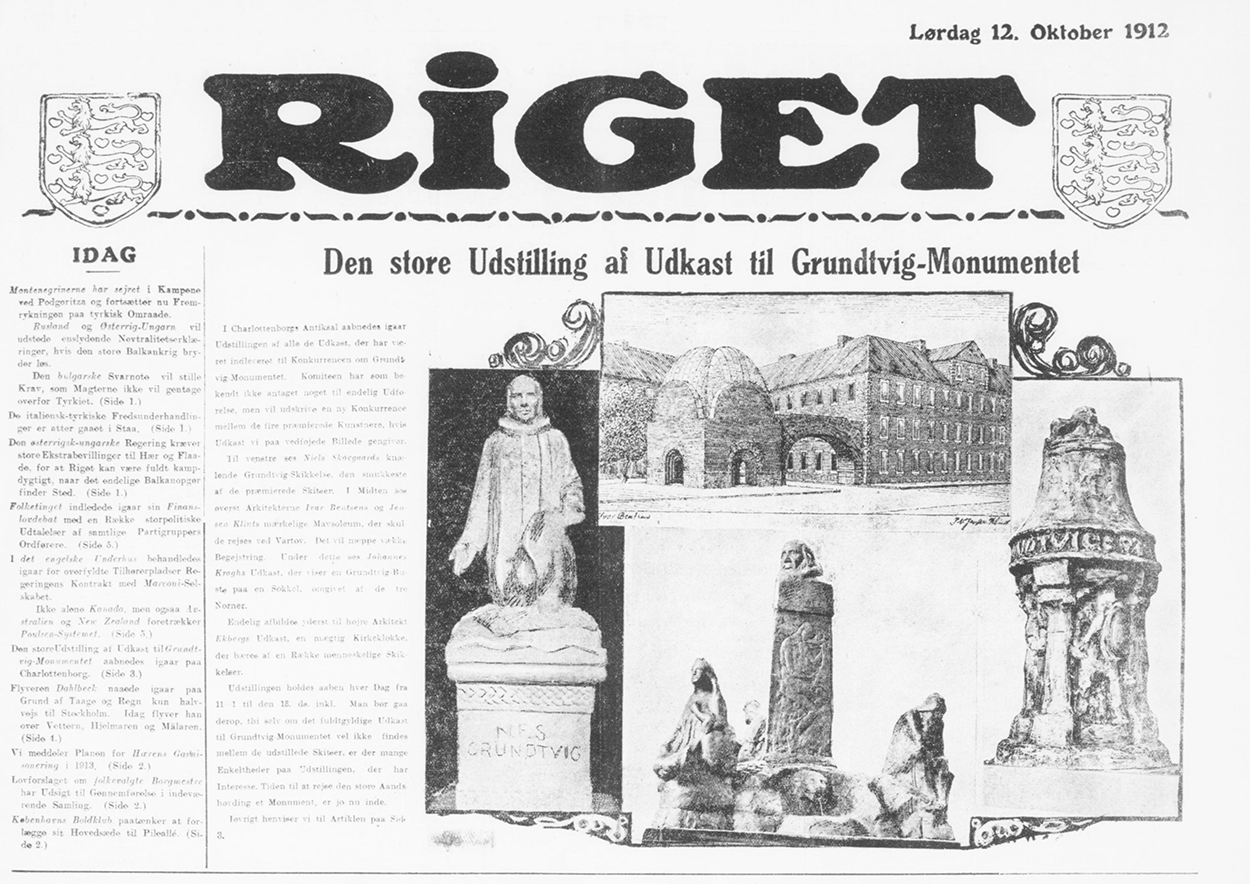

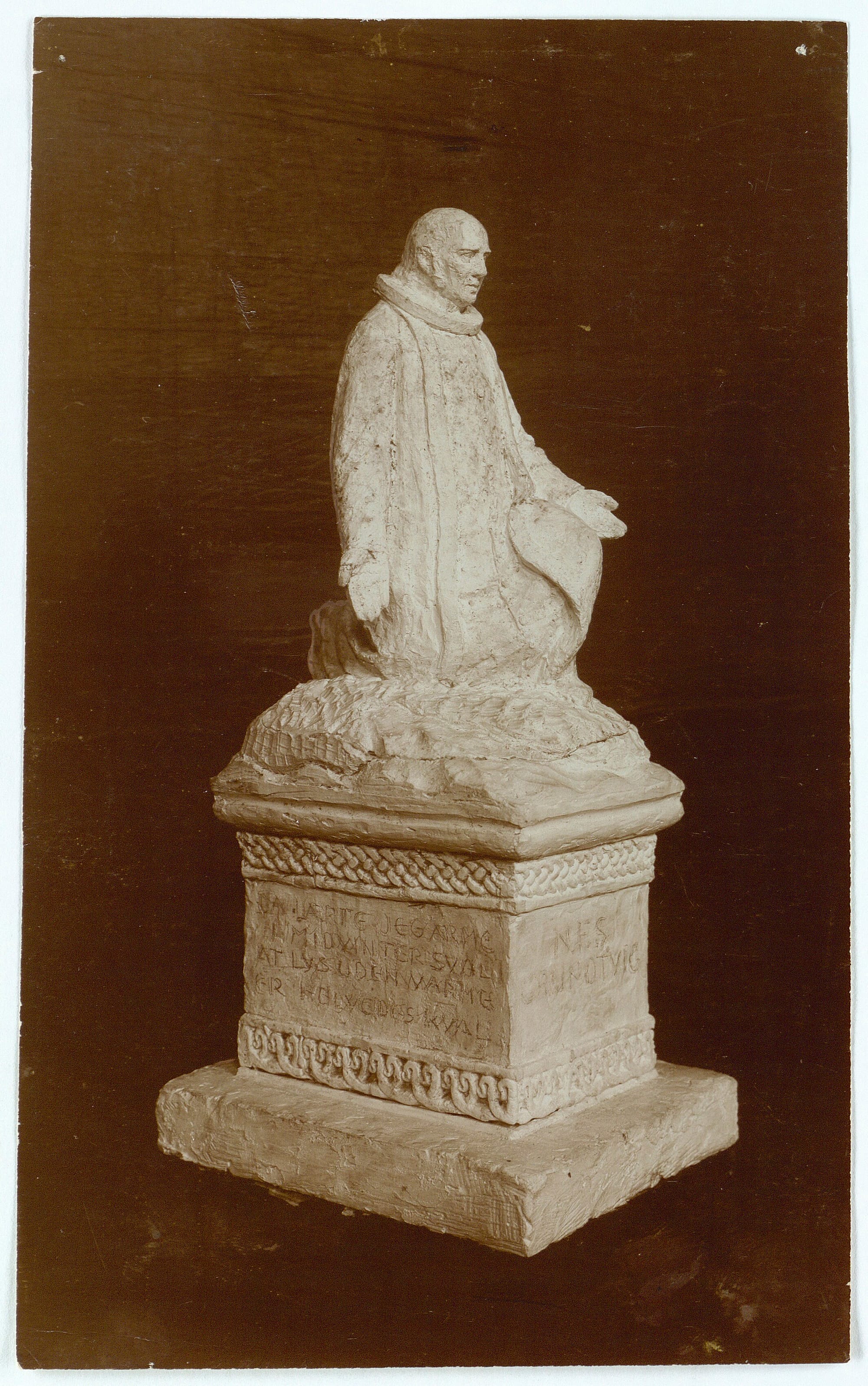
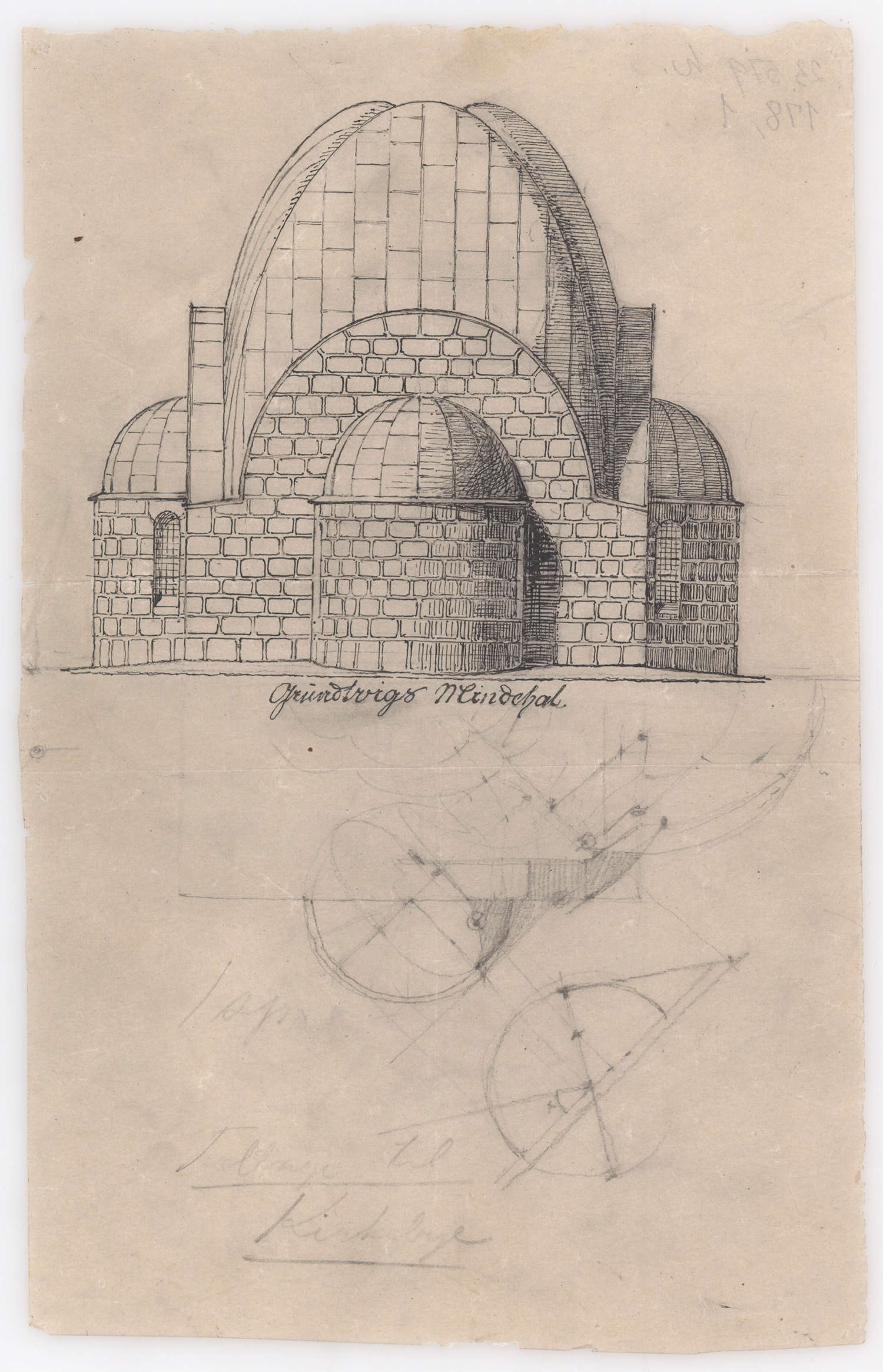
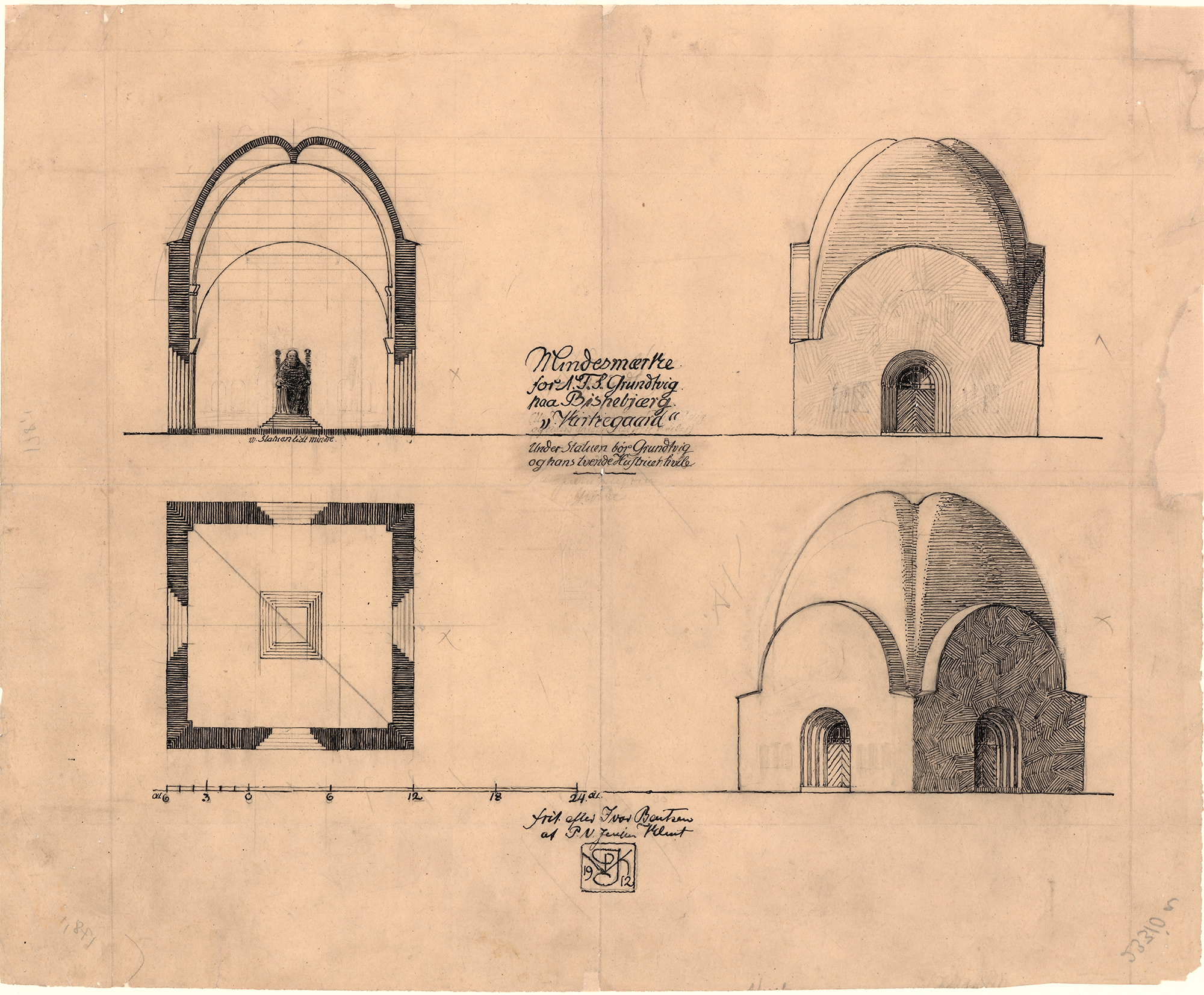
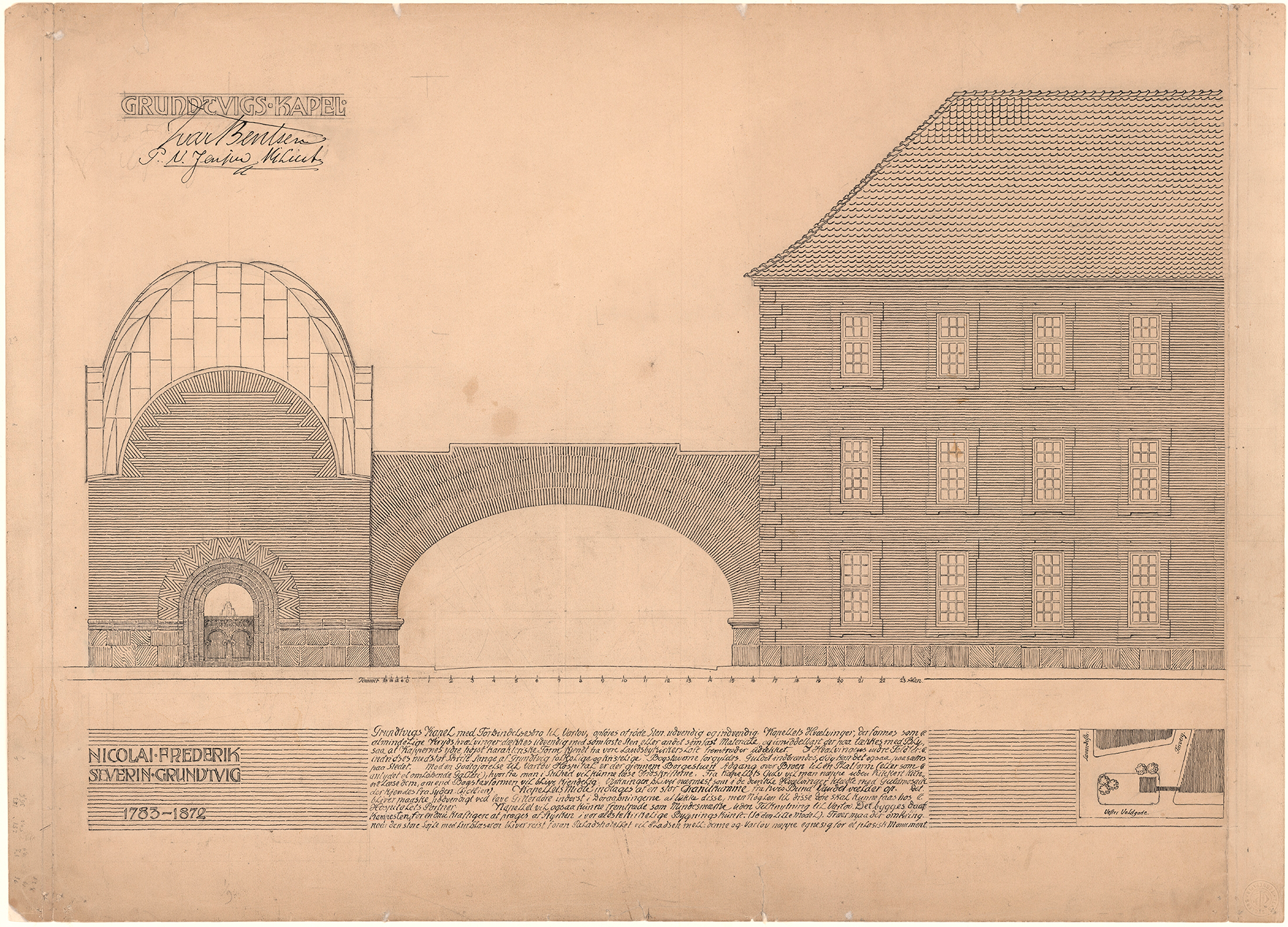
The four finalists for the first design competition, in an exhibition at Charlottenborg, October 1912 | Other entries in the first competition | Niels Skovgaard's entry, Grundtvig kneeling, 1912, Det Kongelige Bibliotek | Sketches of Jensen Klint & Bentsen's entry for a mausoleum at Vartov, Det Kongelige Bibliotek (Sketch 1, Sketch 2, Sketch 3)
…aaaand nobody won, really. Four finalists were chosen, but ultimately they weren’t happy with the results. Peder Vilhelm Jensen Klint’s entry was one of those four finalists, his entry developed in partnership with architect Ivar Bentsen, competing with finalists Axel Ekberg, Johannes Kragh, and Niels Skovgaard (Skovgaard’s entry, a statue of Grundtvig kneeling, was eventually installed at Vartov in 1931). You could already see here what Jensen Klint was working towards–the other three finalists were sculptures, columns, etc., whereas Jensen Klint proposed erecting a small, striking mausoleum (...you know, a building) on the square next to Vartov. But hey, Jensen Klint was an architect–what else was he going to enter?
Regardless, the committee didn’t love any of the finalists and held the competition again in 1913 with the same brief, calling for a sculptural or a sculptural-architectural memorial honoring Grundtvig as a spiritual leader. 30 entries were submitted, including proposals by some of the most influential artists in Denmark like Rudolph Tegner, Niels Skovgaard, Rasmus Harboe and Vilhelm Wanscher. Arguably responding to a completely different competition brief, P.V. Jensen Klint submitted his brilliantly bonkers church, 20x more expensive than any of the other entries, basically asking, “what if we honored Grundtvig not with a statue, but with the greatest village parish church ever?”.
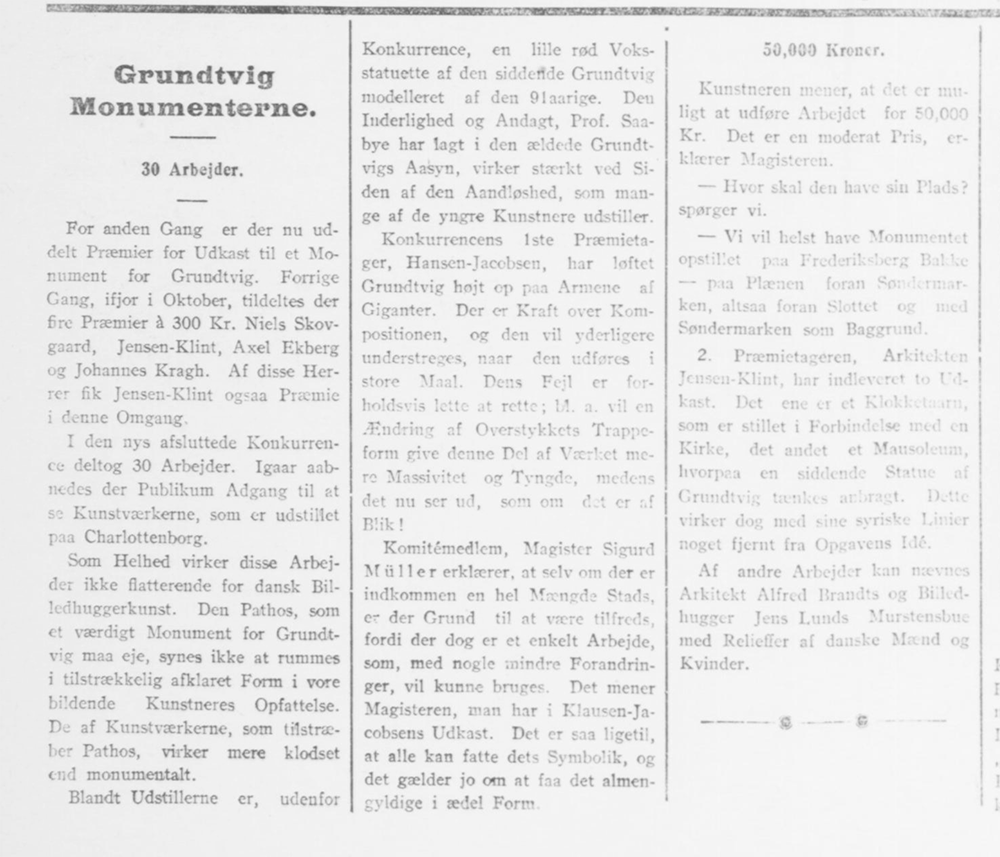
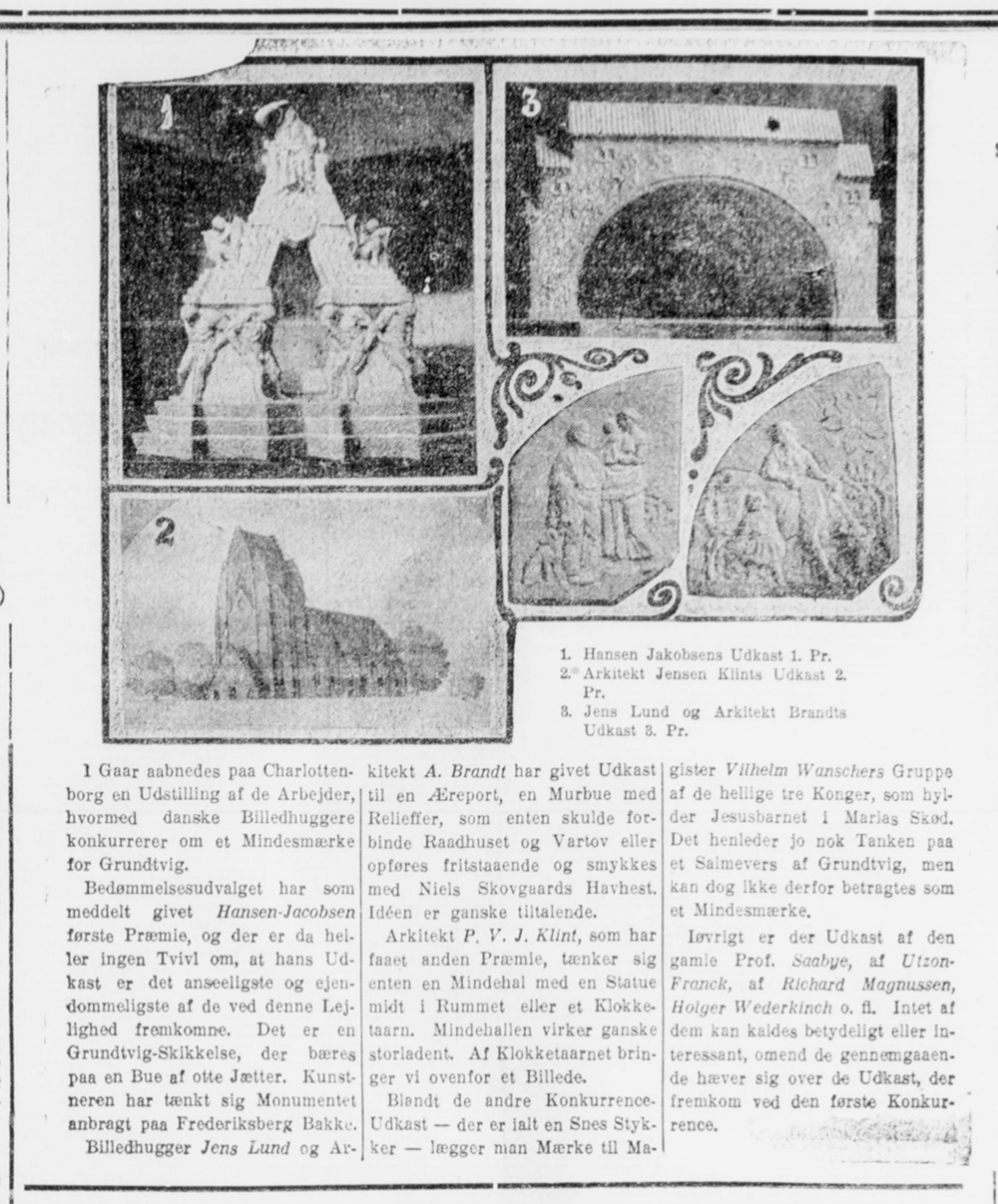
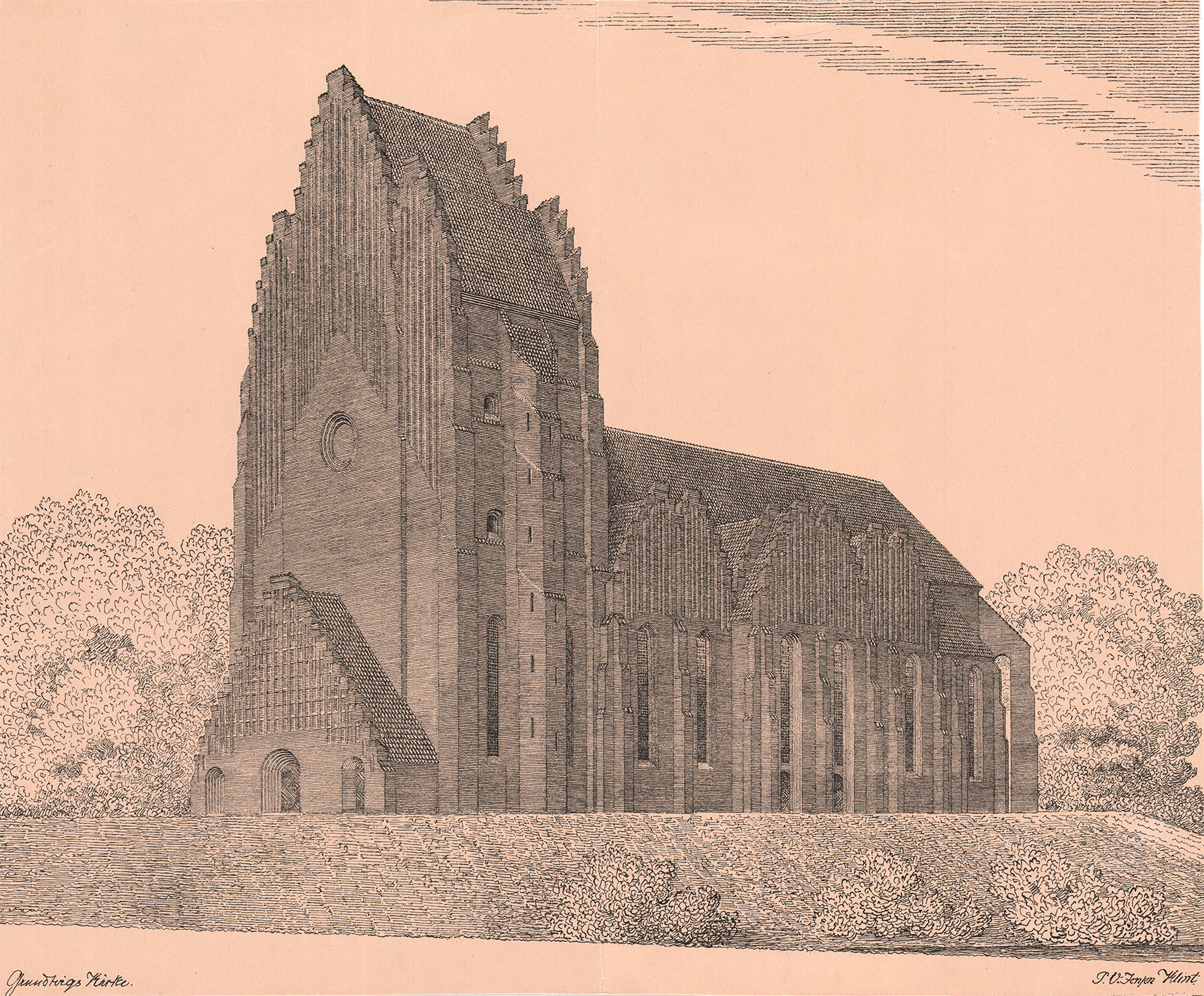
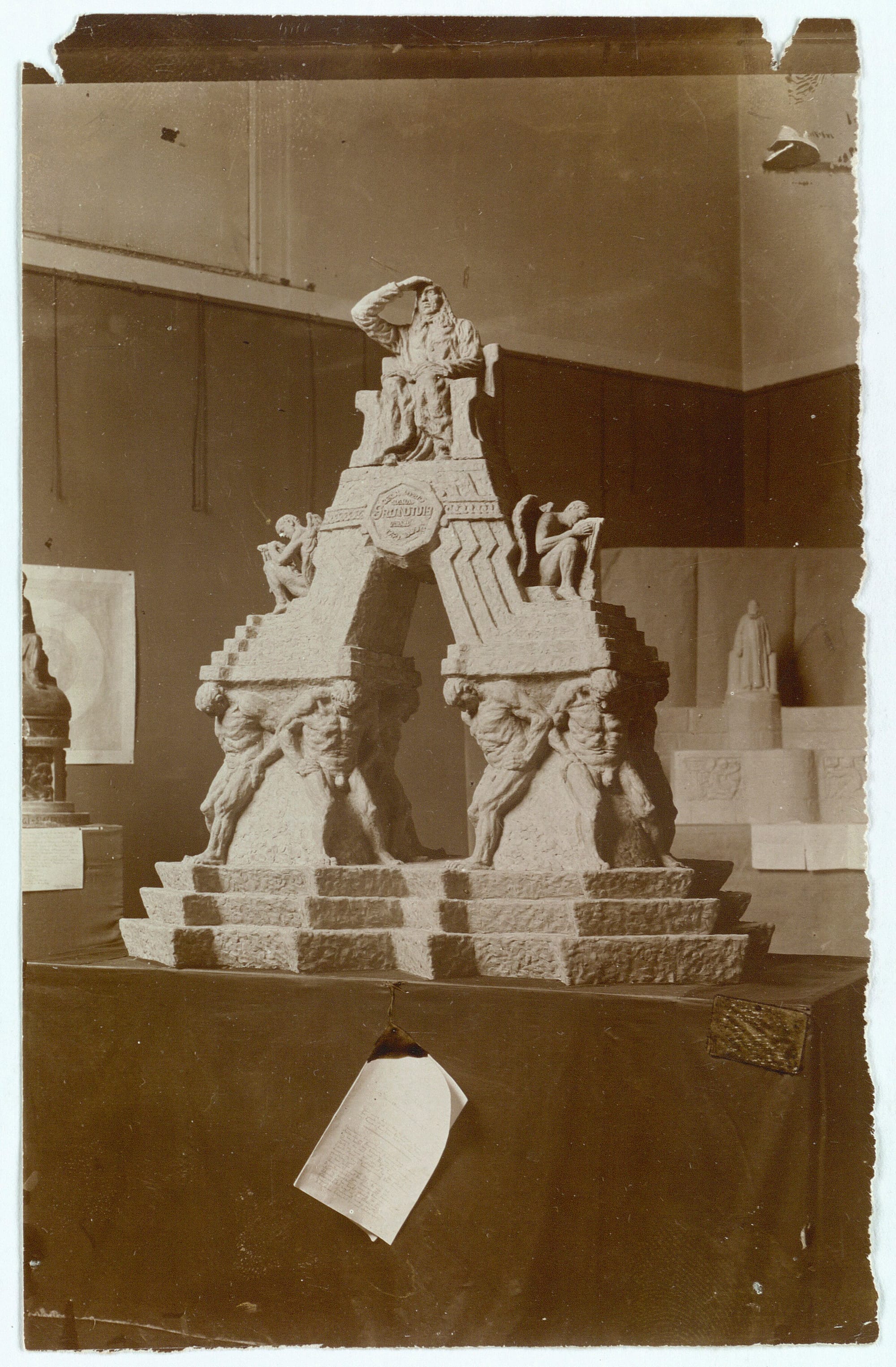
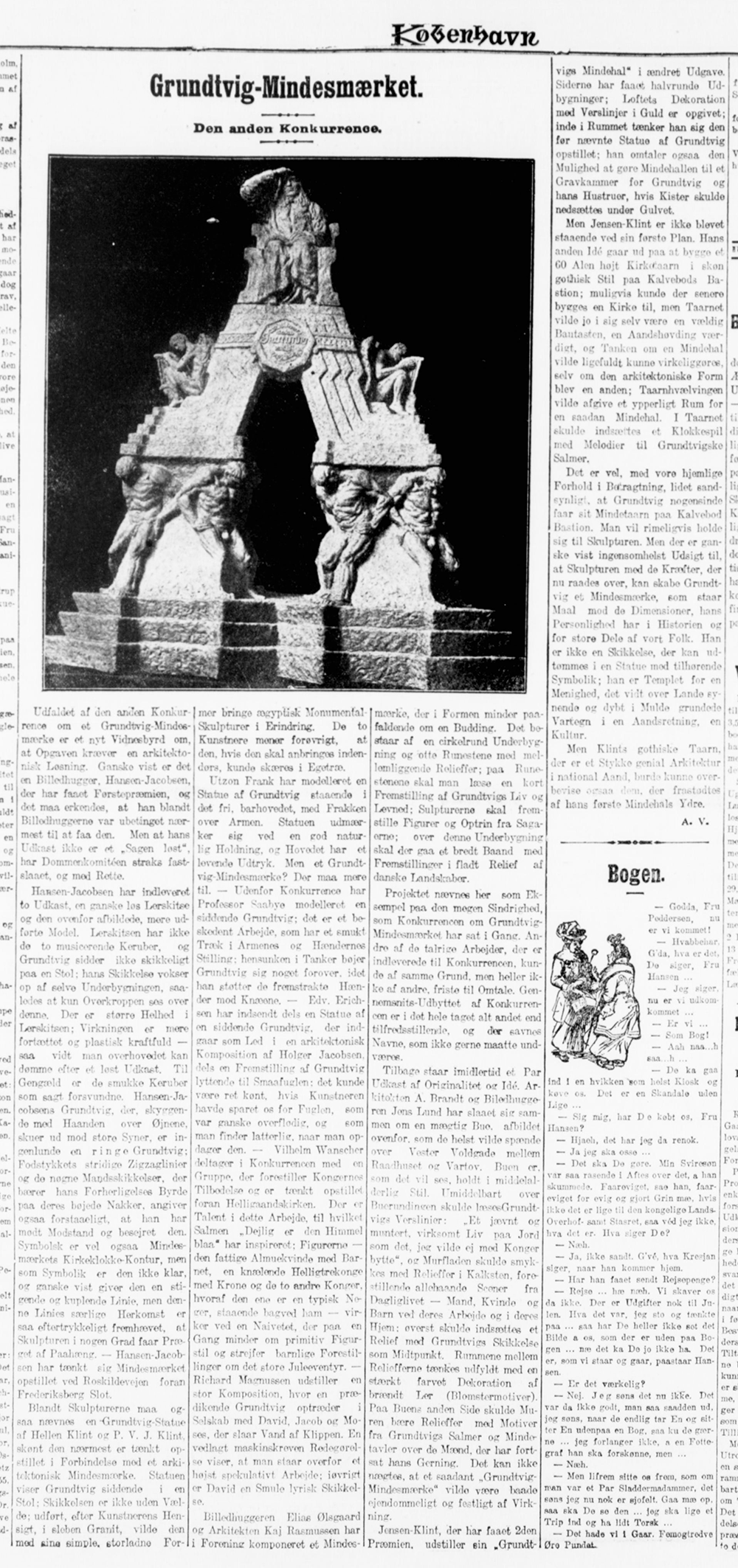
1913 articles on the second competition and the four finalists | Sketch of Jensen Klint's entry, Det Kongelige Bibliotek | Niels Hansen Jacobsen's winning entry, 1913, Det Kongelige Bibliotek | 1913 article about Jacobsen's entry winning the competition
…and he lost AGAIN, this time finishing runner-up to sculptor Niels Hansen Jacobsen. The sculptor, who once said he was possessed by a “ceramic demon”, had proposed a fascistic-looking triangular arch, with Grundtvig sitting on a throne supported by eight naked men. I quite like some of Niels Hansen Jacobsen’s work–his “Troll That Smells Christian Blood” in Vejen is brilliant, turned into one of the most unique municipal symbols in the world–but this is some Young Adult fantasy villain stuff, terrifying and weird. It looks like Grundtvig is crushing those poor dudes under the weight of his importance. And yet–ten of the twelve judges somehow chose it (the other two picked Jensen Klint’s gloriously over budget proposal).
The press and the public, though, were not into Hansen Jacobsen’s terrifying triangle. Sentiment solidified quickly behind Jensen Klint’s church proposal, although there were questions why–if they were going to build a church to honor Grundtvig–hadn’t the competition just, you know, asked for that? Deciding to proceed with the runner-up, the committee gave Niels Hansen Jacobsen a fat stack of prize money and returned his plans (forever unbuilt) and set about raising 20x the money they initially budgeted.
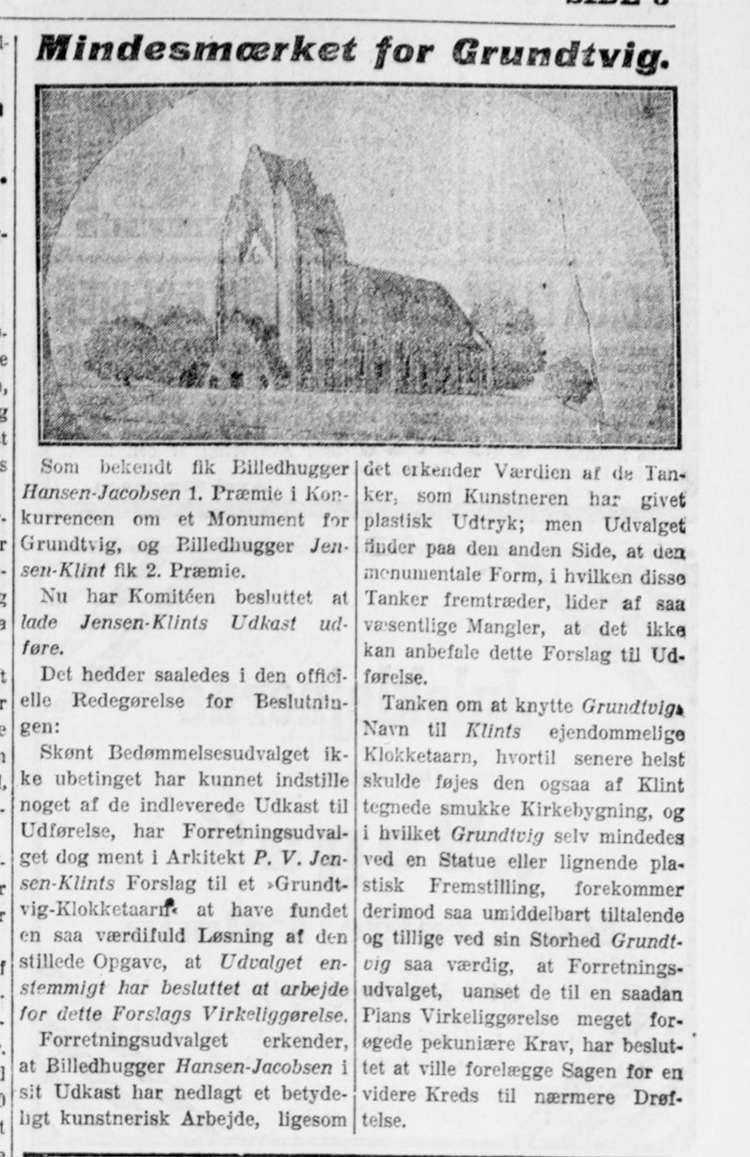
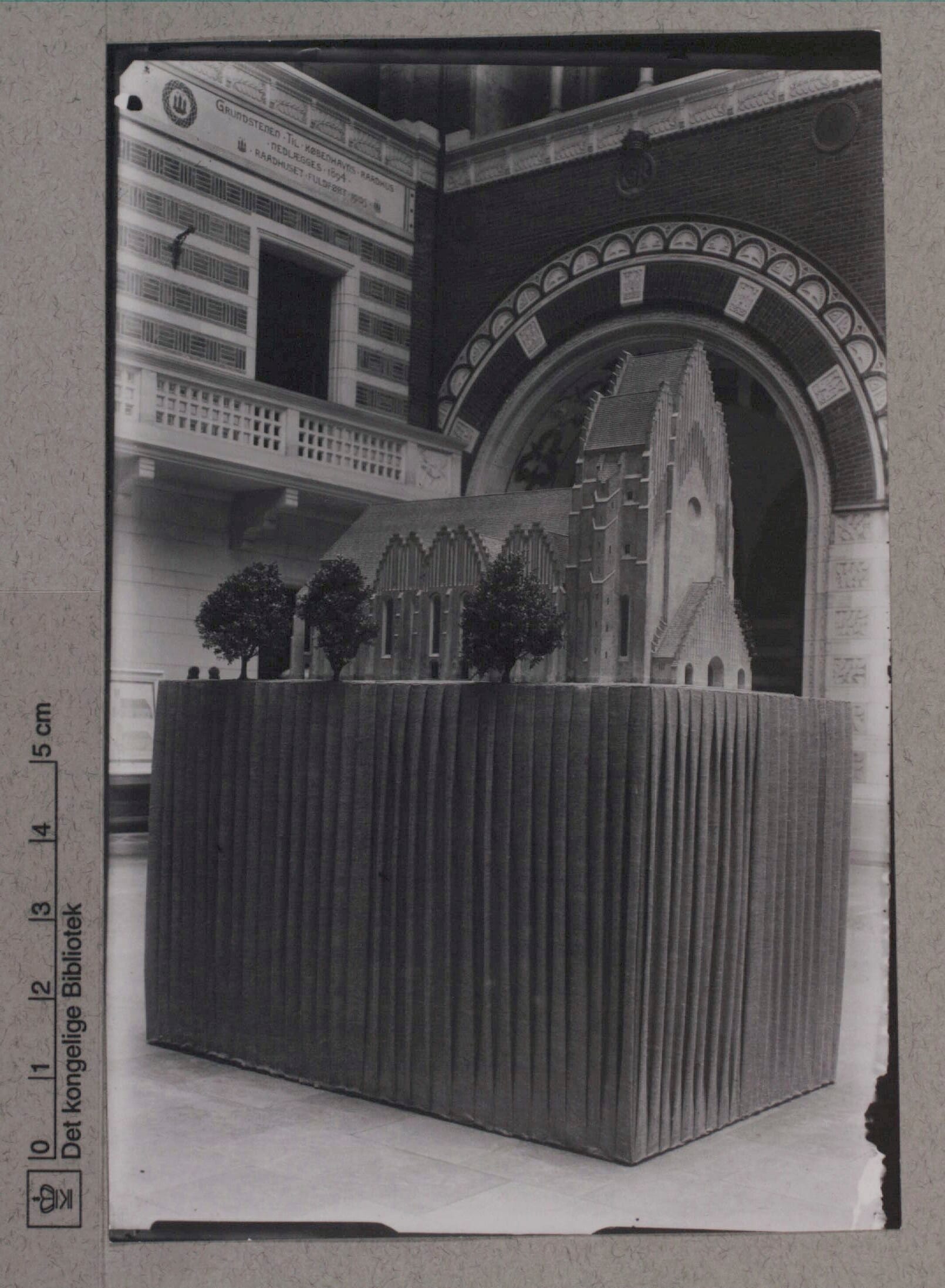
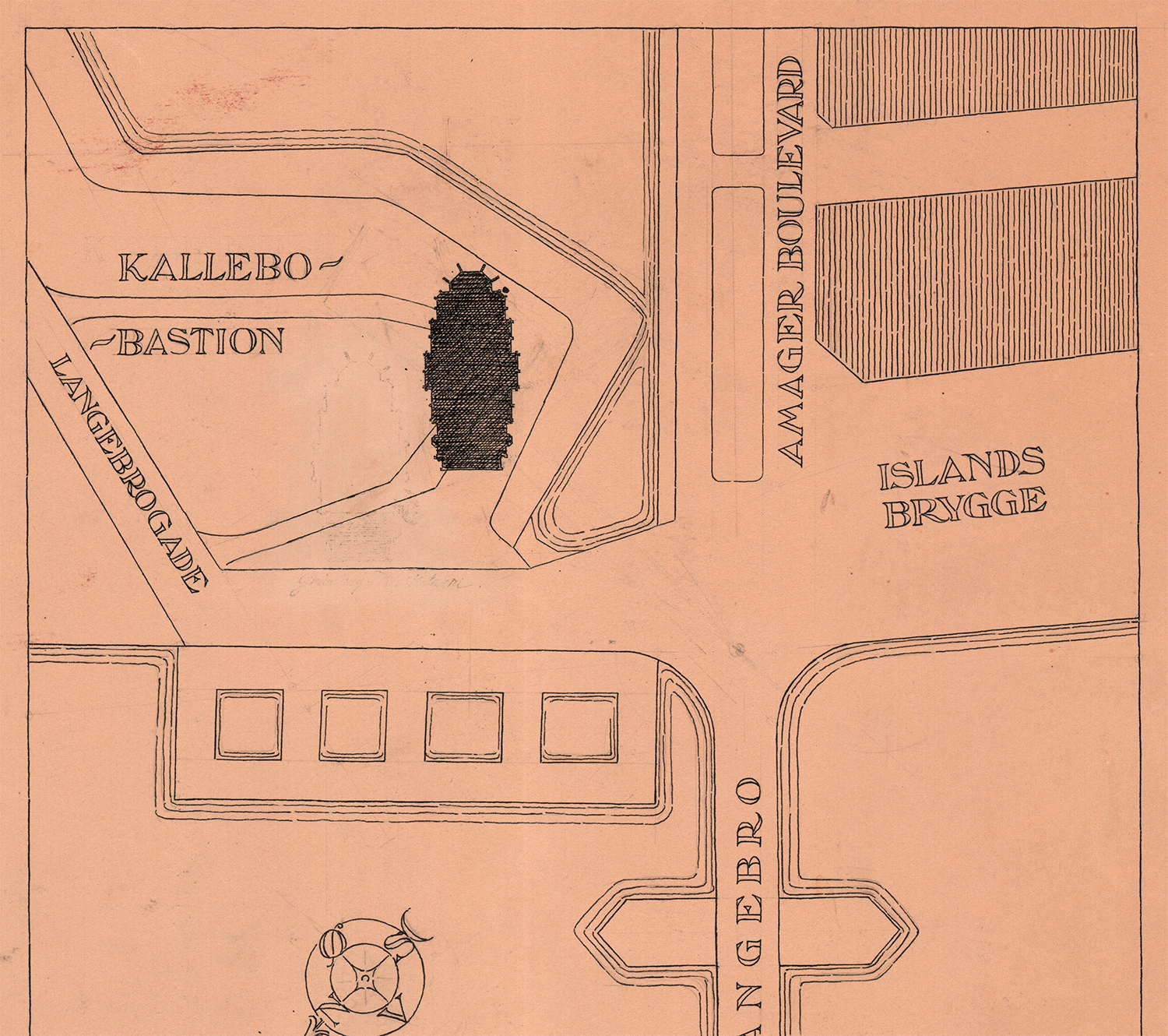
1913 article about the committee going with Jensen Klint's plan instead | a model of the church in Copenhagen City Hall, Det Kongelige Bibliotek | a site plan for the proposed Kalvebod Bastion location, Det Kongelige Bibliotek
Vigorous debate ensued about where to actually build the thing: Elephant Bastion in Christianshavn, a square by Østbanegården, at Grønttorvet, out in Dybbøl in Jutland, etc. There was even a proposal to fill up Sankt Jørgens Sø, one of Copenhagen’s lakes, and build the church there. It looks like one of the most developed competing ideas was to put it at Kalvebod Bastion, on Copenhagen Harbor next to Langebro (...feels like that location would've made this one of the most famous churches in the world). Around this time, a new neighborhood was being built on Copenhagen's northwest side– and Bispebjerg needed a parish church. It was an appropriately down-to-earth fit for a church honoring Grundtvig–and damn, what a parish church did they receive.
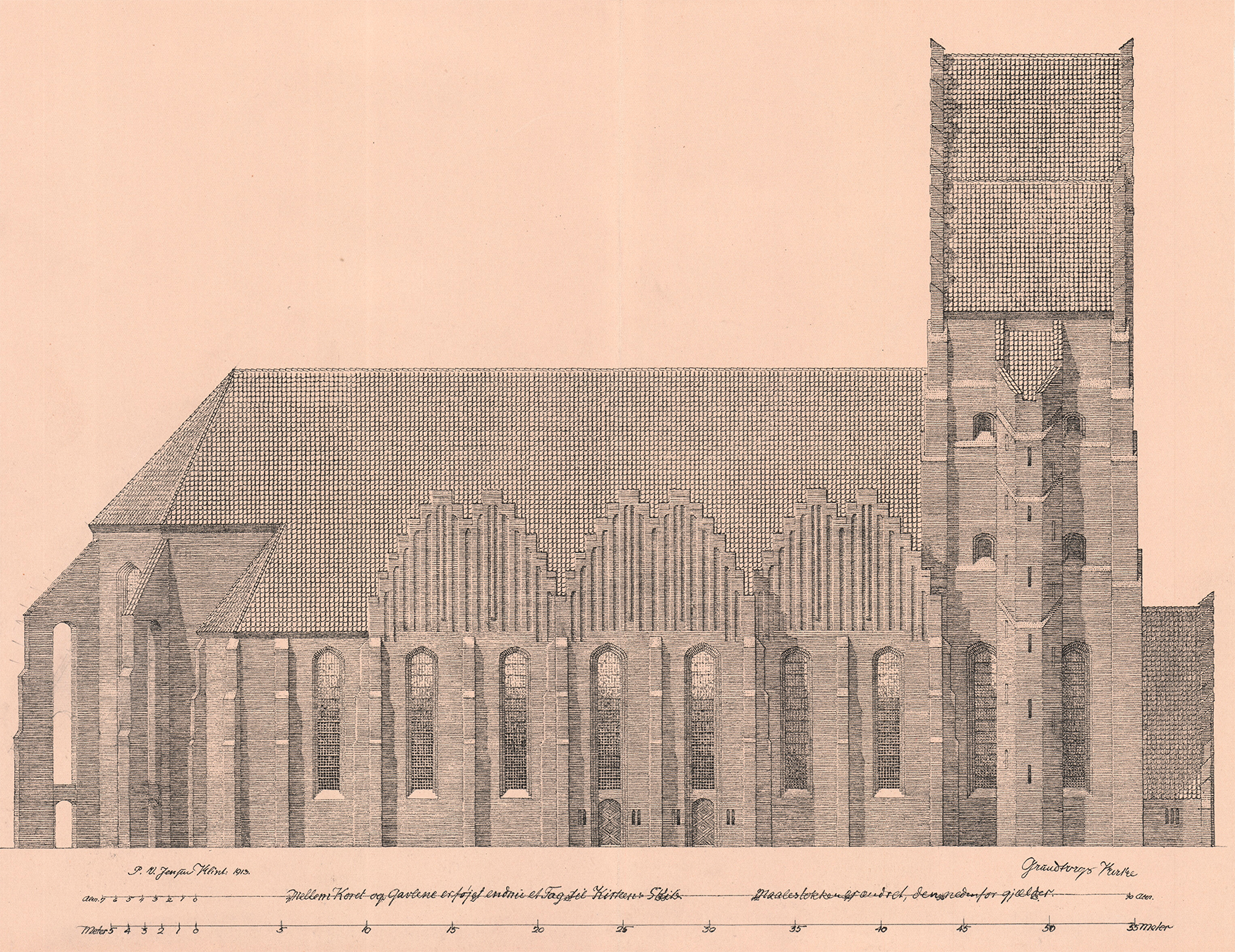
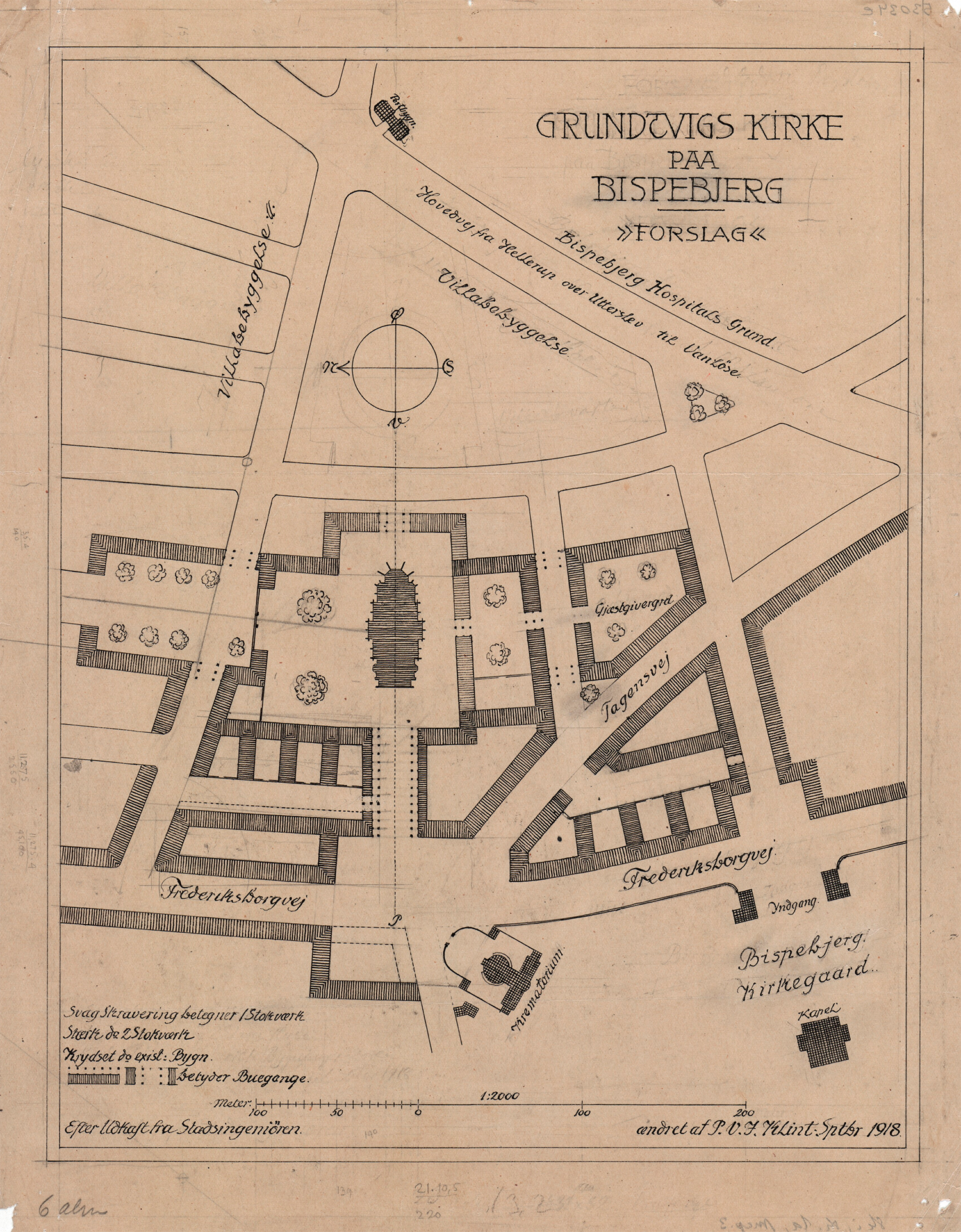
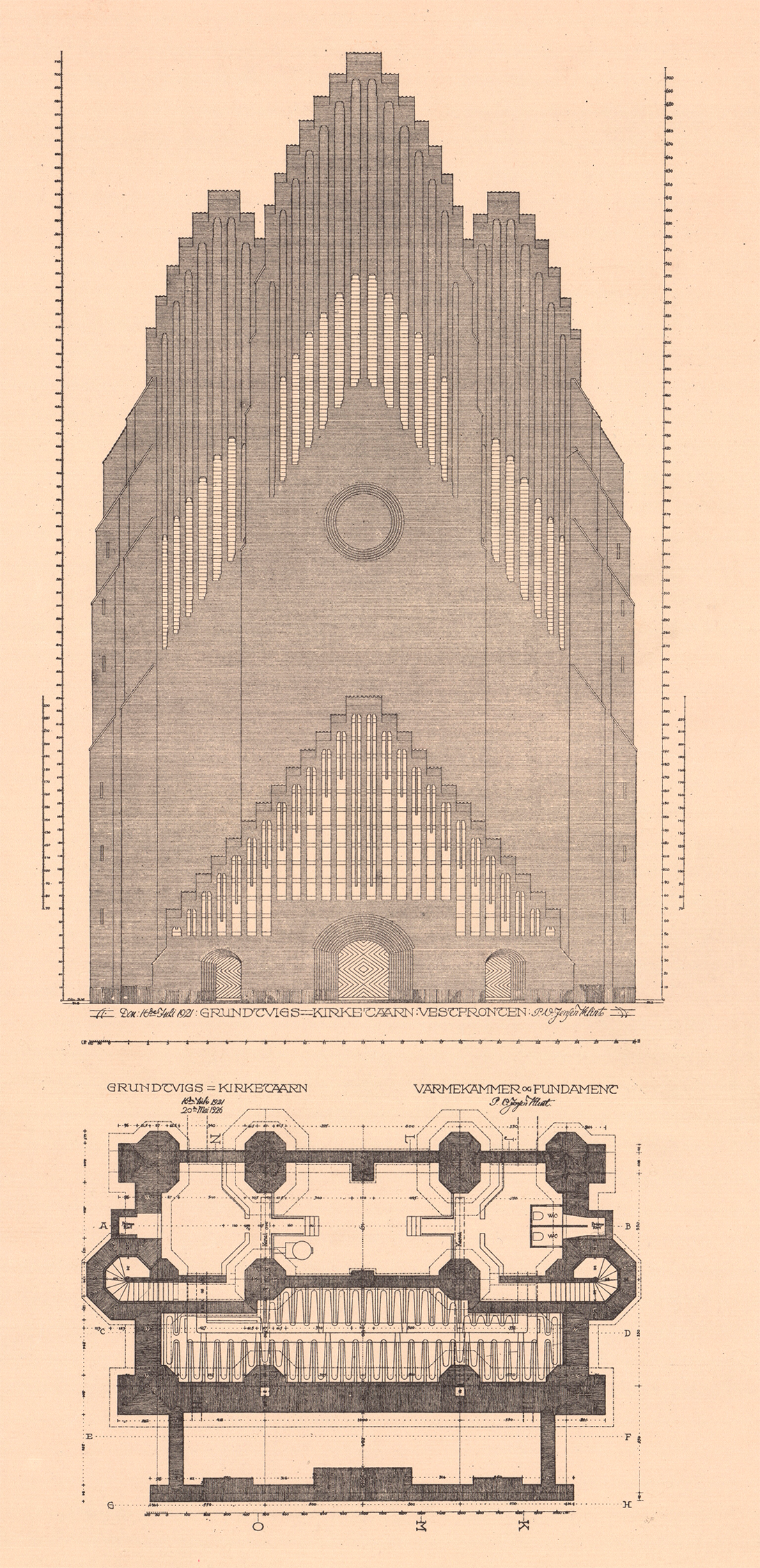
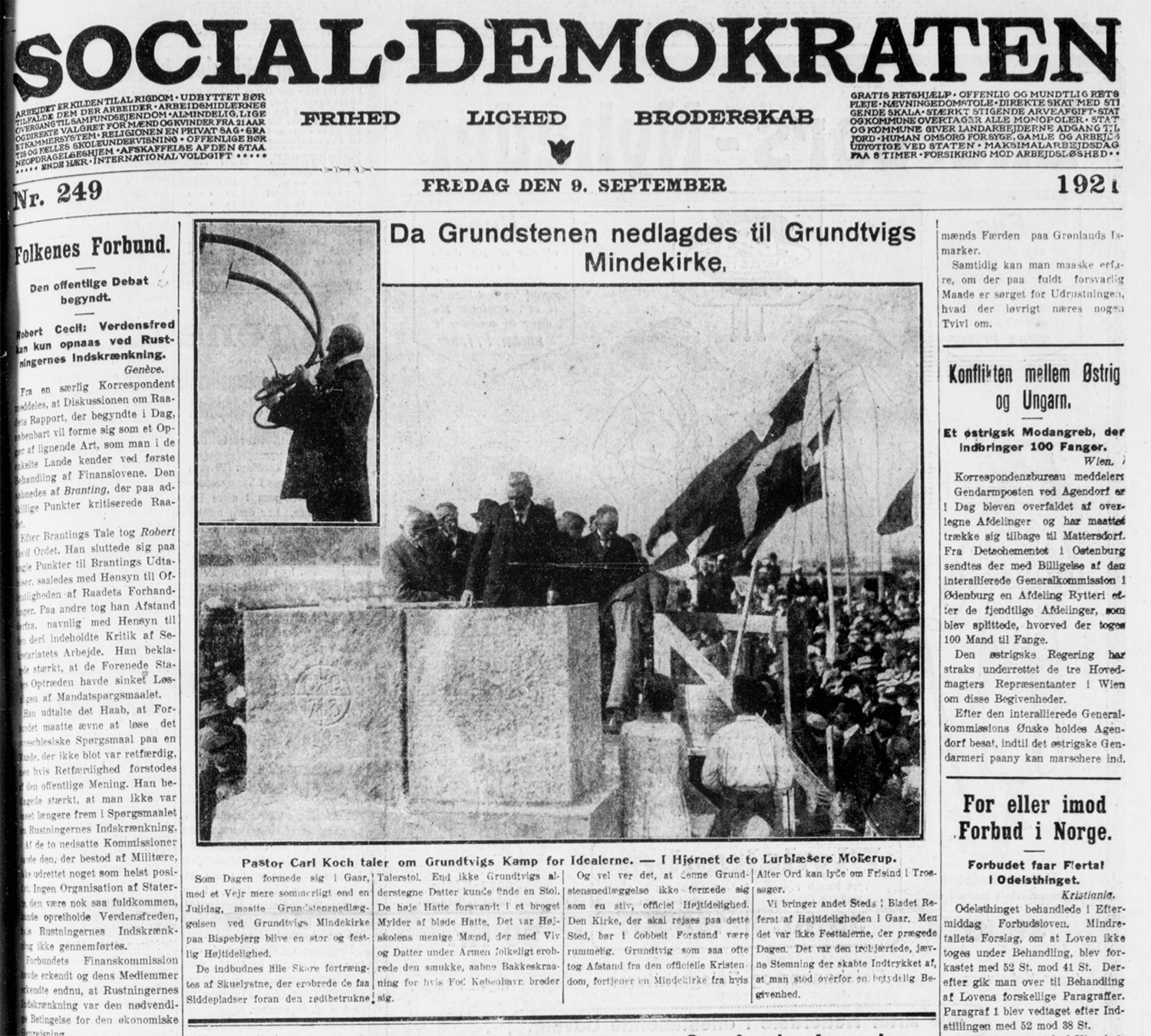
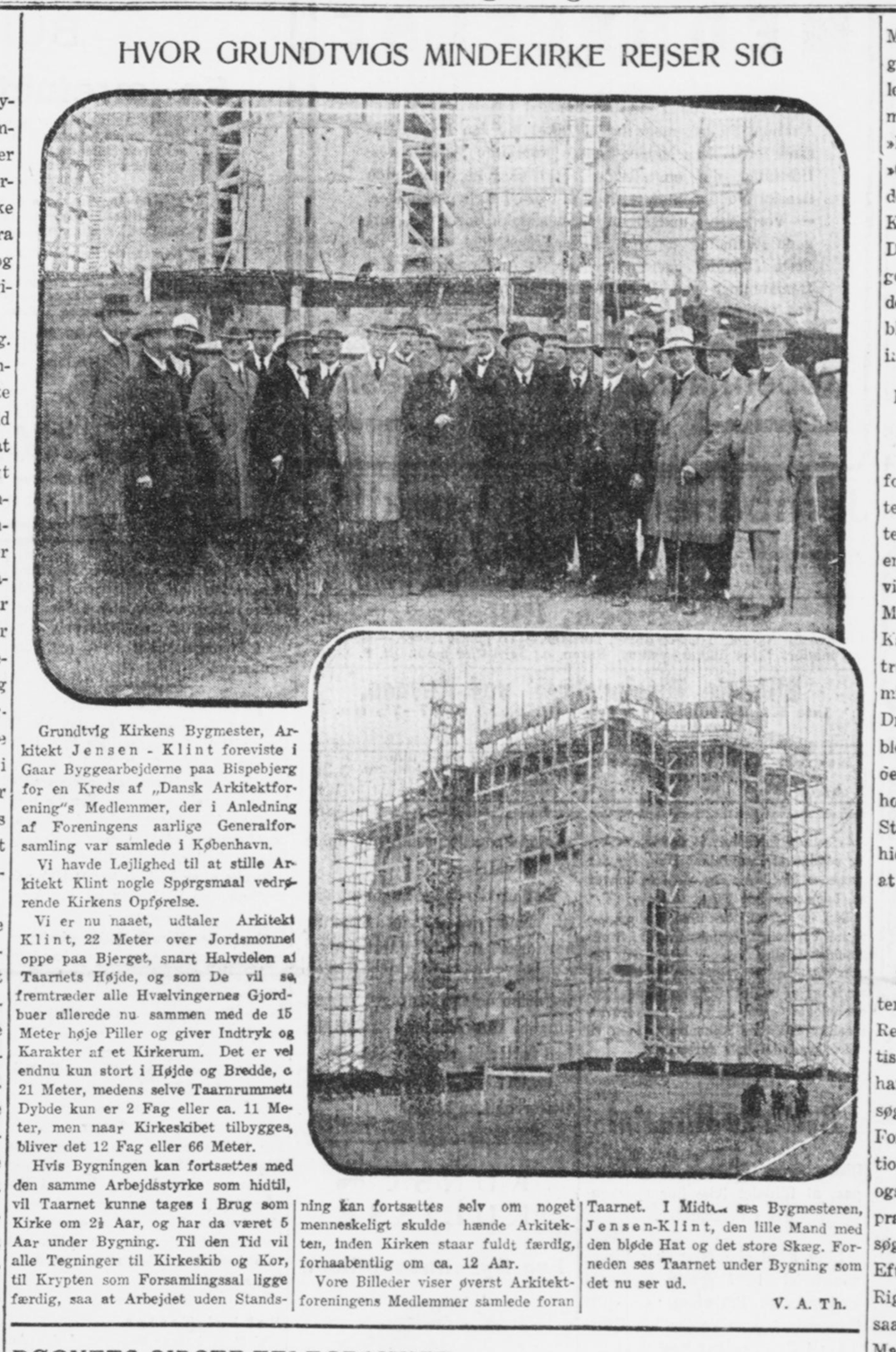
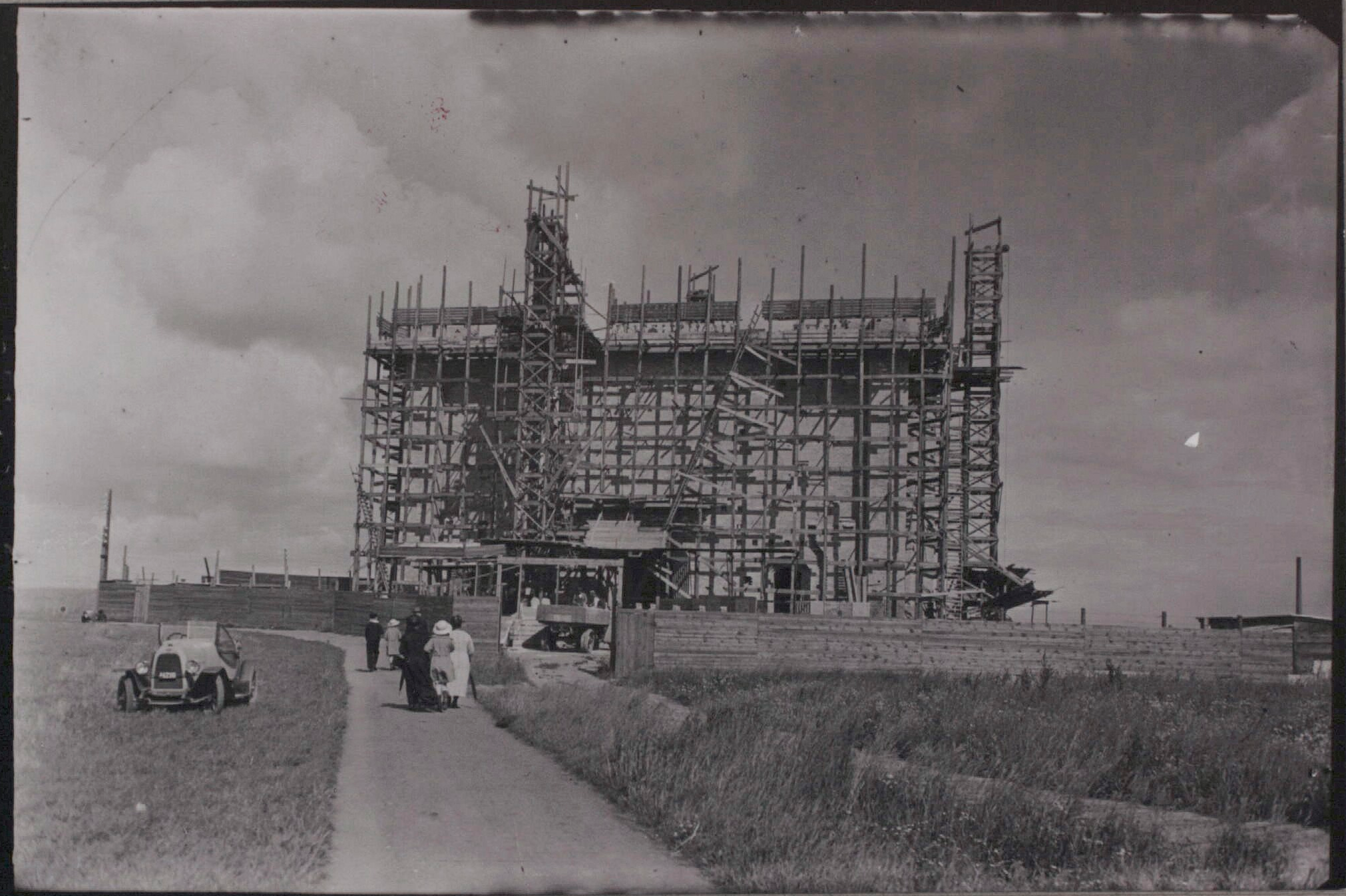
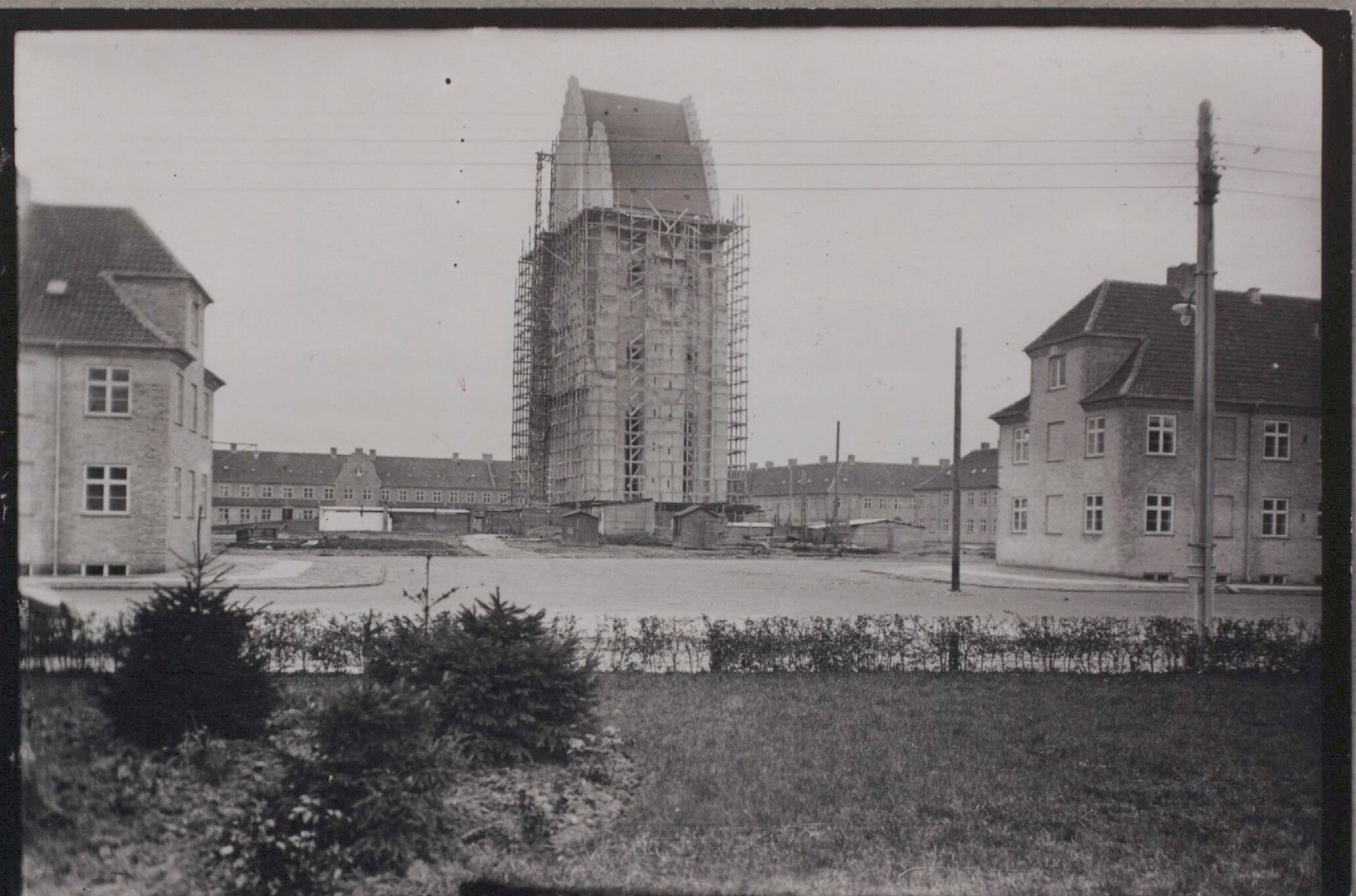
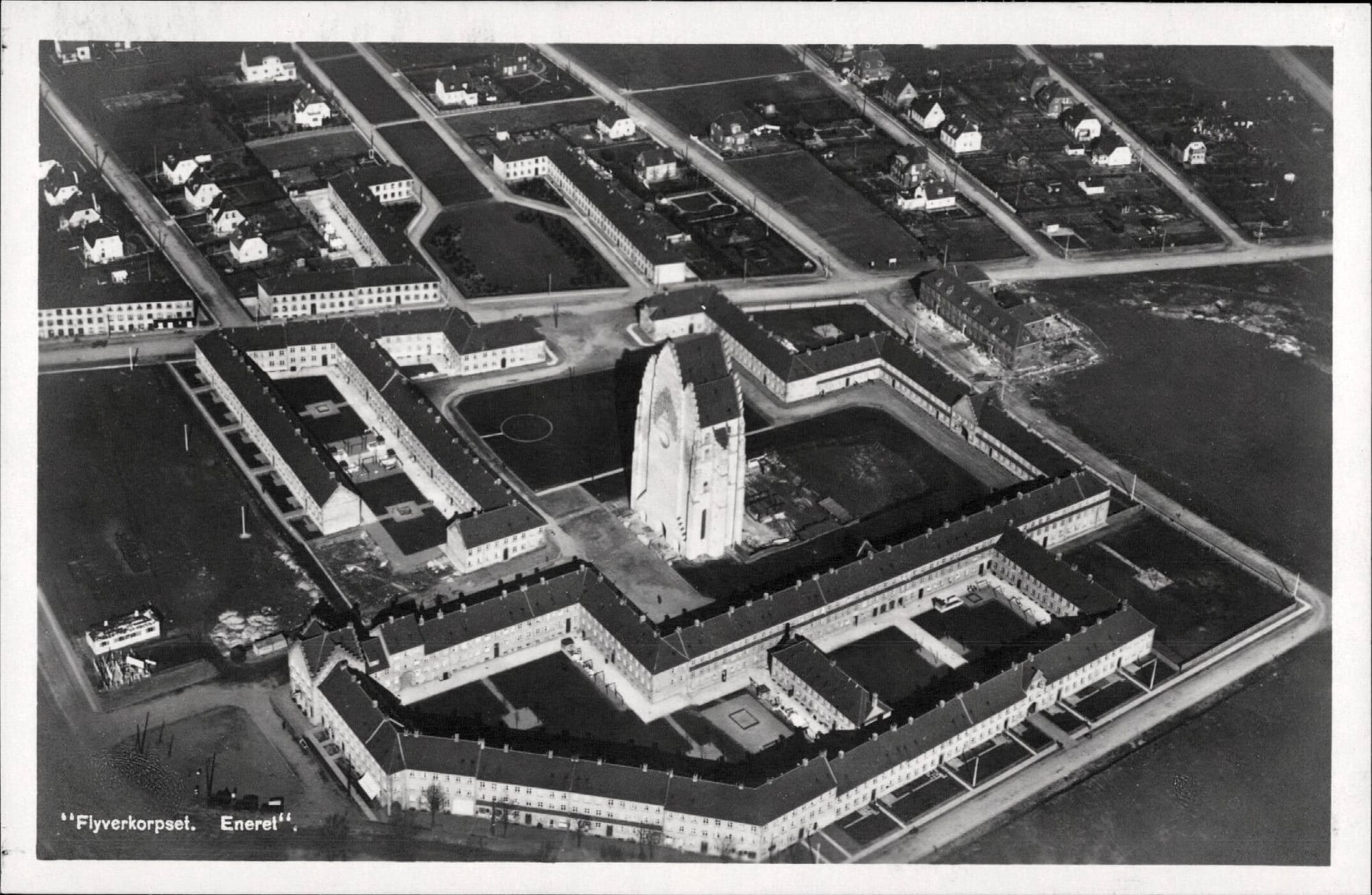
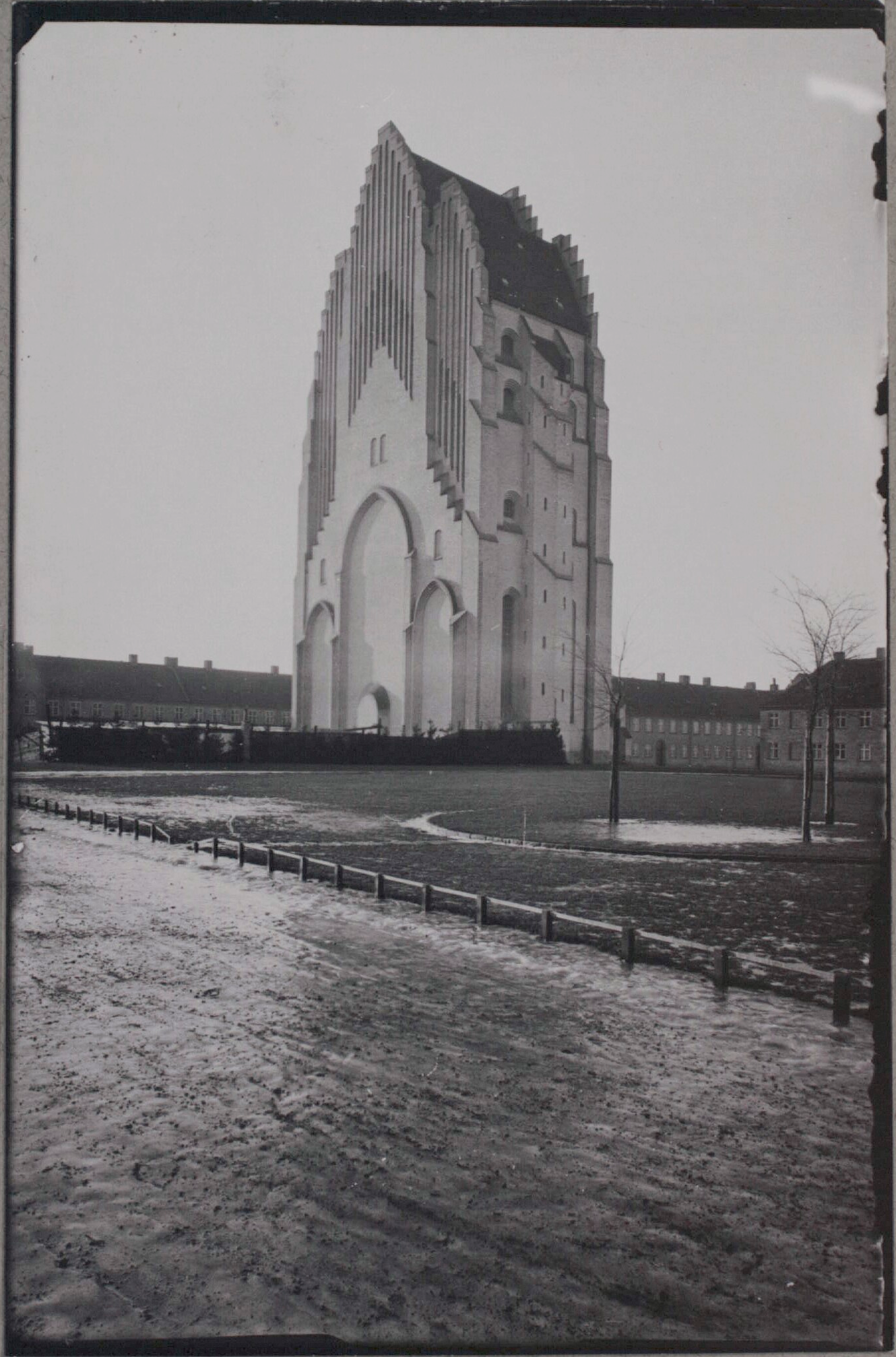
Side elevation sketch, Det Kongelige Bibliotek | Bispebjerg site plan, Det Kongelige Bibliotek | Front facade sketch, Det Kongelige Bibliotek | 1921 article on the cornerstone laying | 1924 article on the construction progress | Under construction, Holger Damgaard, Det Kongelige Bibliotek | Under Construction, Holger Damgaard, Det Kongelige Bibliotek | late 1920s aerial postcard, Det Kongelige Bibliotek | Under construction, Holger Damgaard, Det Kongelige Bibliotek
Blending gothic forms with National Romantic ideas as well as a proto-modern minimalism, Grundtvigs Kirke is so so so good. Construction began in 1921, starting with the tower. The first portion opened in 1927, and for a few years the parish congregated in an slightly unbalanced-looking tower-only church. P.V. Jensen Klint died in 1930, and his son Kaare Klint–who’d go on to become a famous Danish furniture designer–worked with master mason Valdemar Jørgensen to finish the building. This was truly a Klint family affair–his daughter, sculptor Helle Klint Bentsen, did the crucifix.
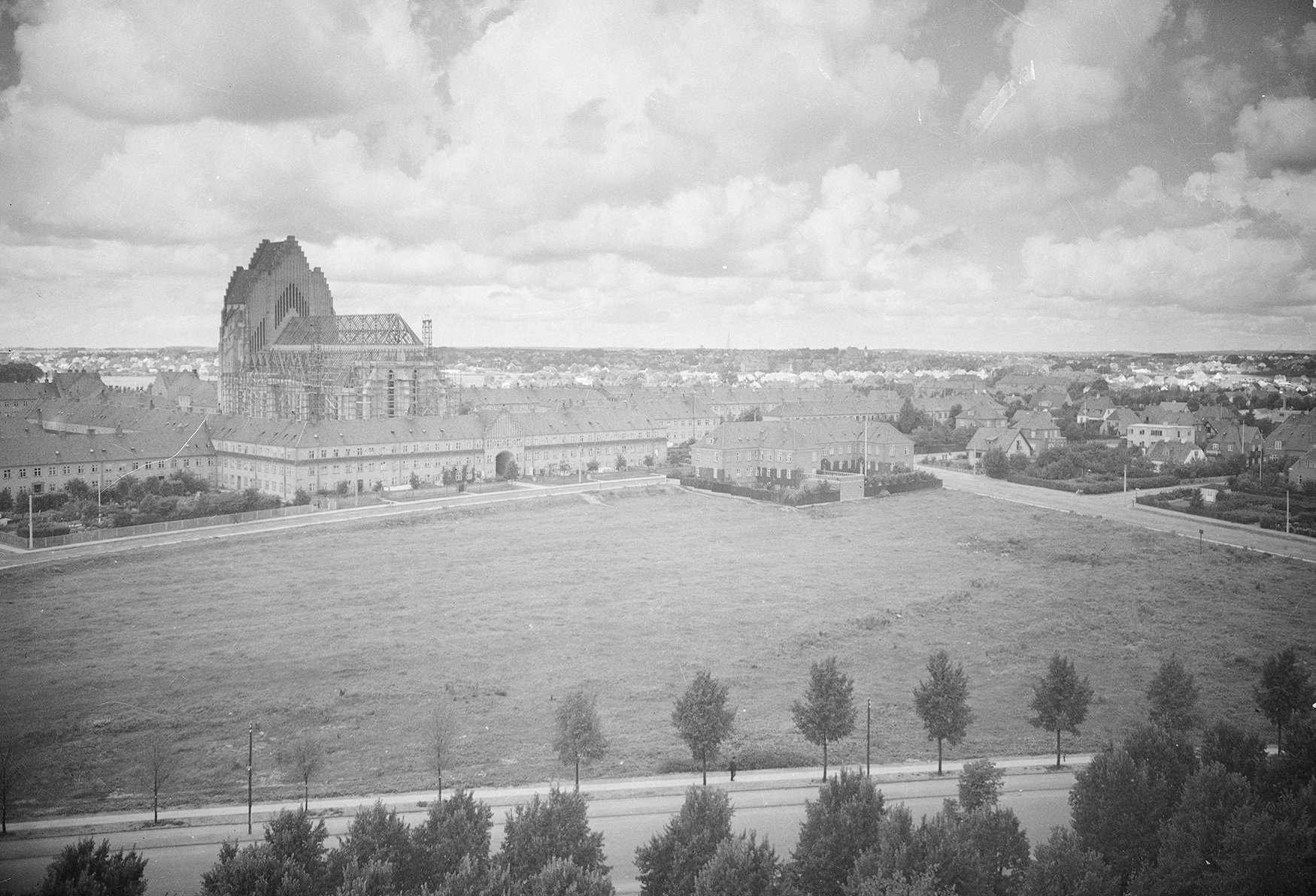
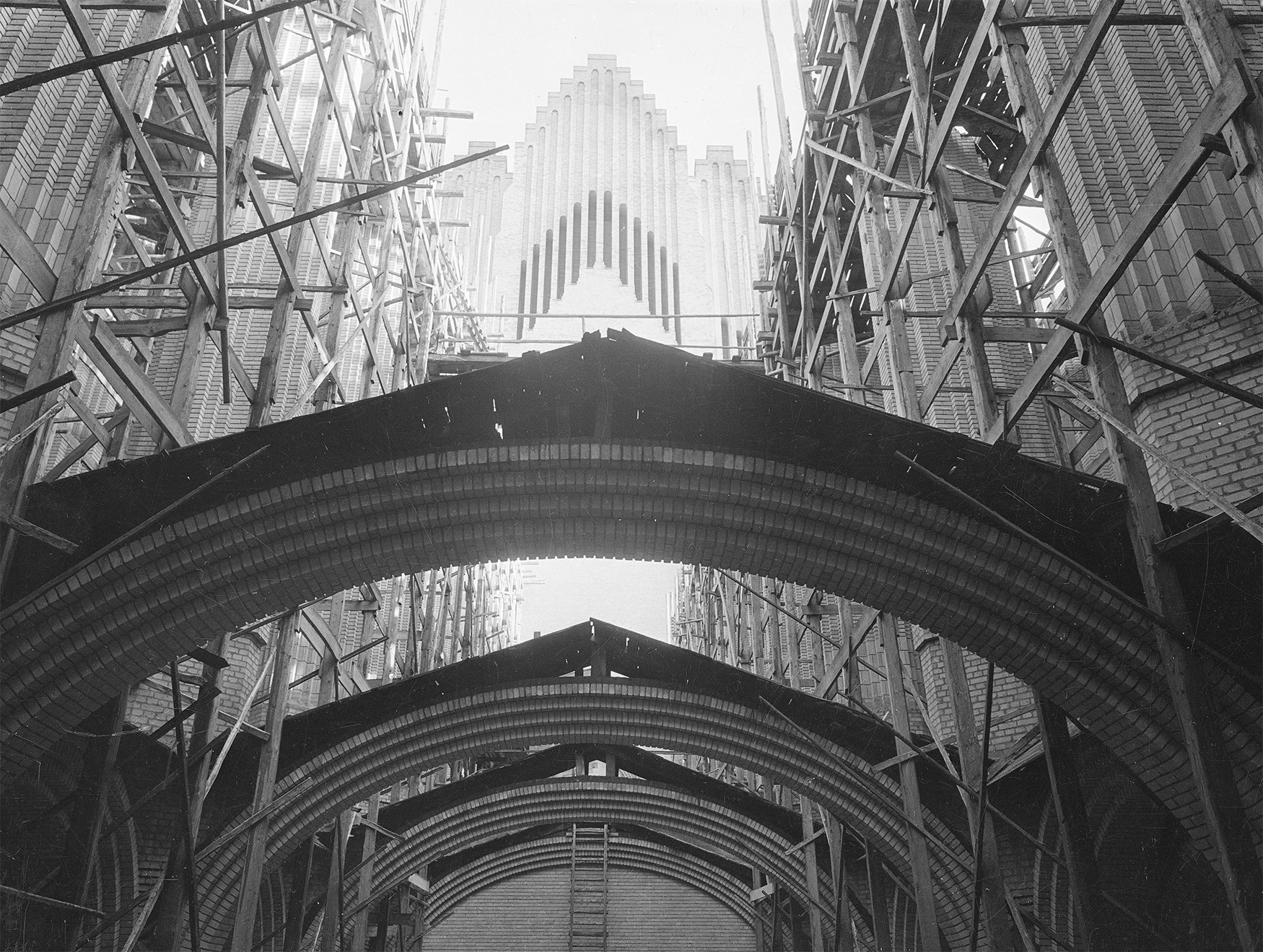
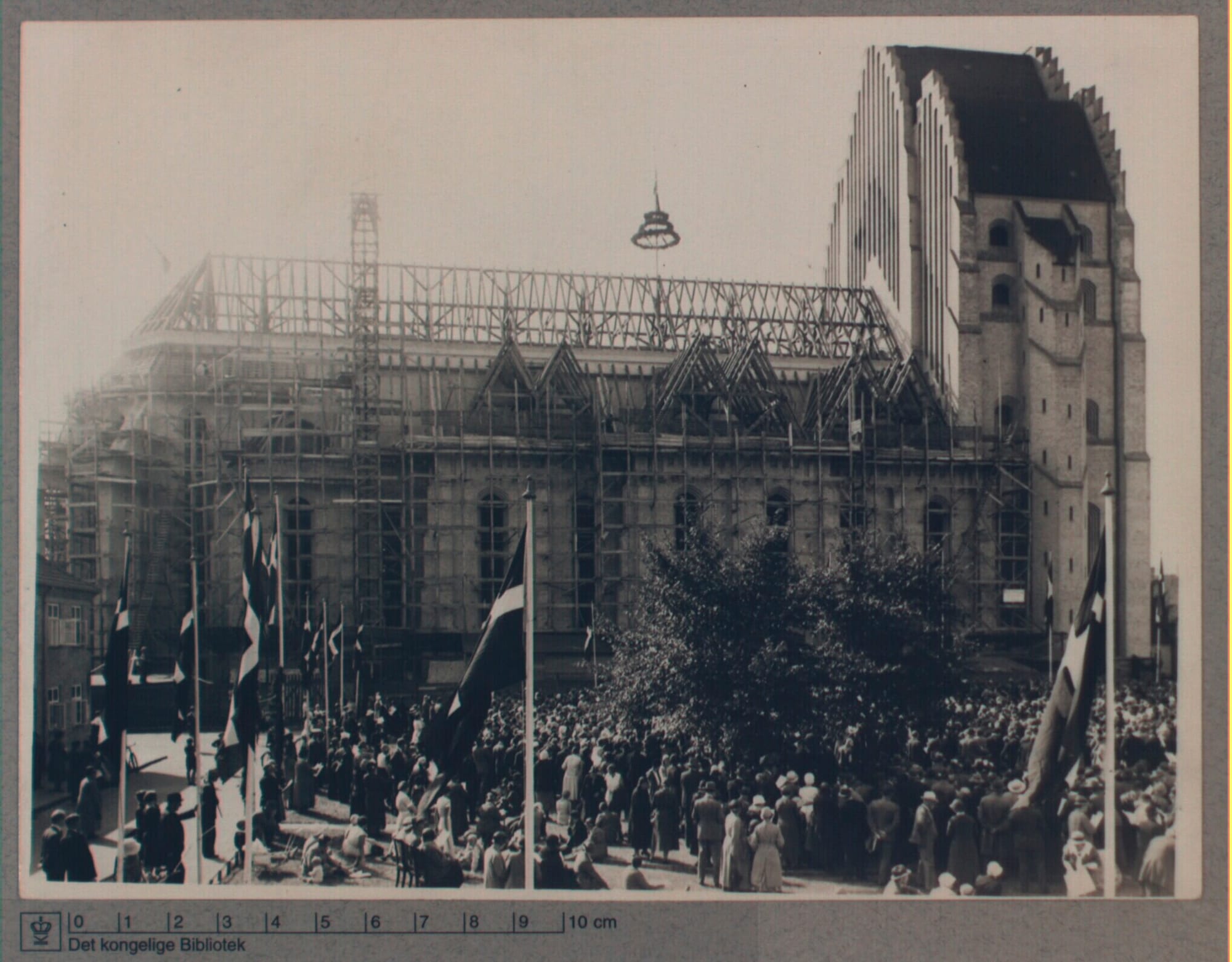
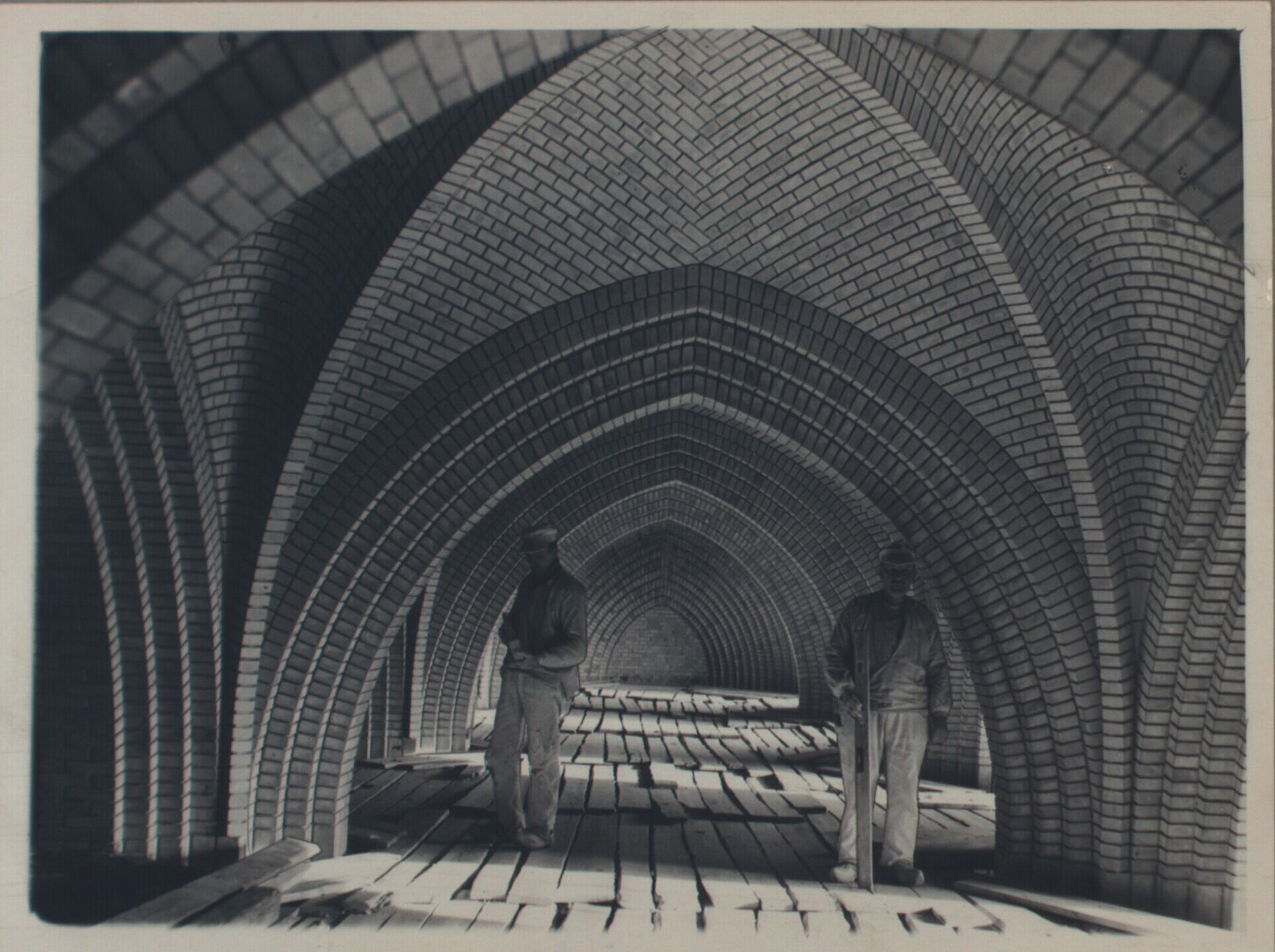
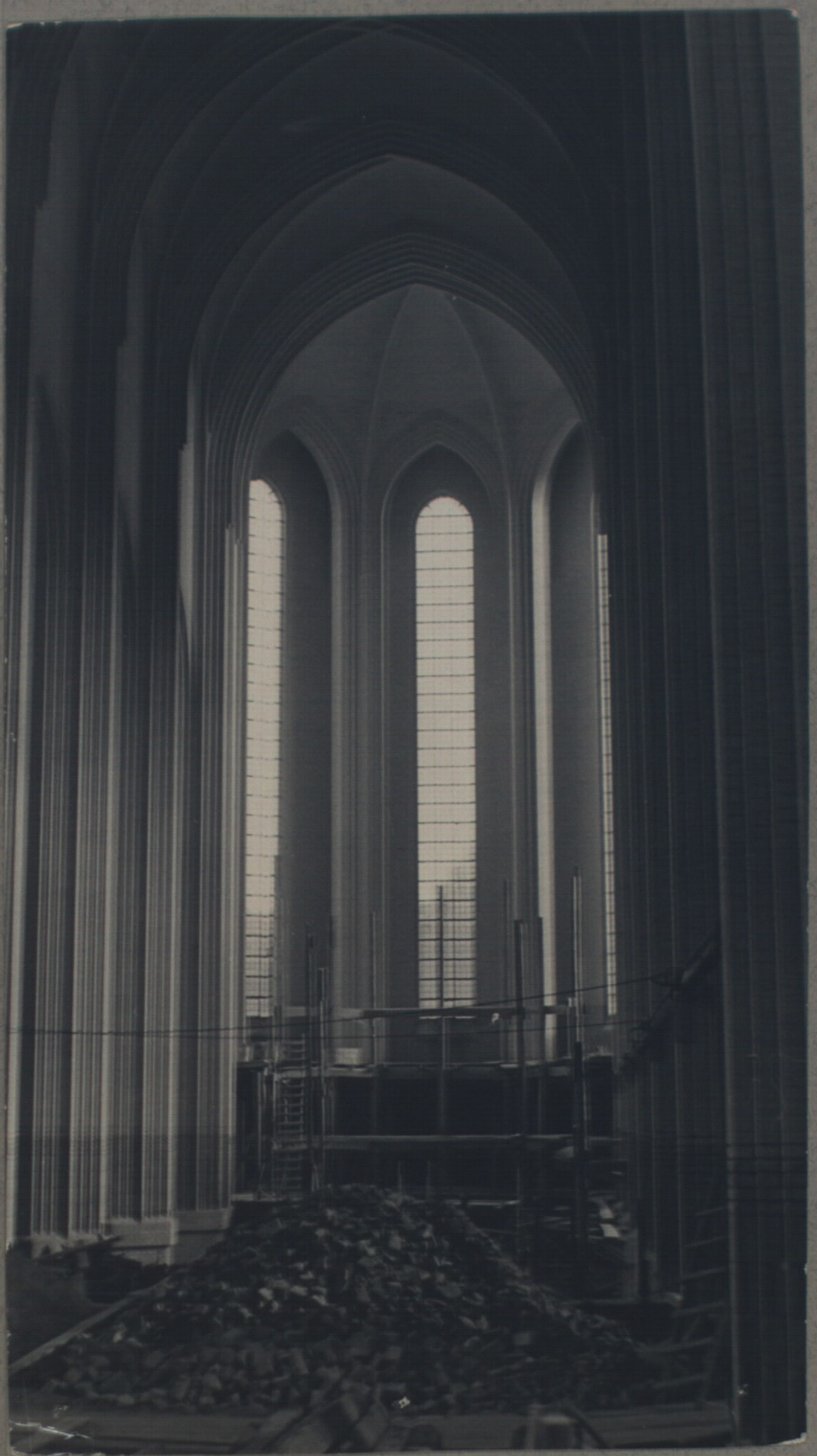
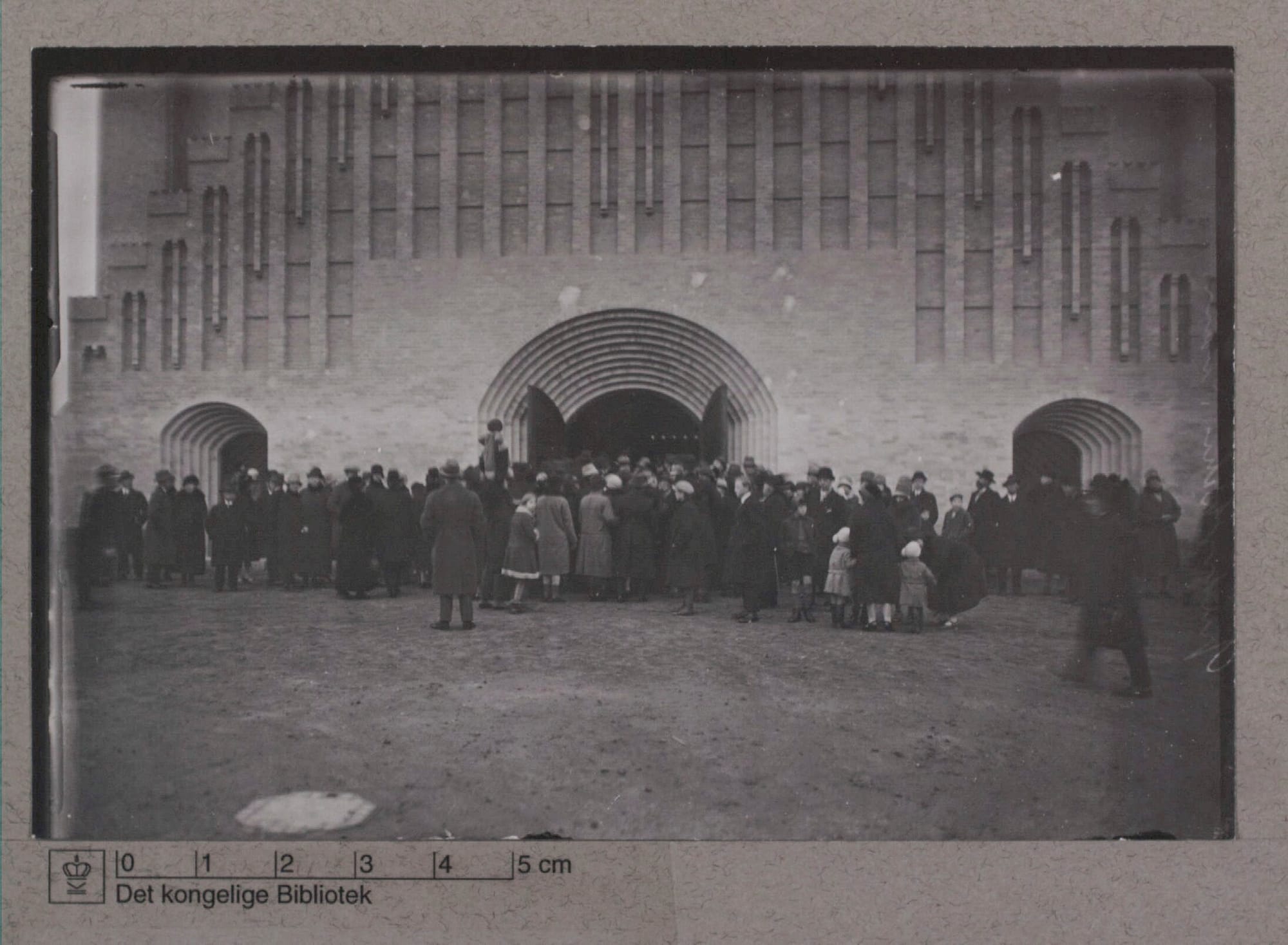
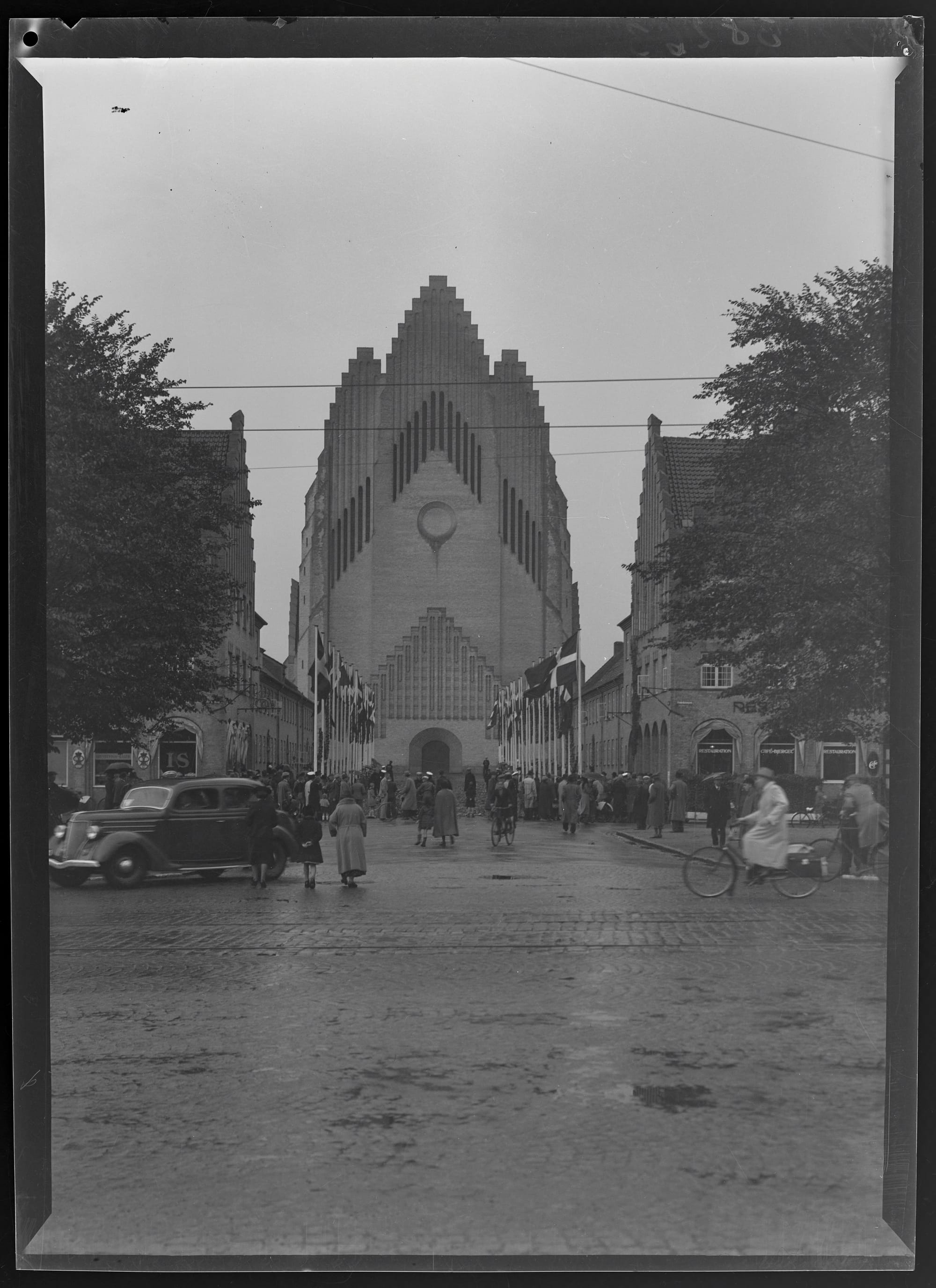
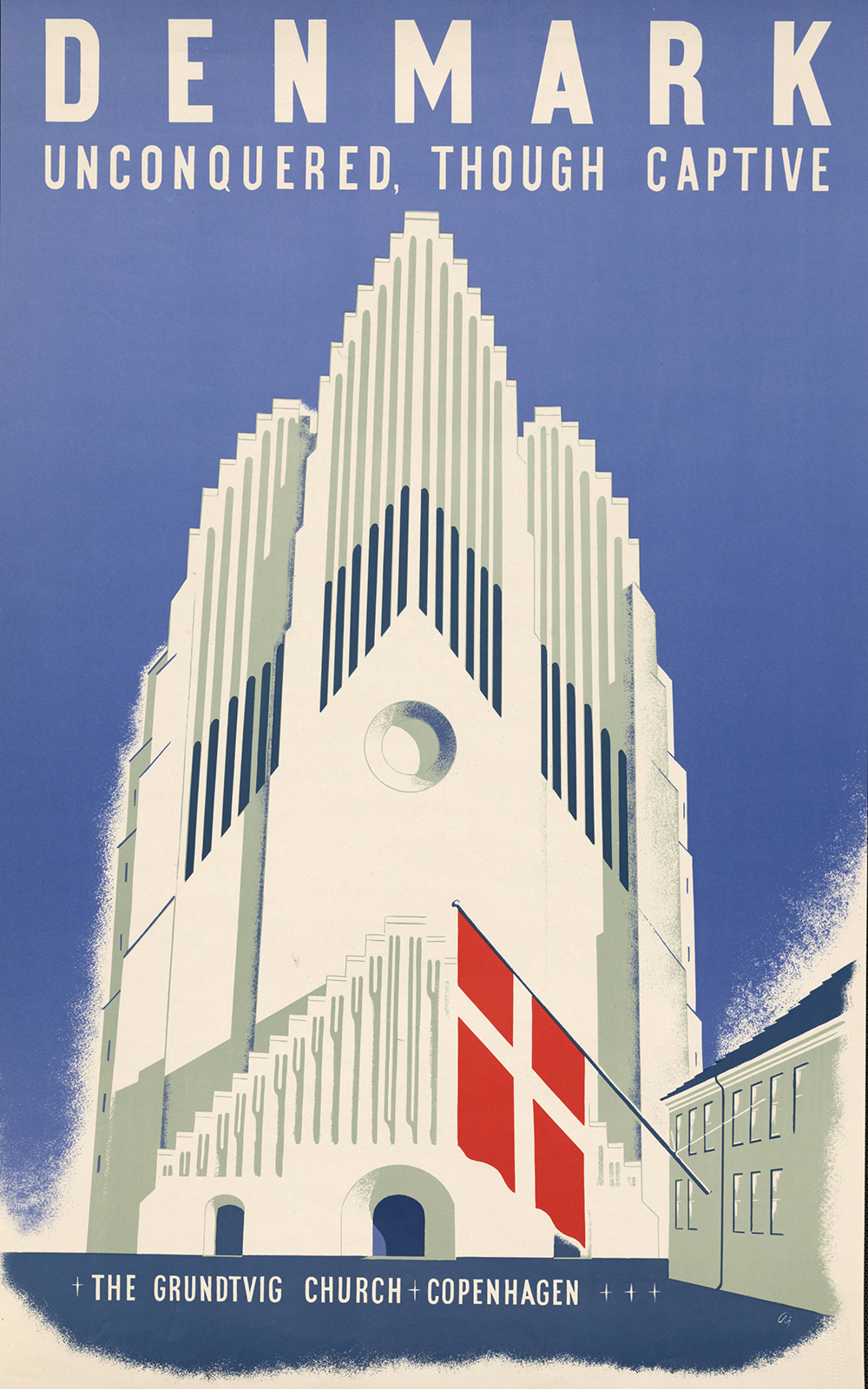
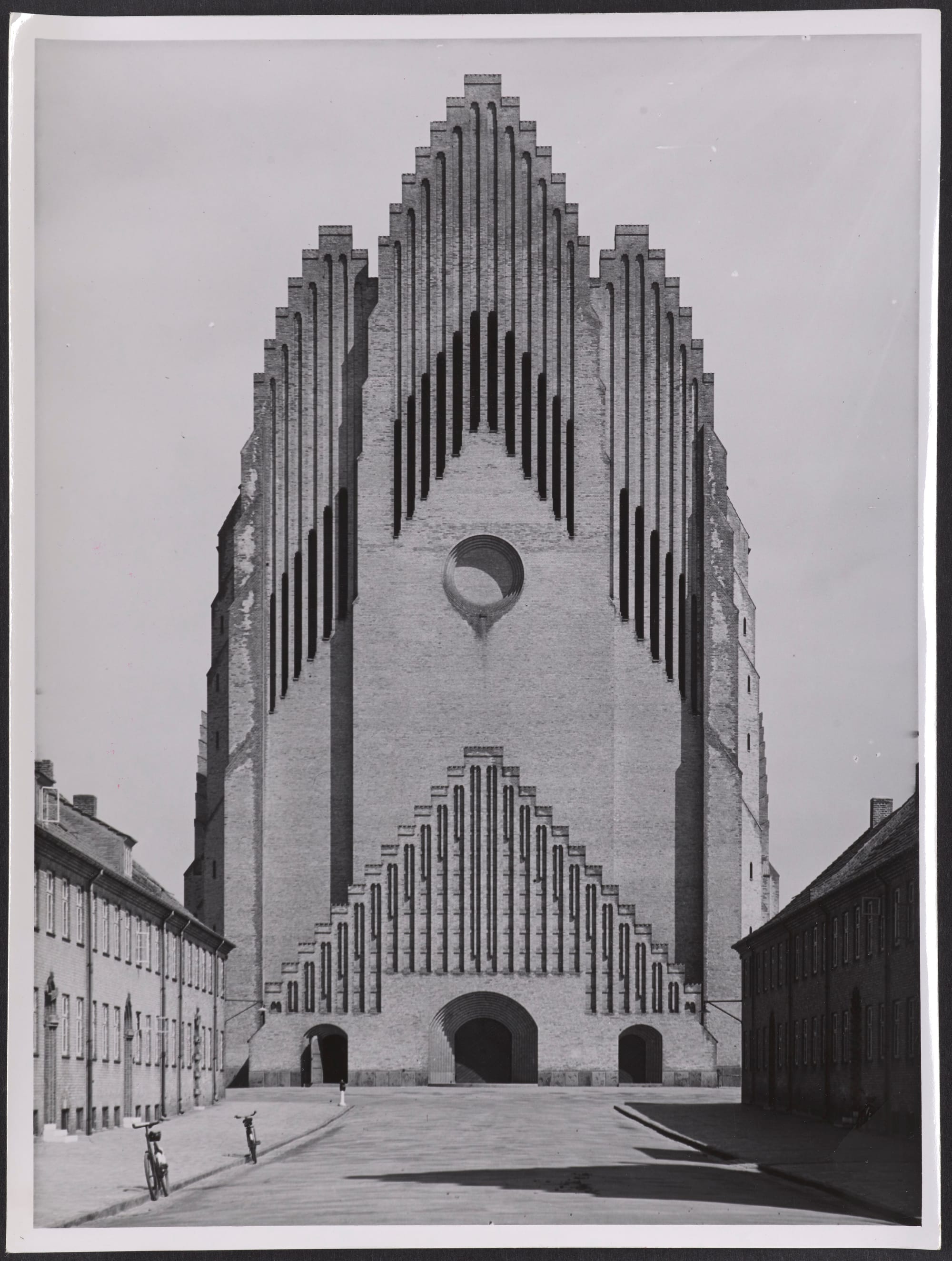
Under construction, 1930s, Jonals Co., Det Kongelige Bibliotek | Sanctuary construction, Jonals Co., Det Kongelige Bibliotek | Under construction, 1933, Det Kongelige Bibliotek | Masons working, Det Kongelige Bibliotek | Sanctuary construction with a pile of bricks, 1938, Det Kongelige Bibliotek | Dedication celebration, 1927, Holger Damgaard, Det Kongelige Bibliotek | Dedication celebration, 1940, Studio Elfelt, Det Kongelige Bibliotek | World War 2 poster, Milner Library at Illinois State University | Hans Robertson, Undated, Det Kongelige Bibliotek
Made of six million identical local bricks, the completed Grundtvigs Kirke opened in 1940. A fitting and incredible monument to N.F.S. Grundtvig, sure, but also a striking reminder to just go for it.

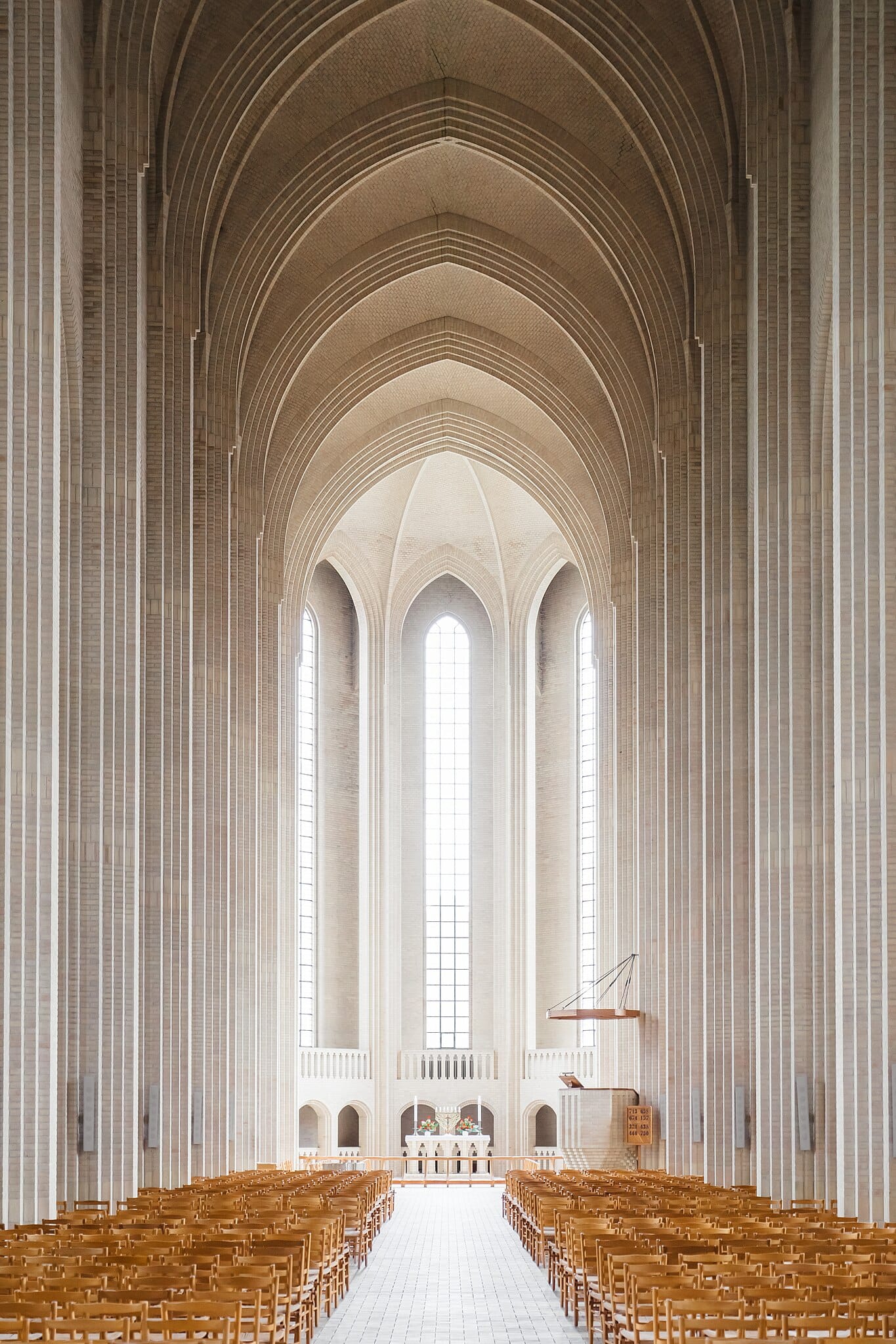
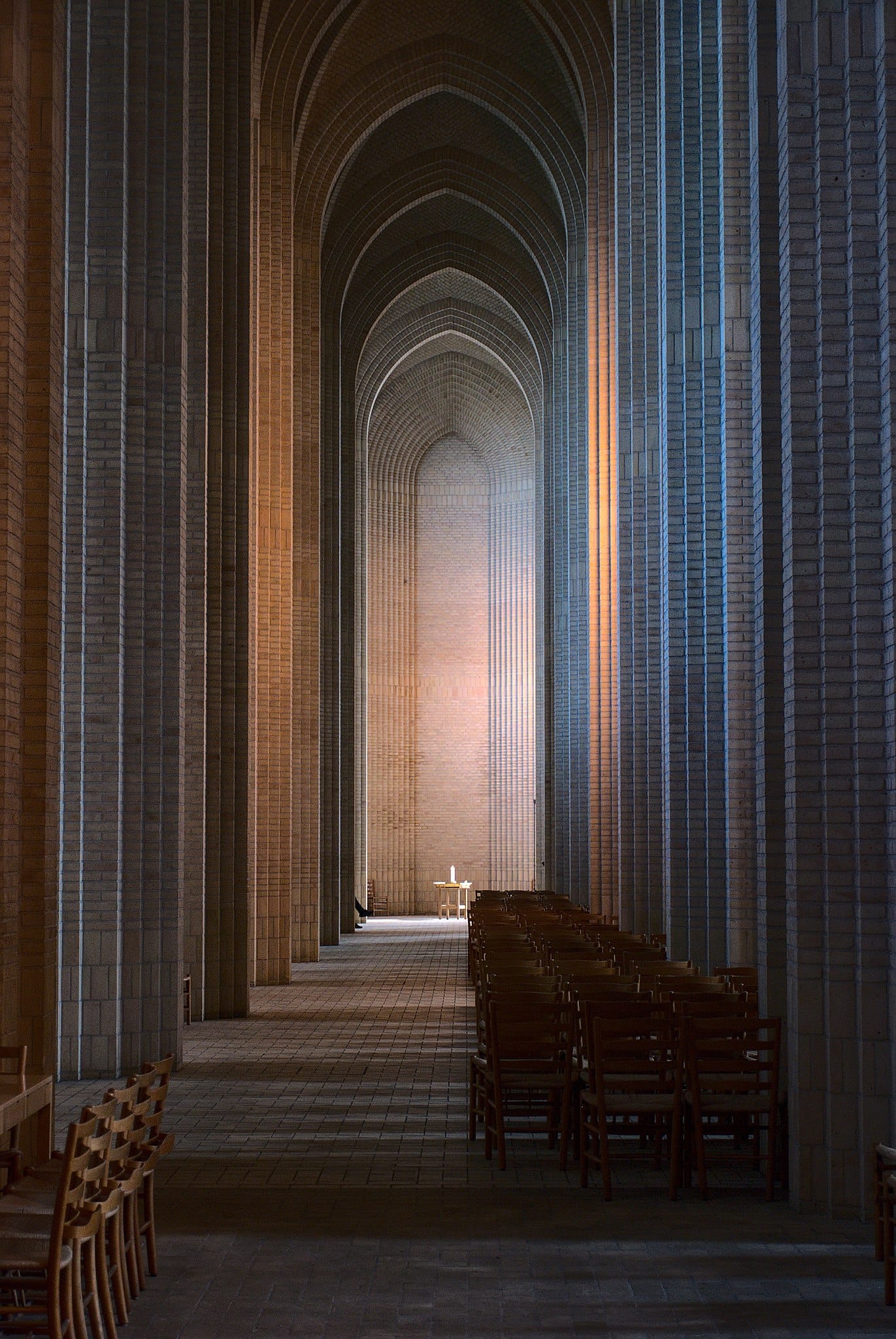
The first one is mine, the next two are from Wikimedia Commons (John Towner and flöschen)
Production Files
Further reading:
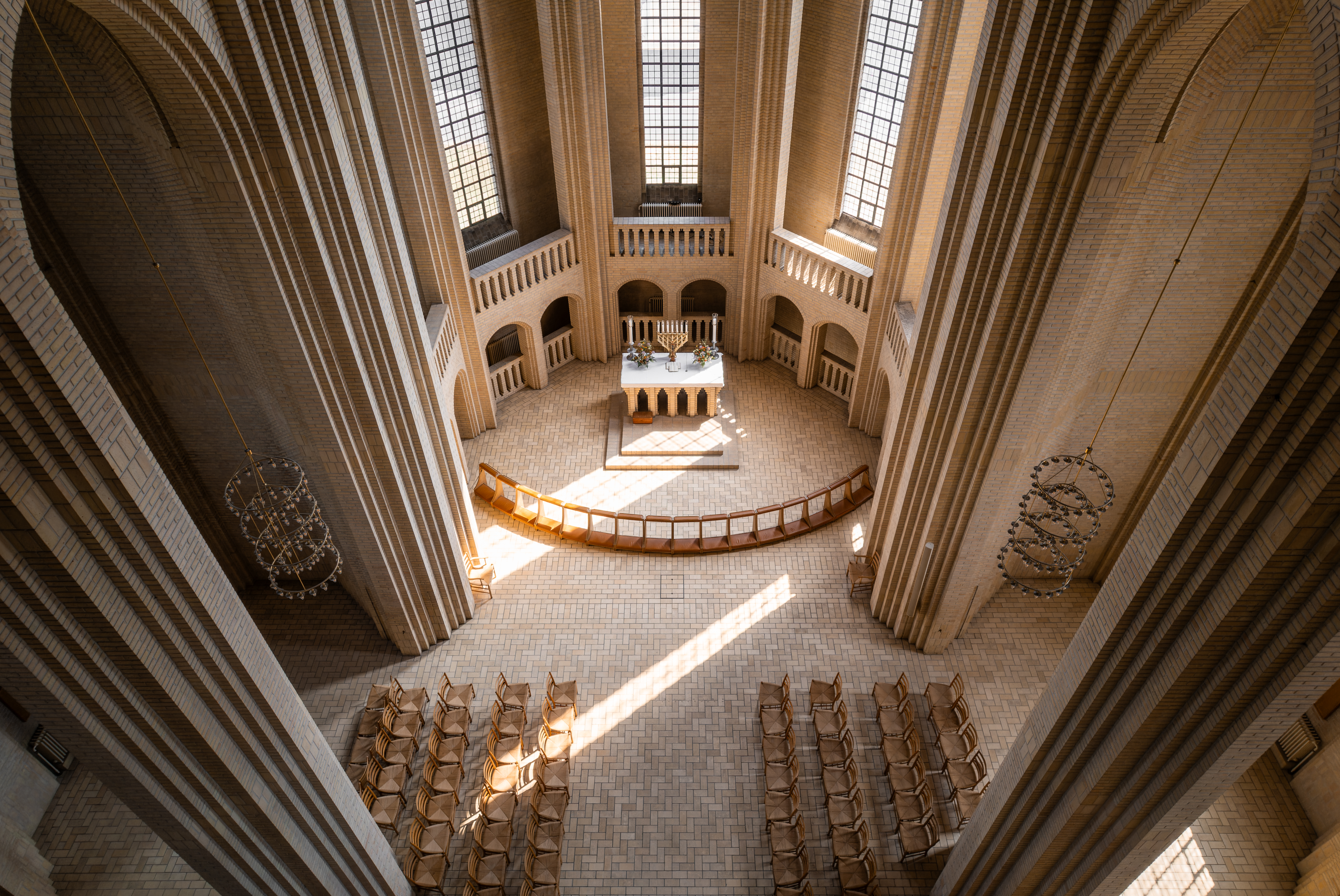


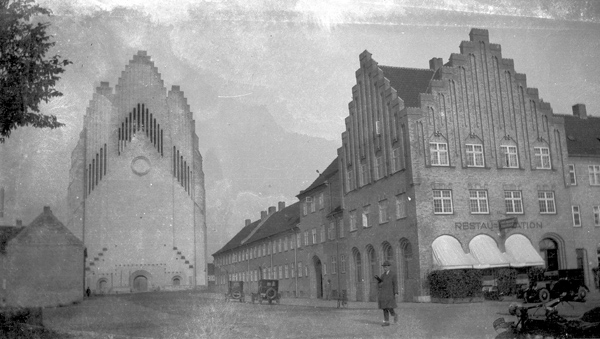
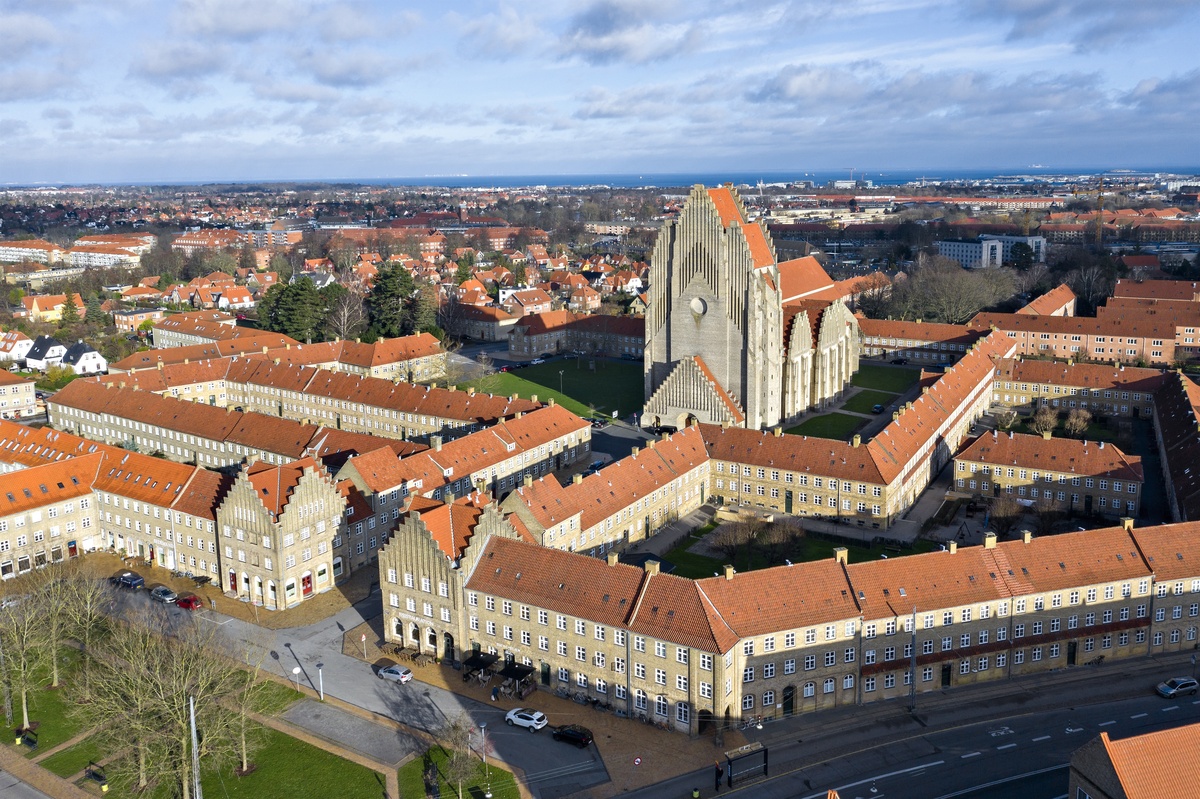
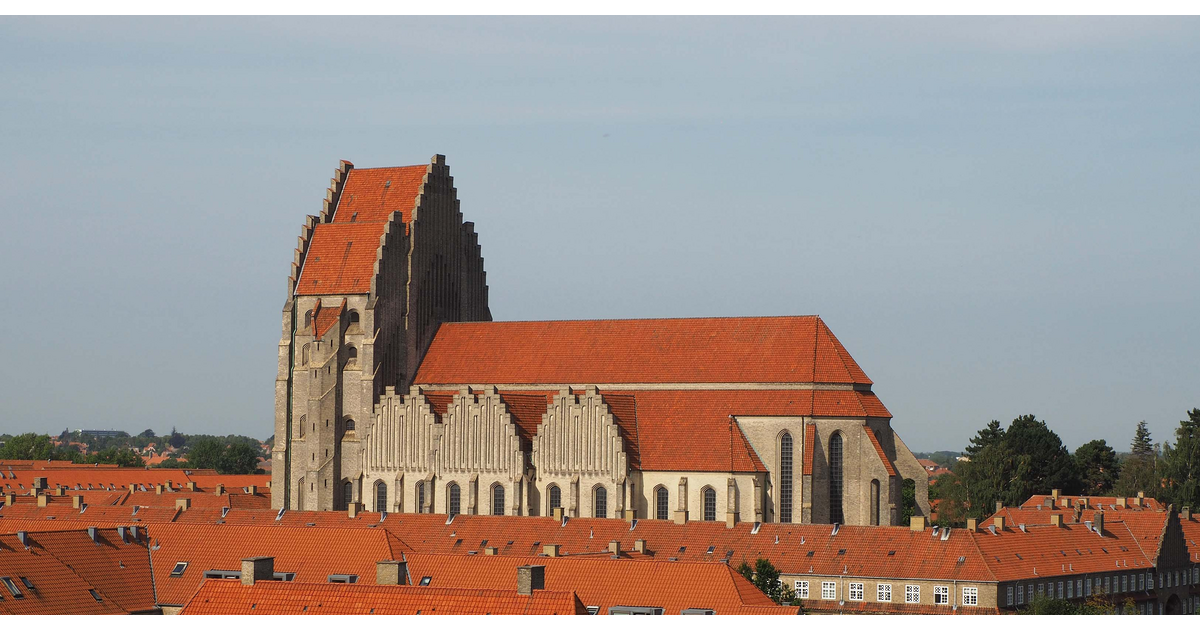
- P.V. Jensen Klint: the headstrong master builder, by Thomas Bo Jensen
- Skjold Arendt, 'Grundtvigs Kirke og Bispebjerg – en byplanlægningsakt'
- Christian Sandbjerg Hansen, "Visions of the North-West: Making a Working-Class Neighborhood in Copenhagen, Denmark, 1900–1950"
These design drawings are incredible. I especially like the ones that compare its scale to other churches in Copenhagen–Andreaskirke, Skt. Knuds Kirke, and Brønshøj Kirke.
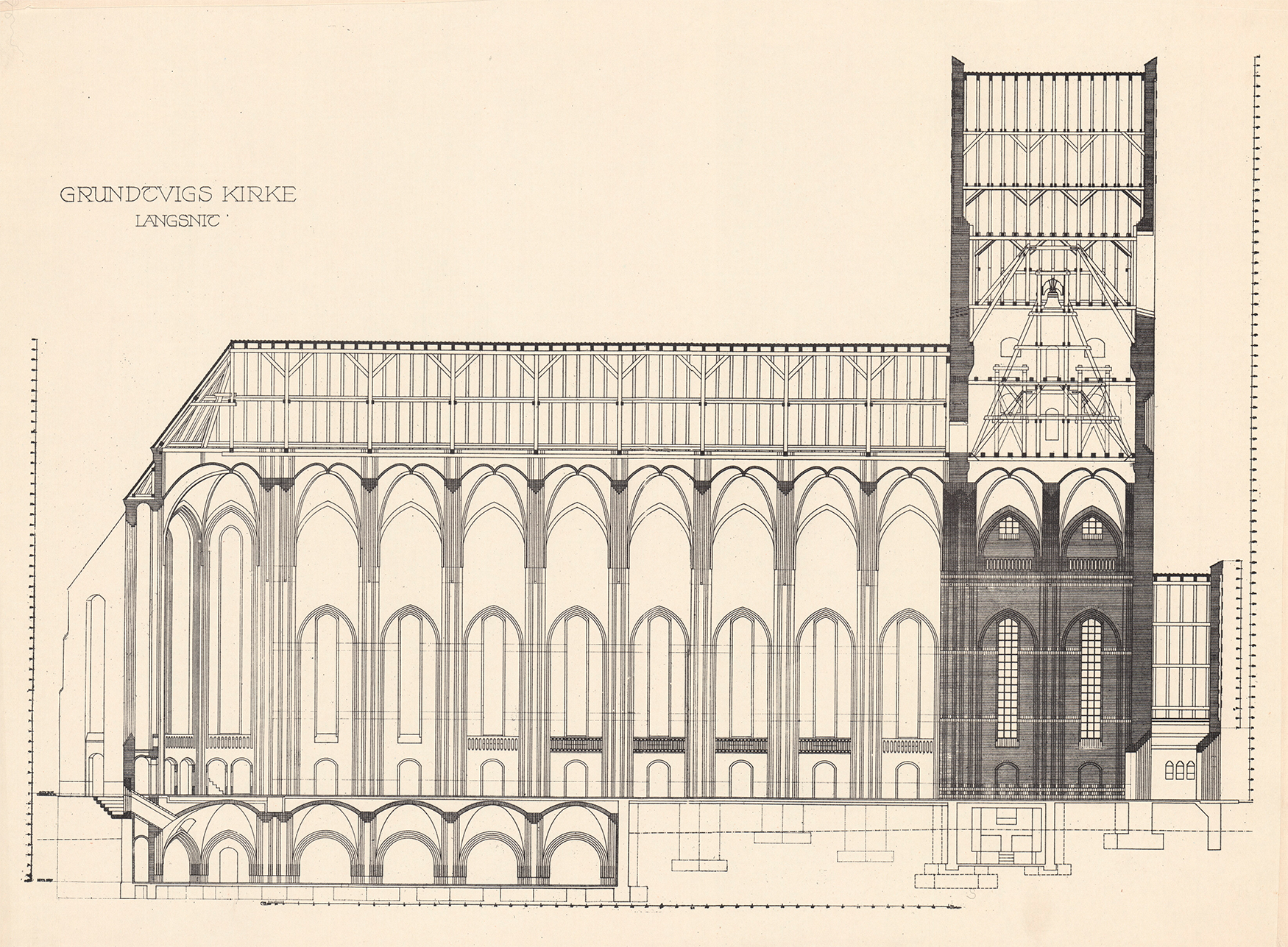
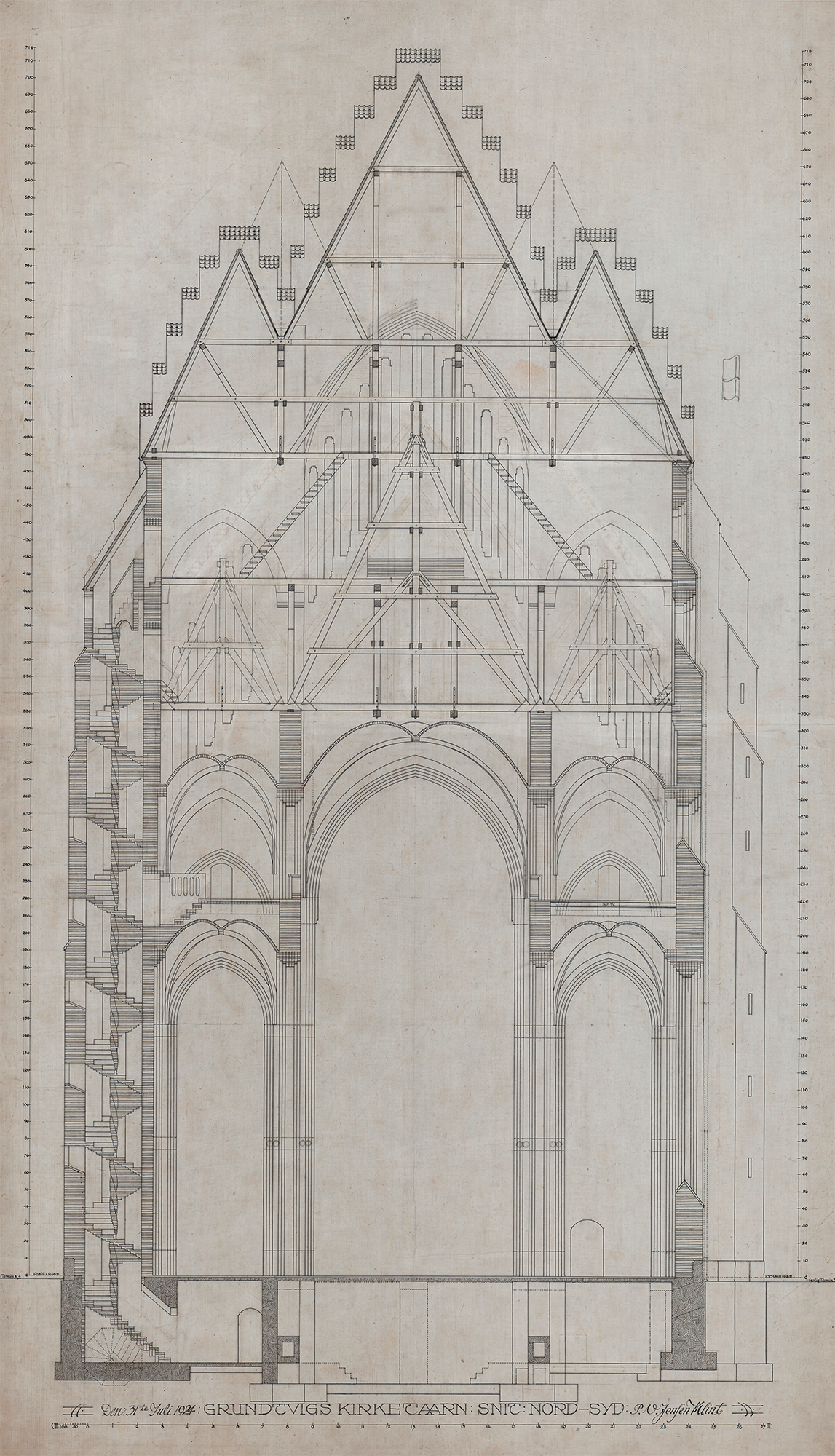
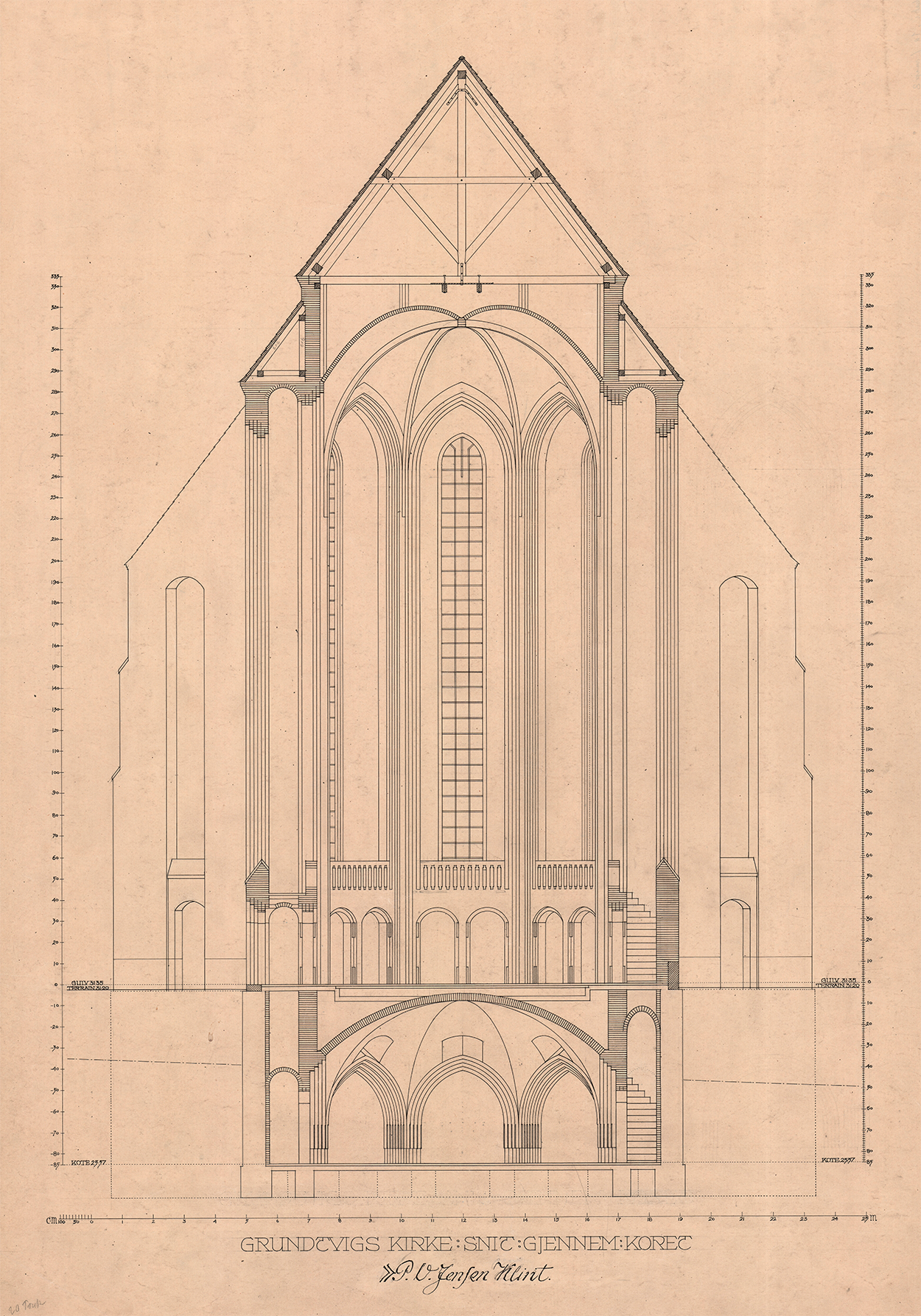
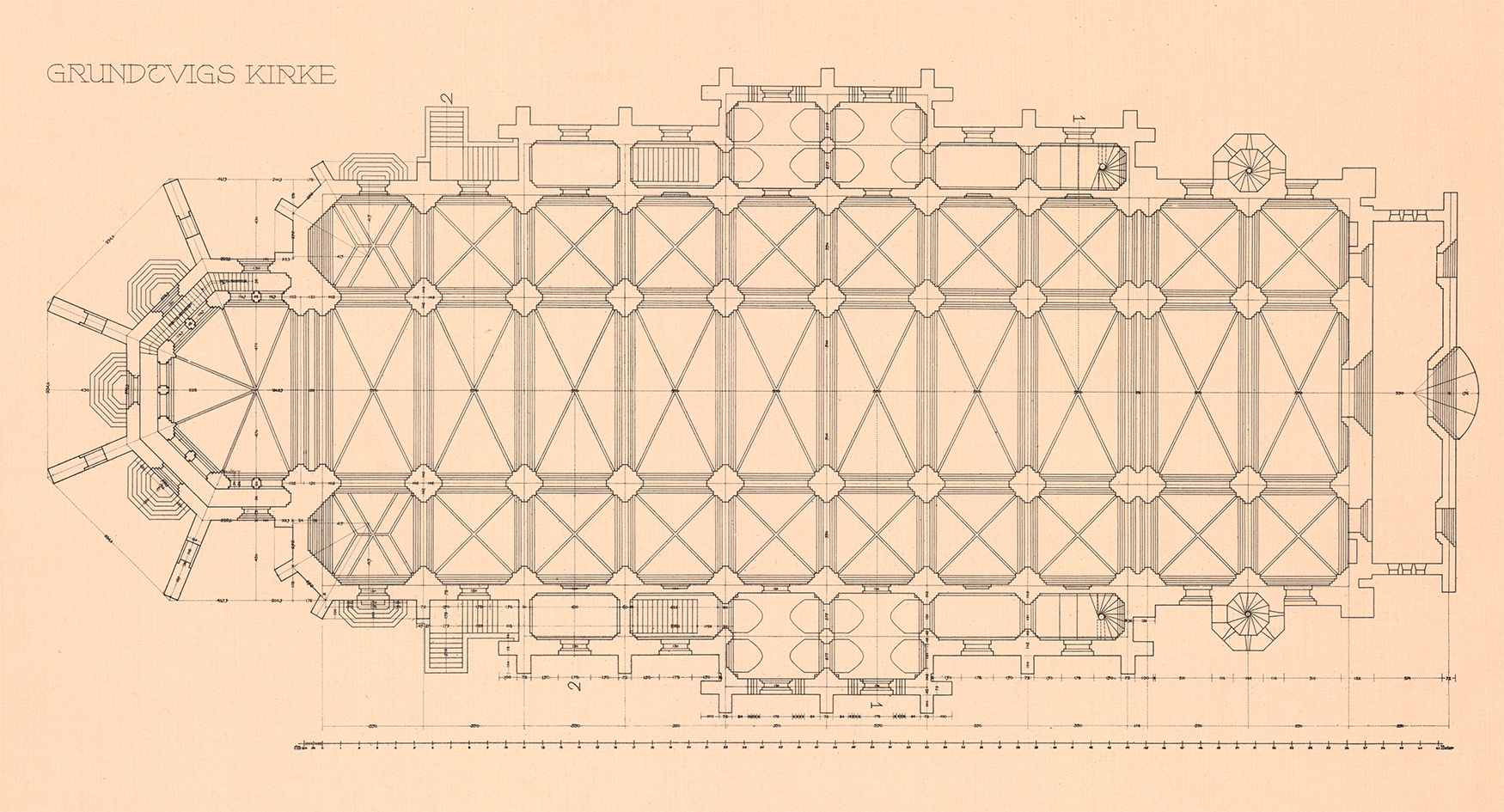
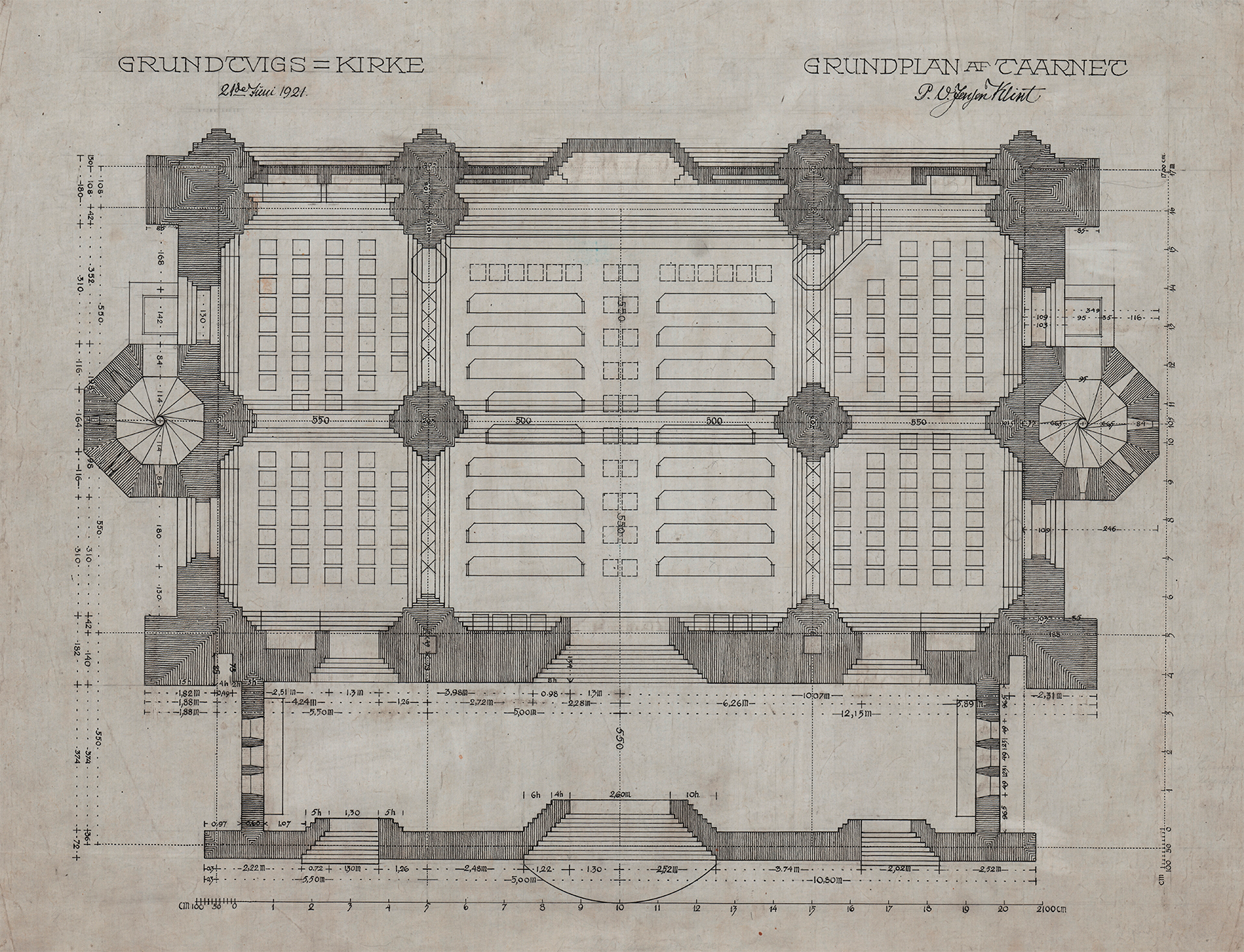
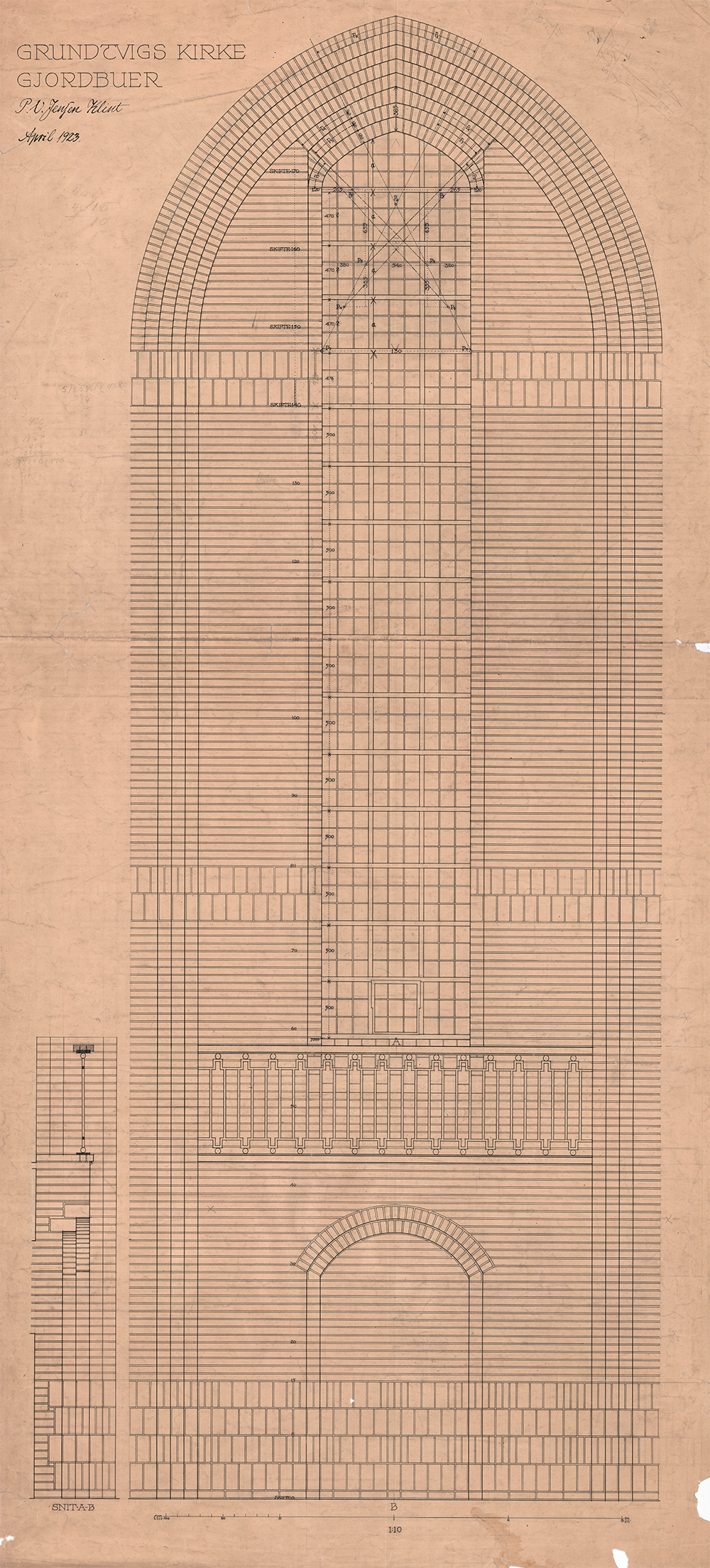
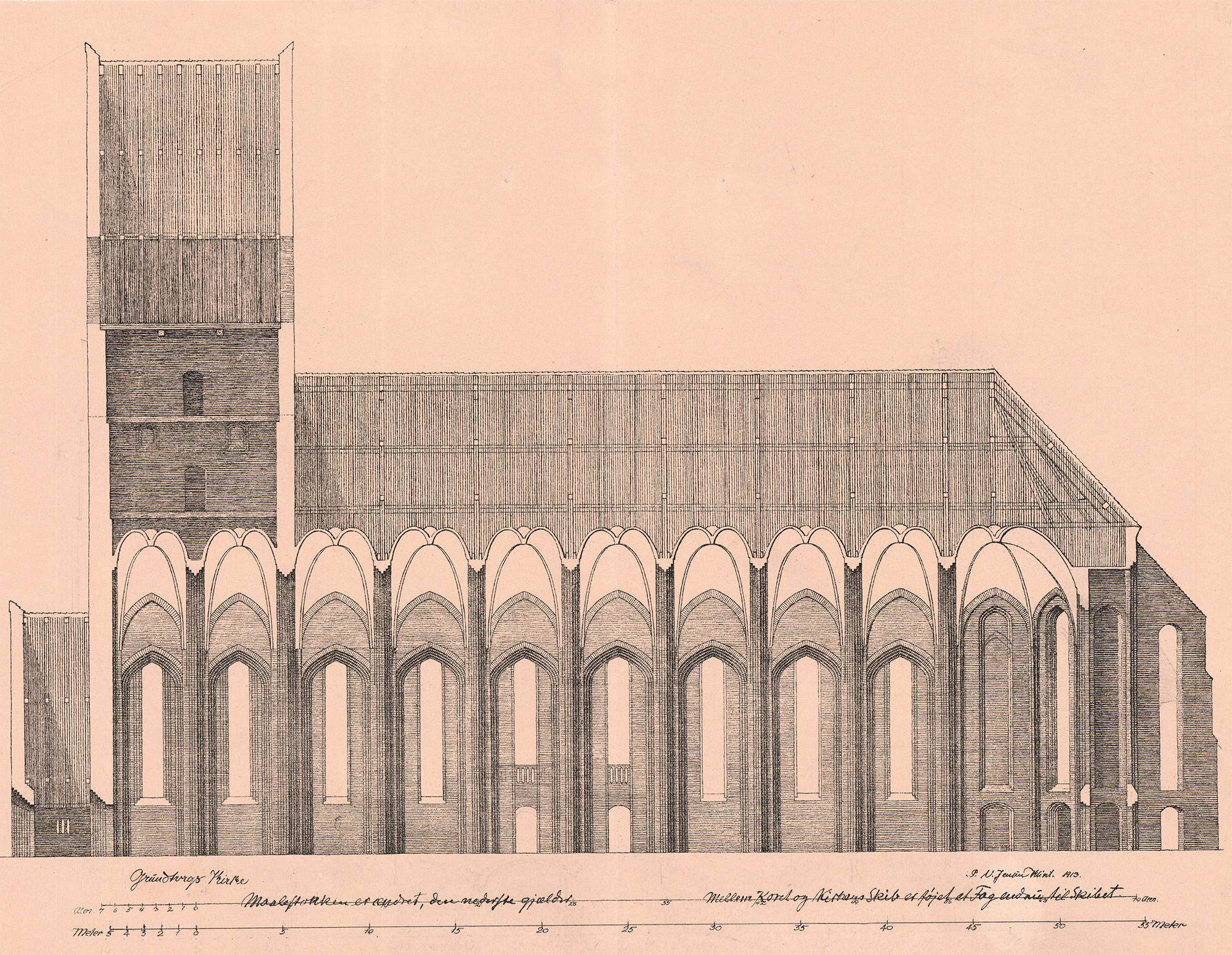
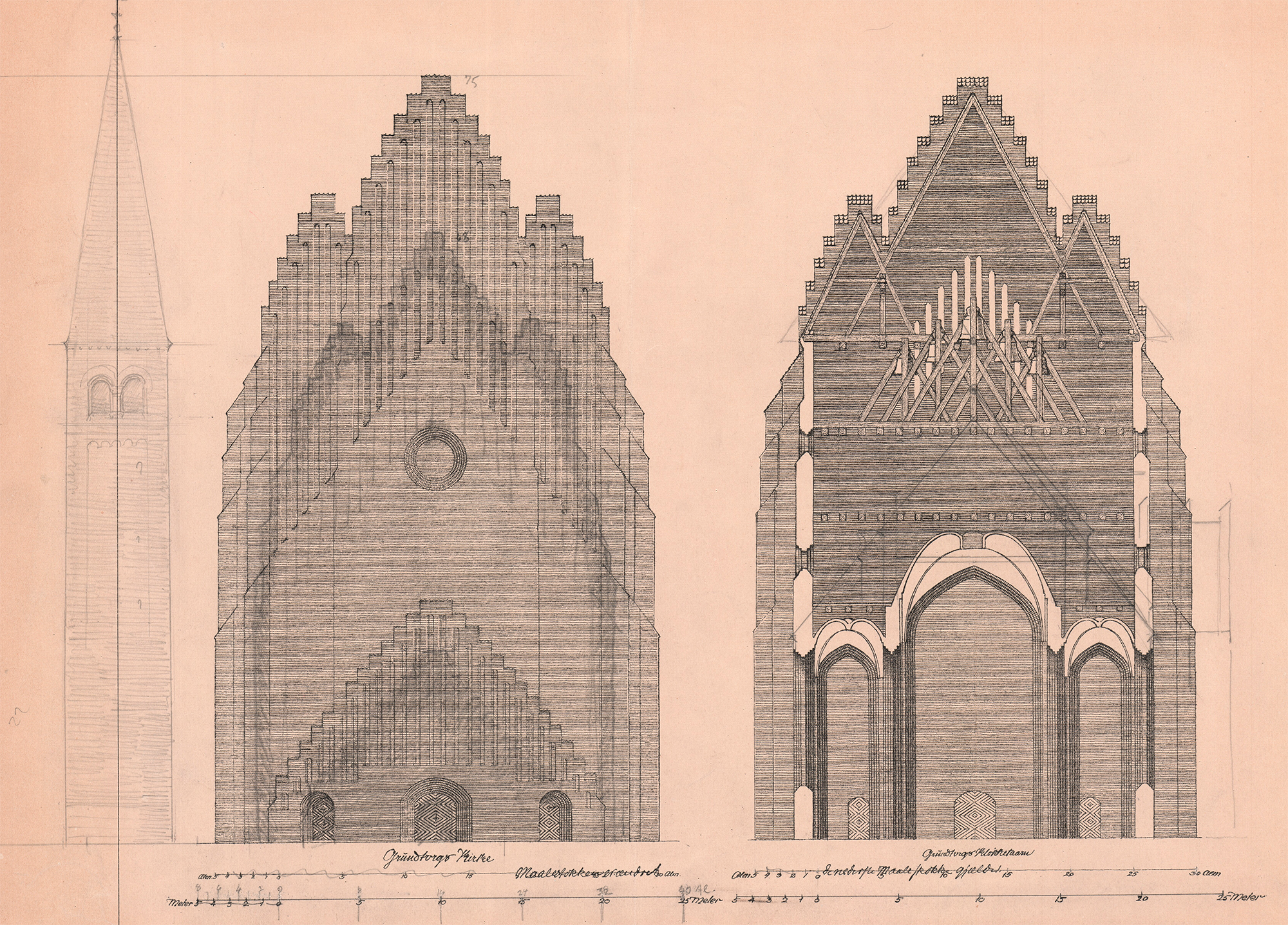
All of these are from Det Kongelige Bibliotek: drawing 1, drawing 2, drawing 3, drawing 4, drawing 5, drawing 6, drawing 7, drawing 8
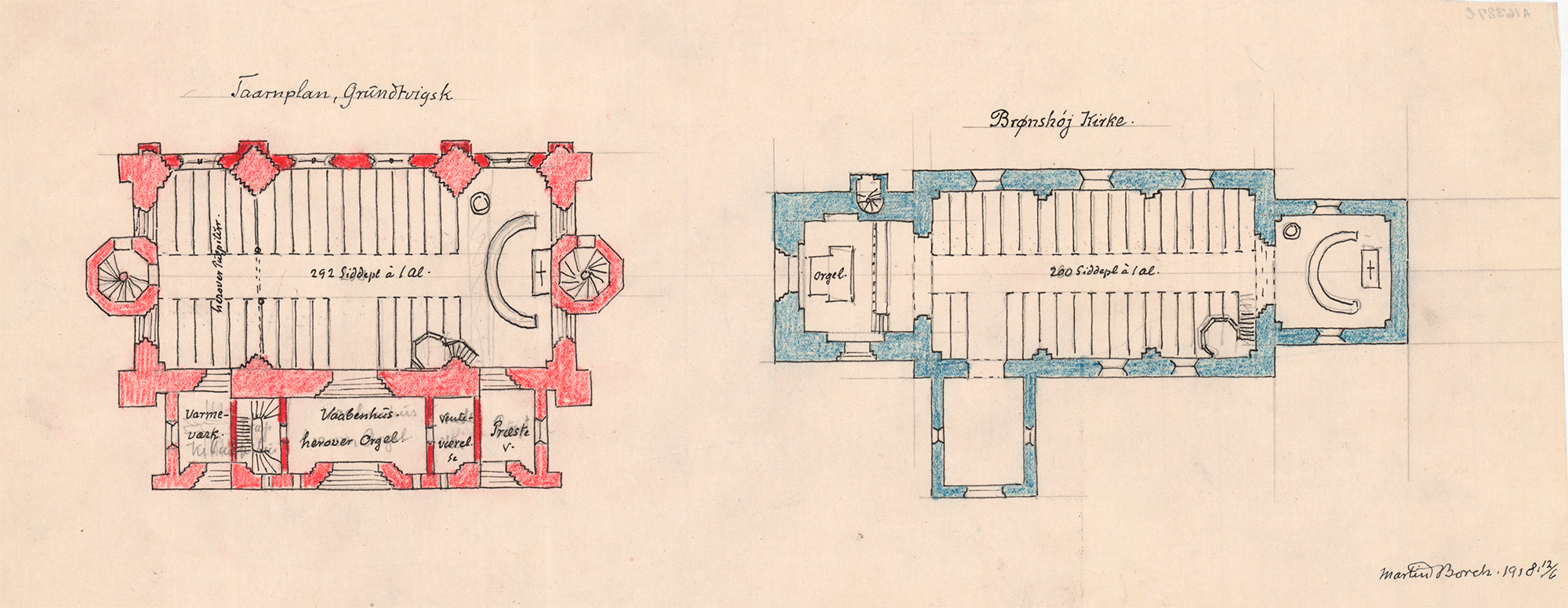
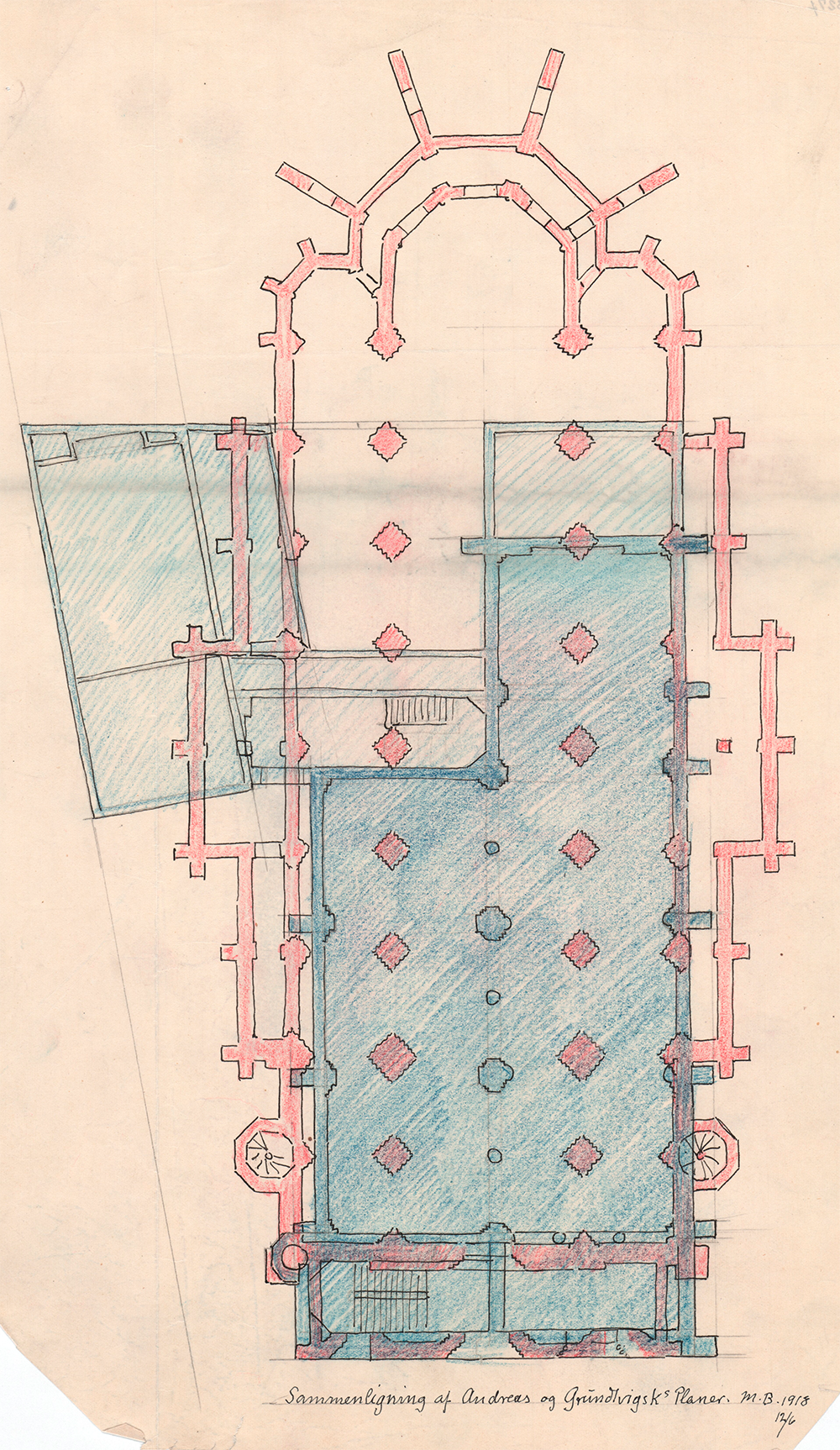
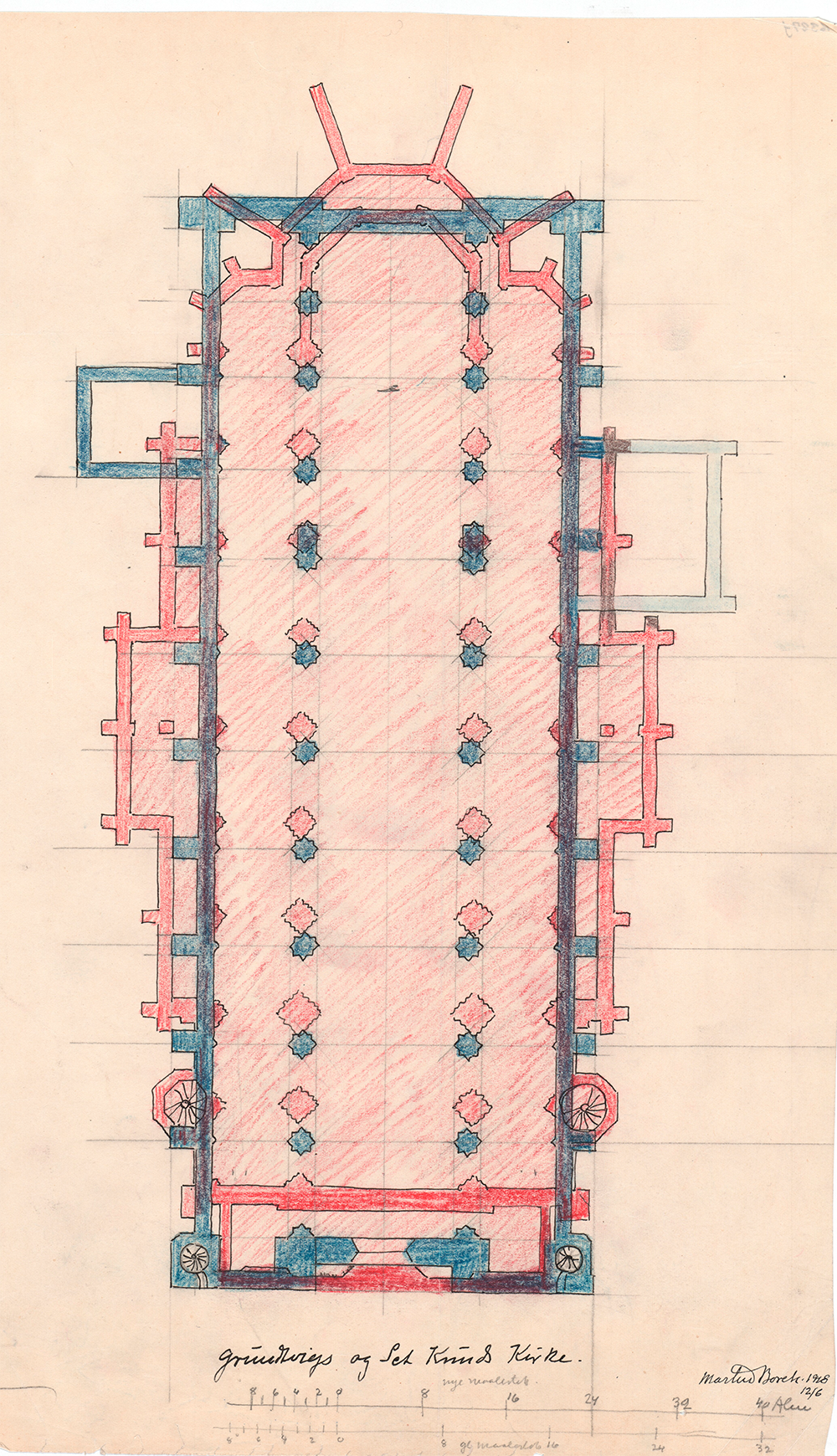
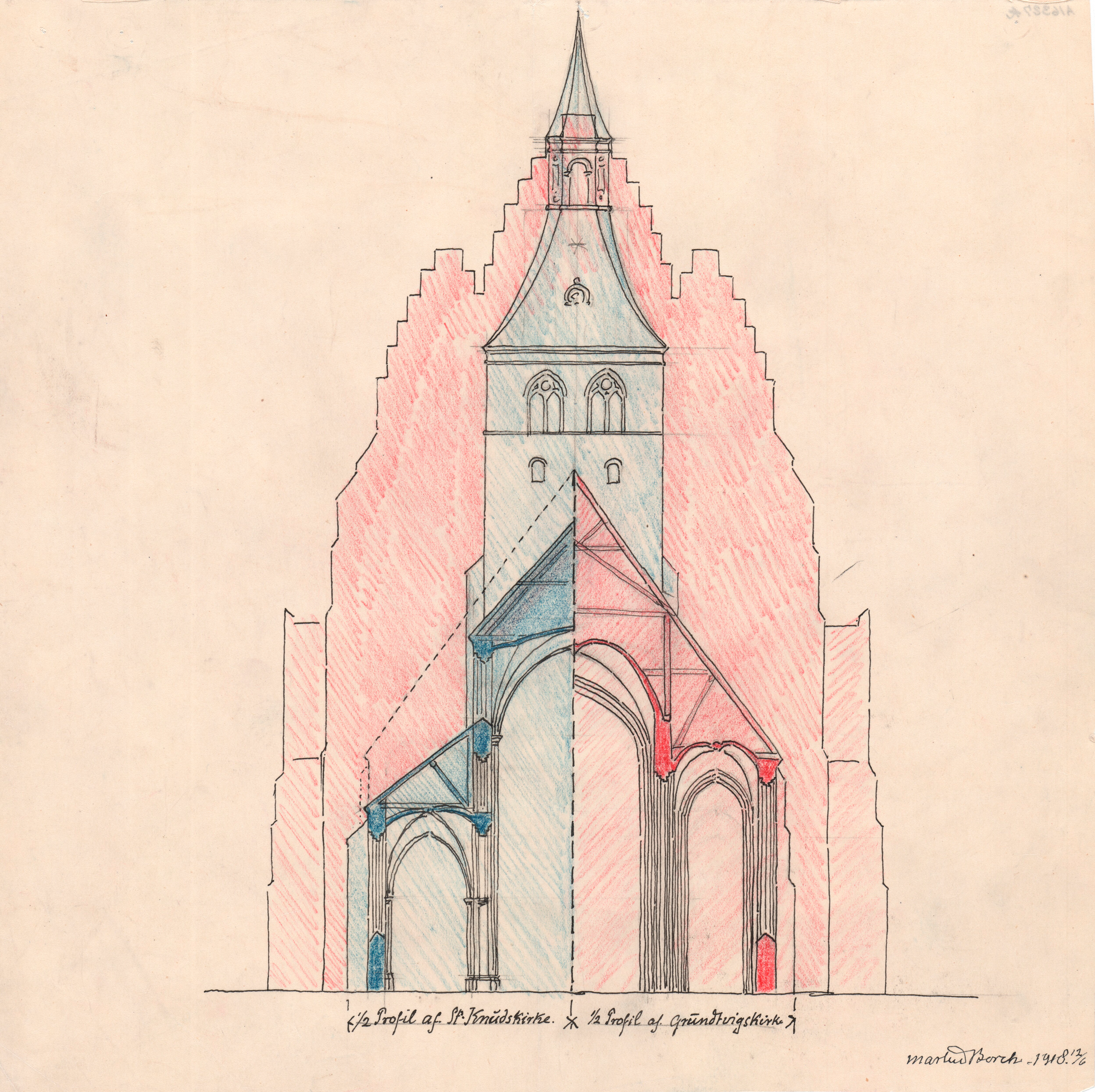
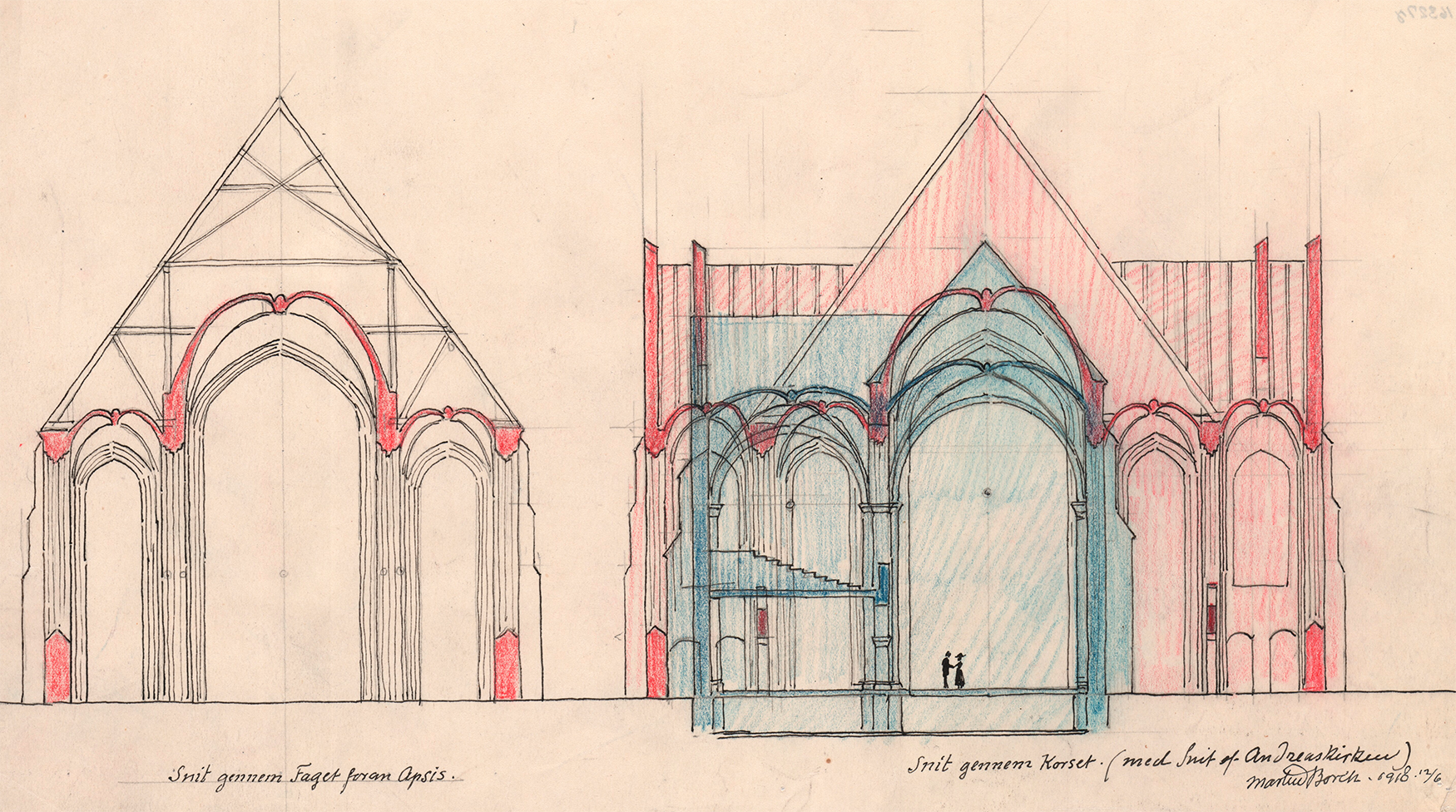
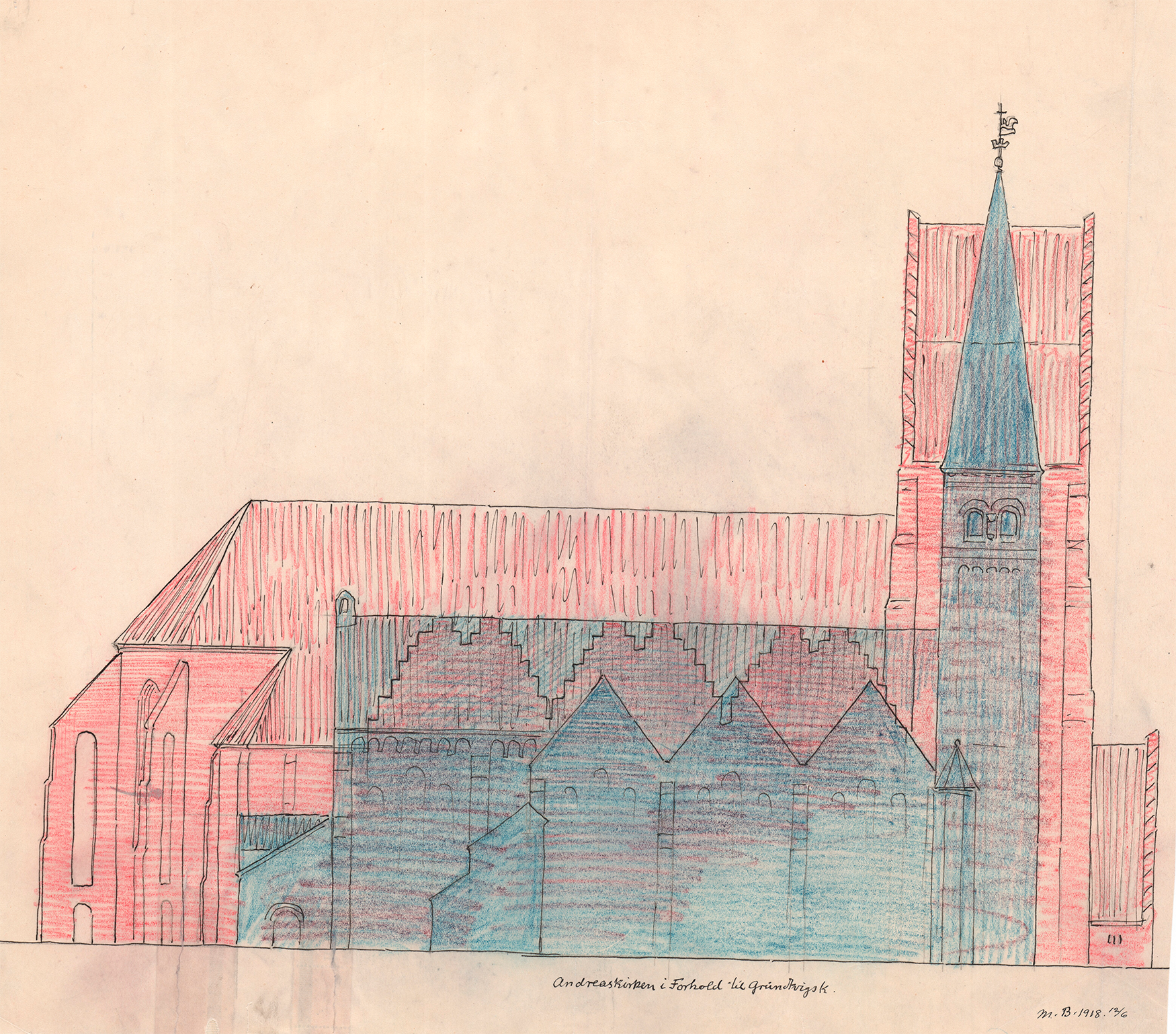
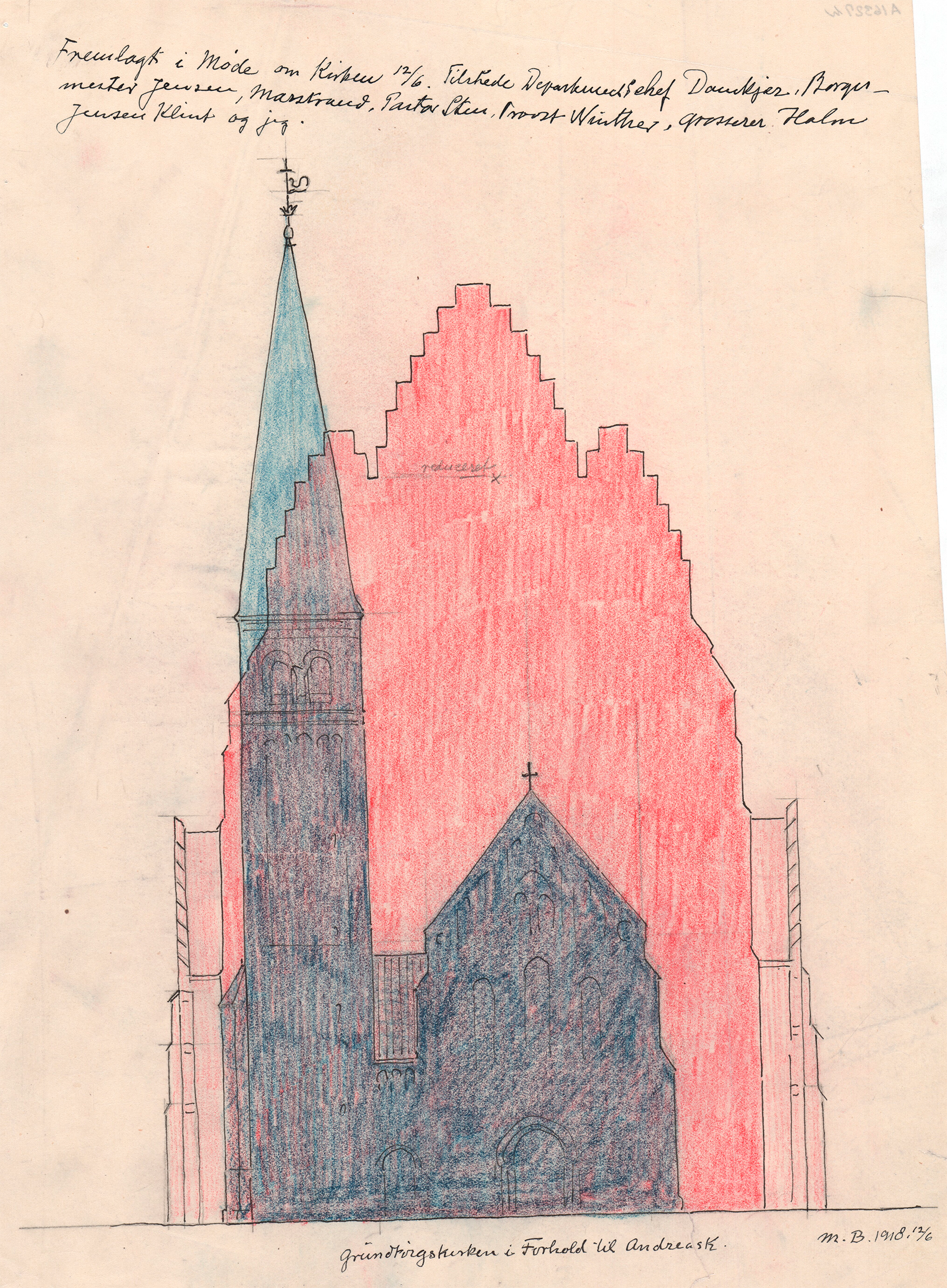
Brønshøj Kirke comparison | Andreaskirke floor plan comparison | Skt. Knuds Kirke floor plan comparison | Skt. Knuds Kirke comparison | Andreaskirke nave comparison | Andreaskirke side profile comparison | Andreaskirke front profile comparison
I had to really work to limit myself to just 10-15 construction photos, these are so wild.
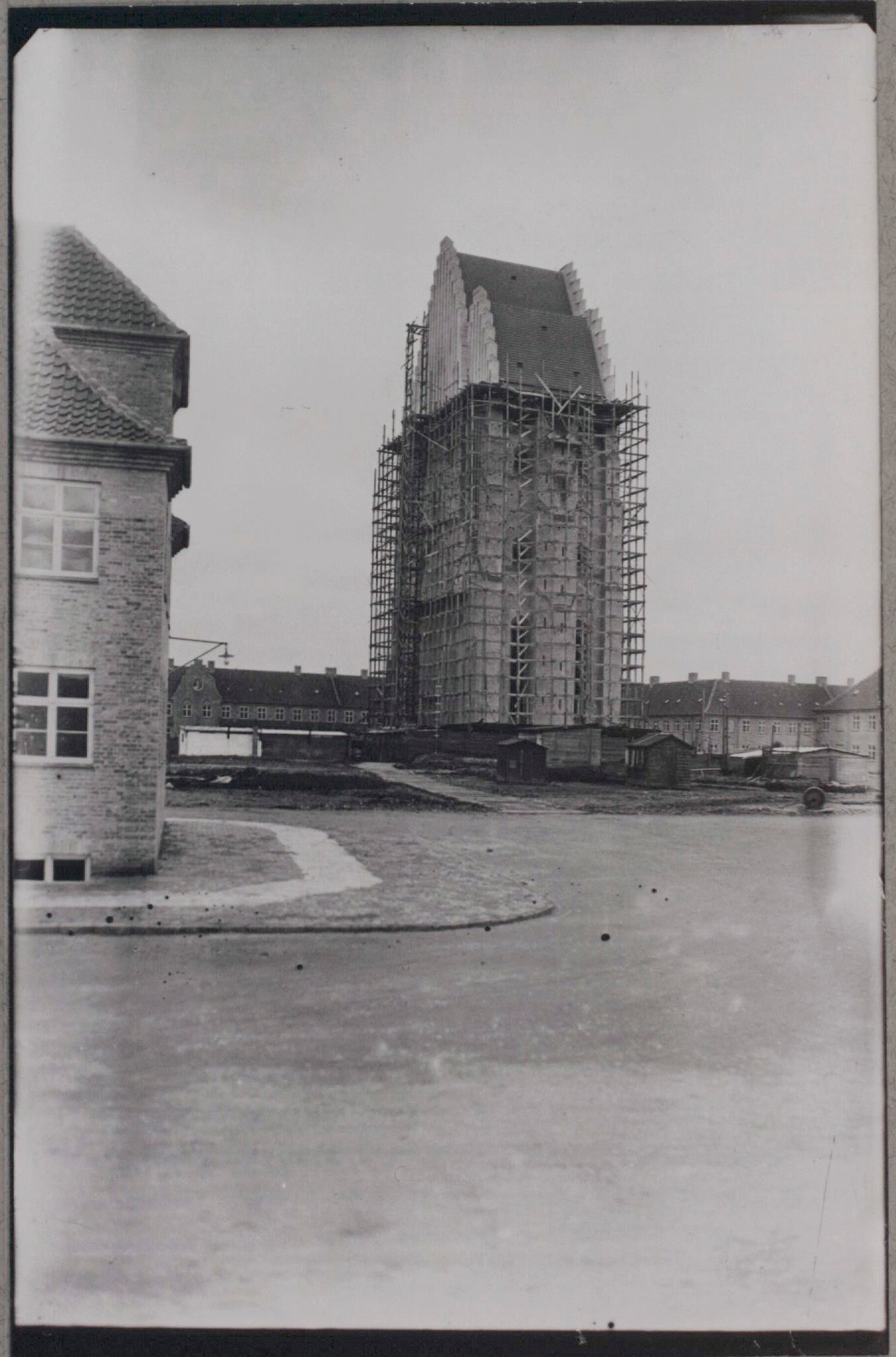
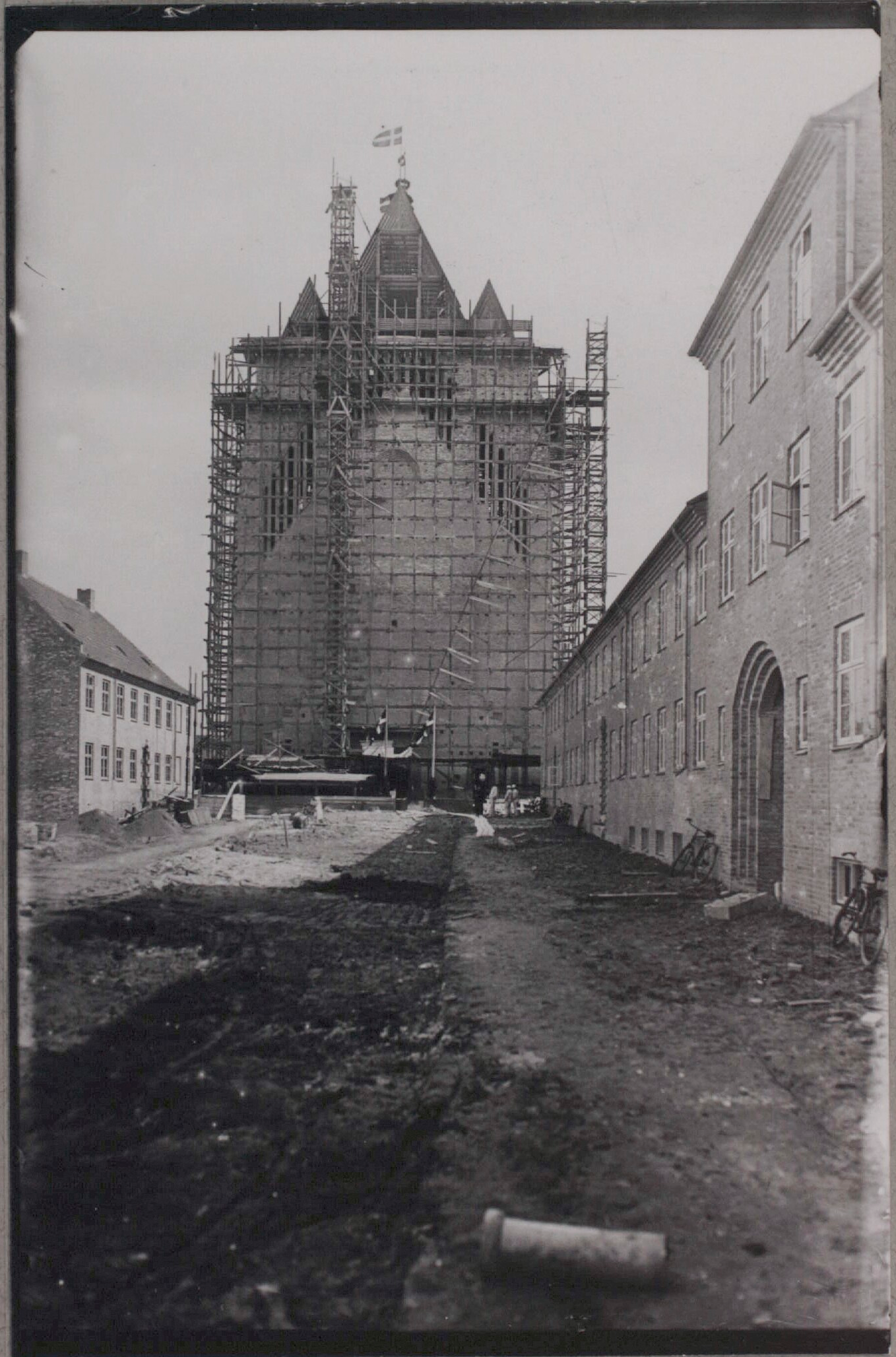
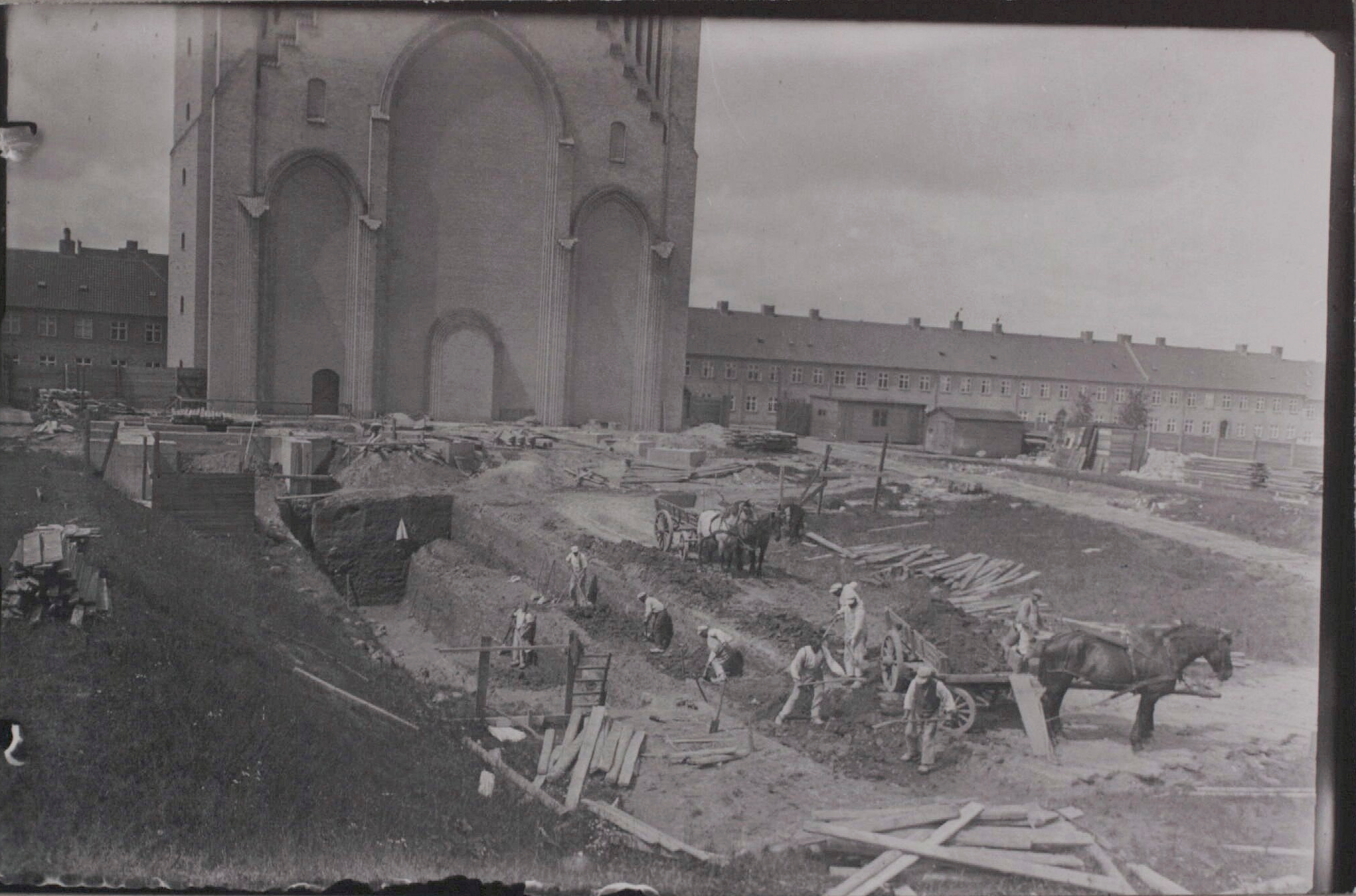
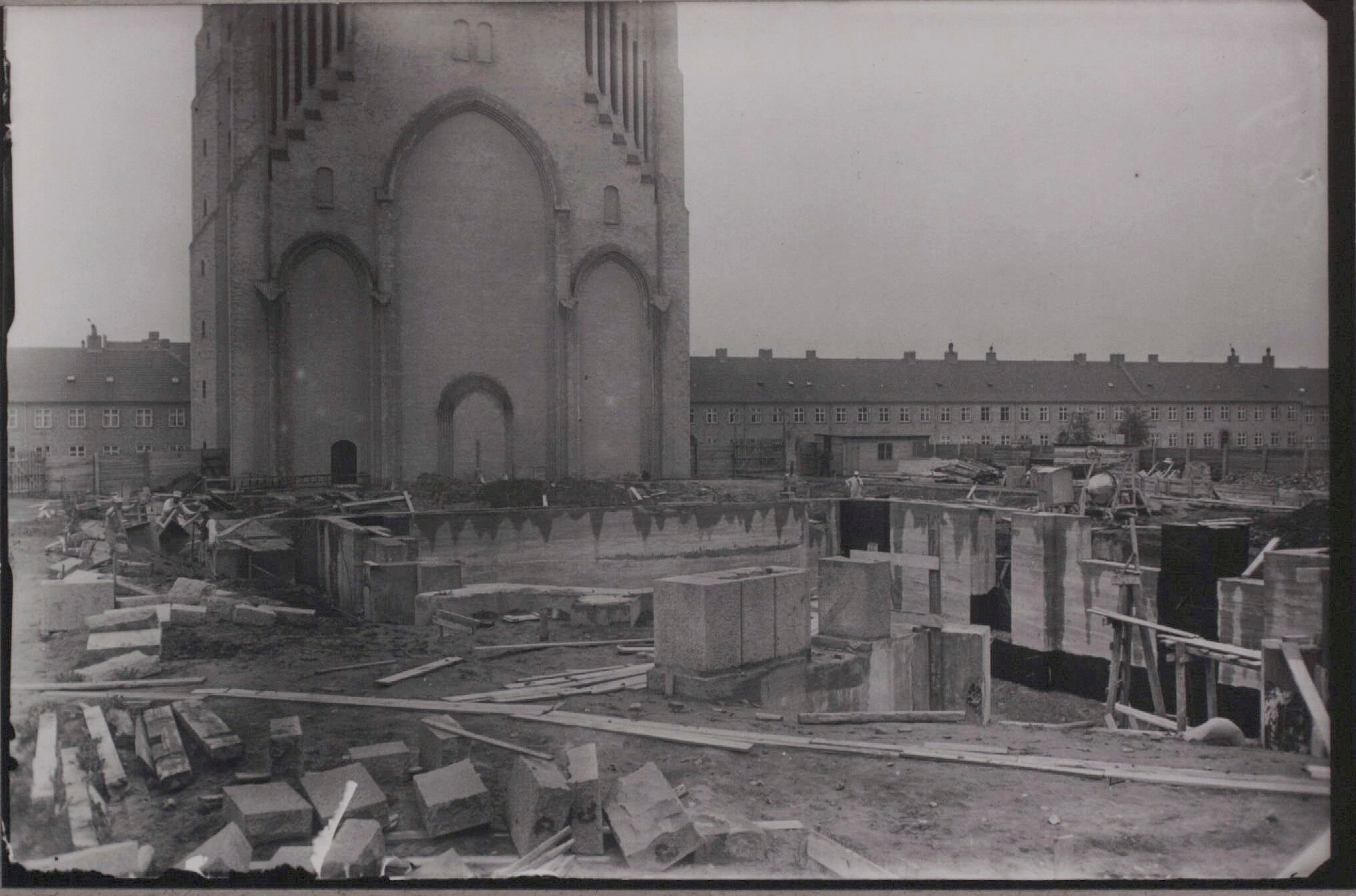
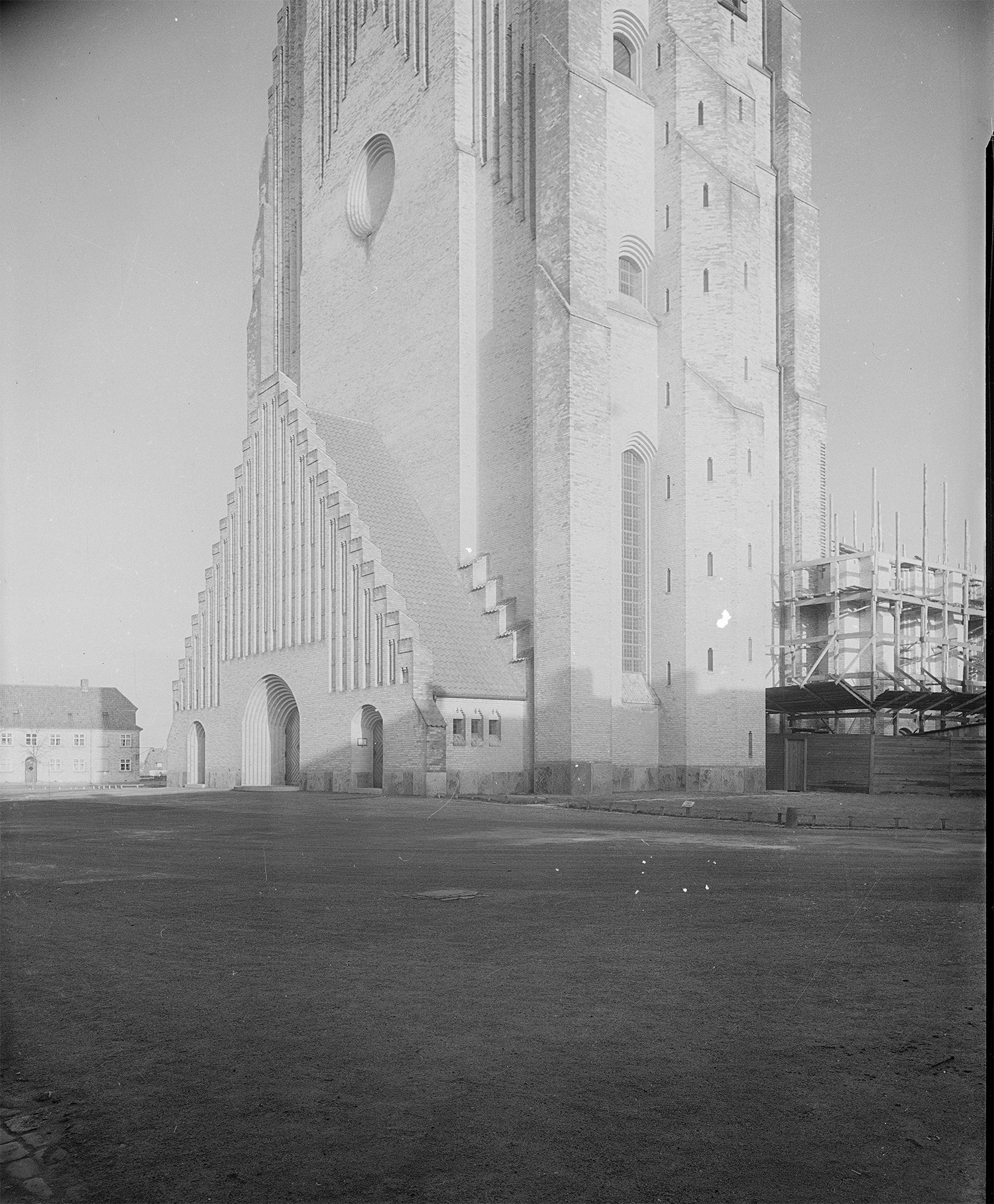
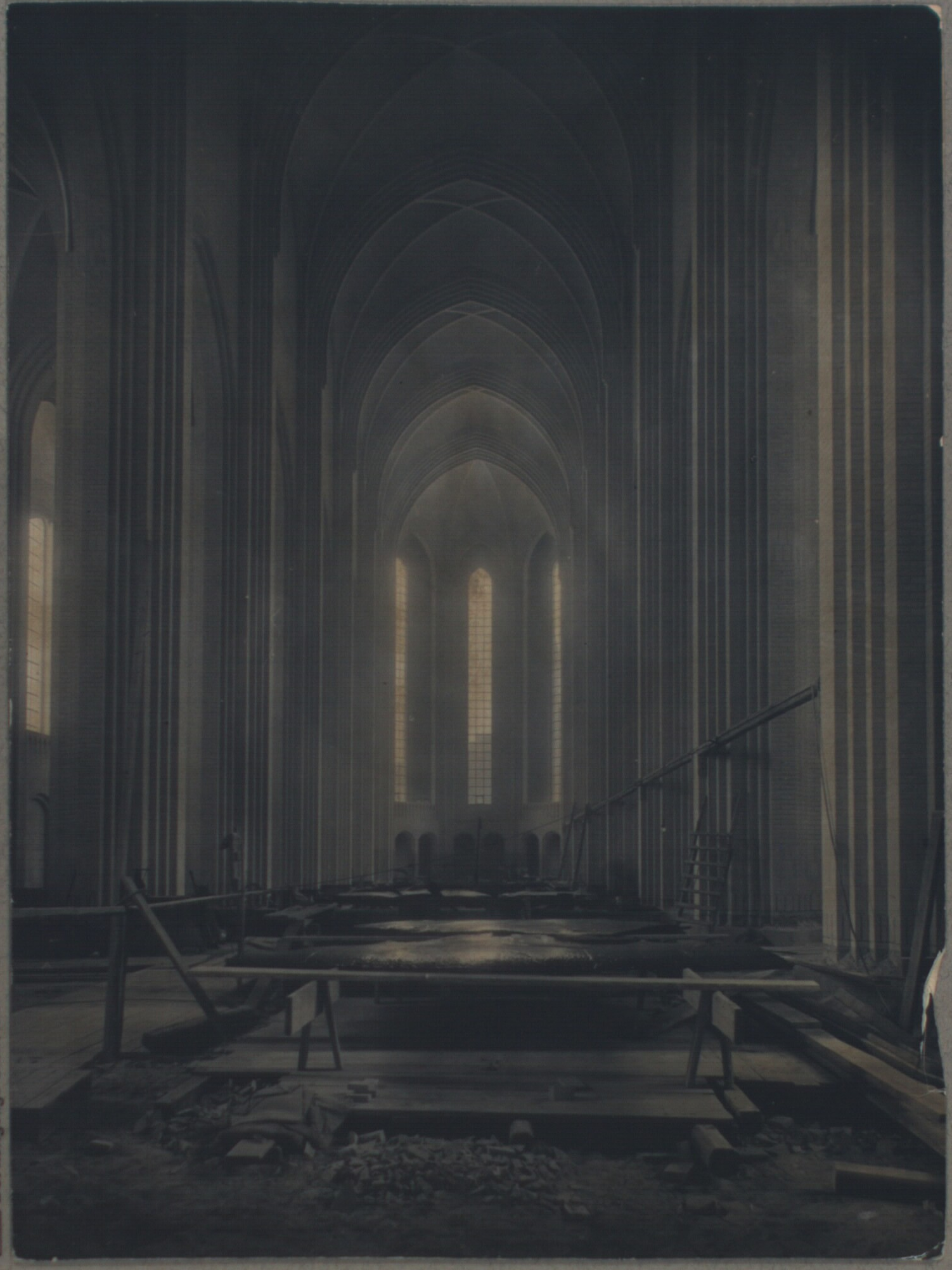
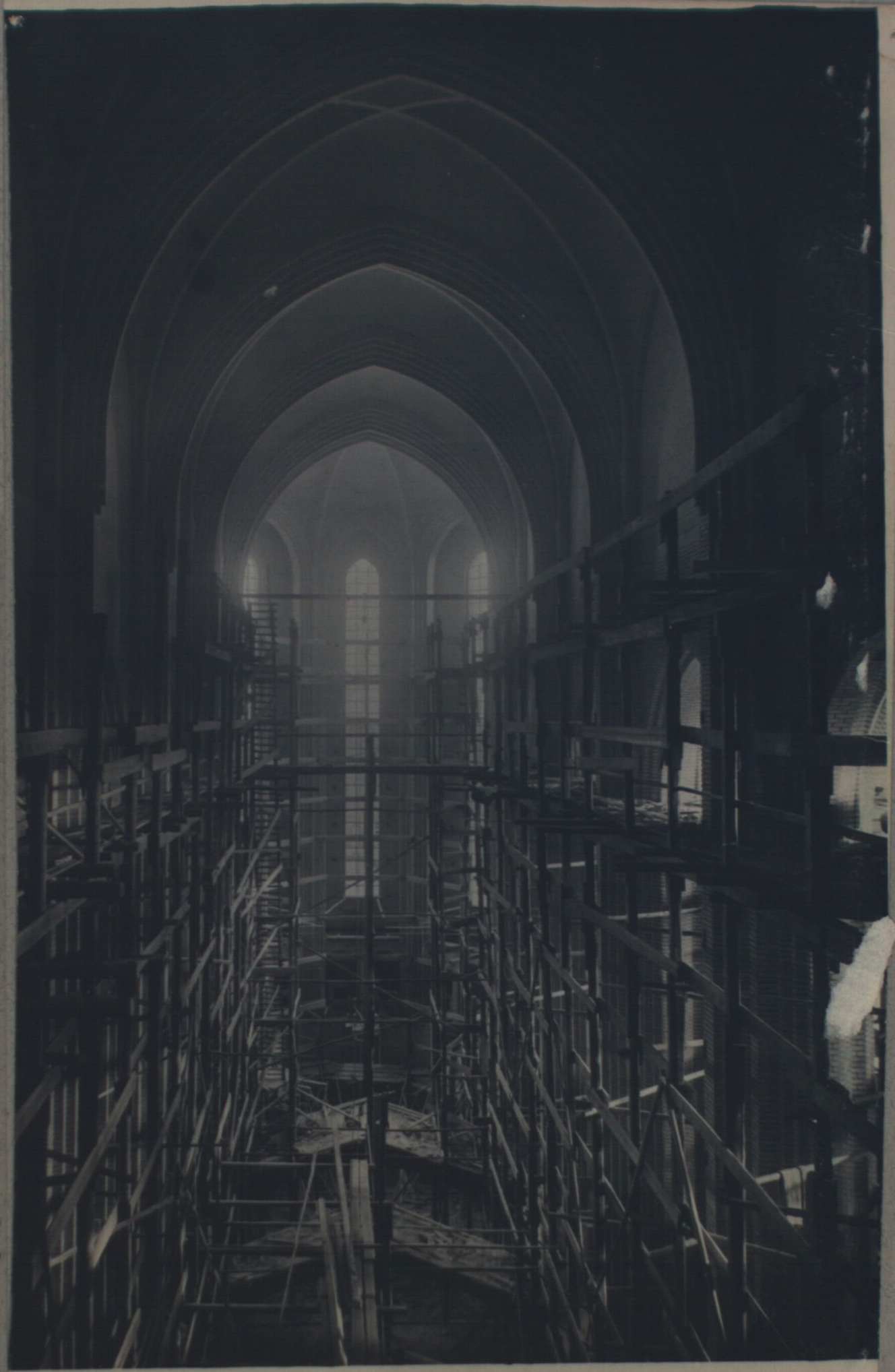
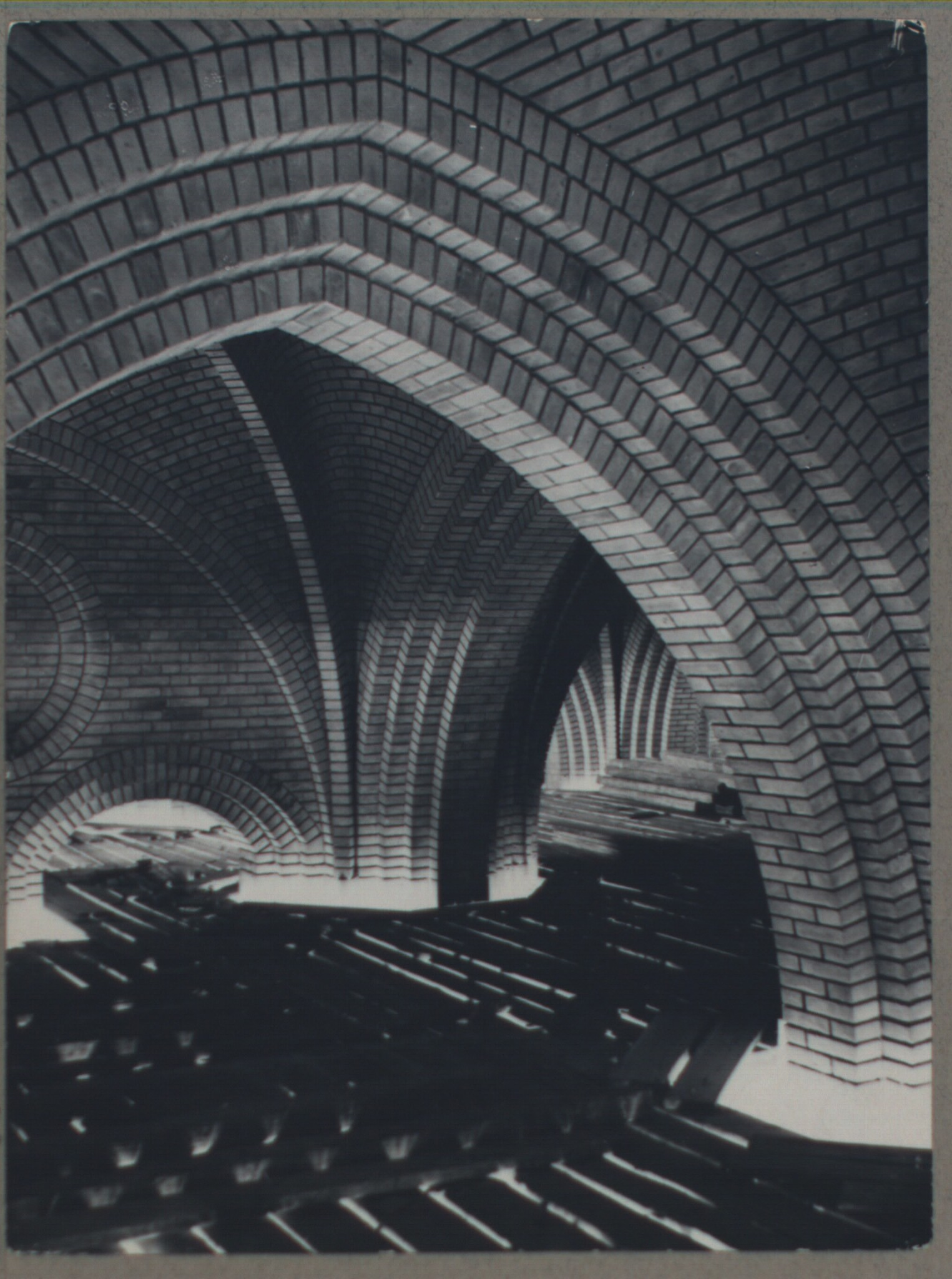
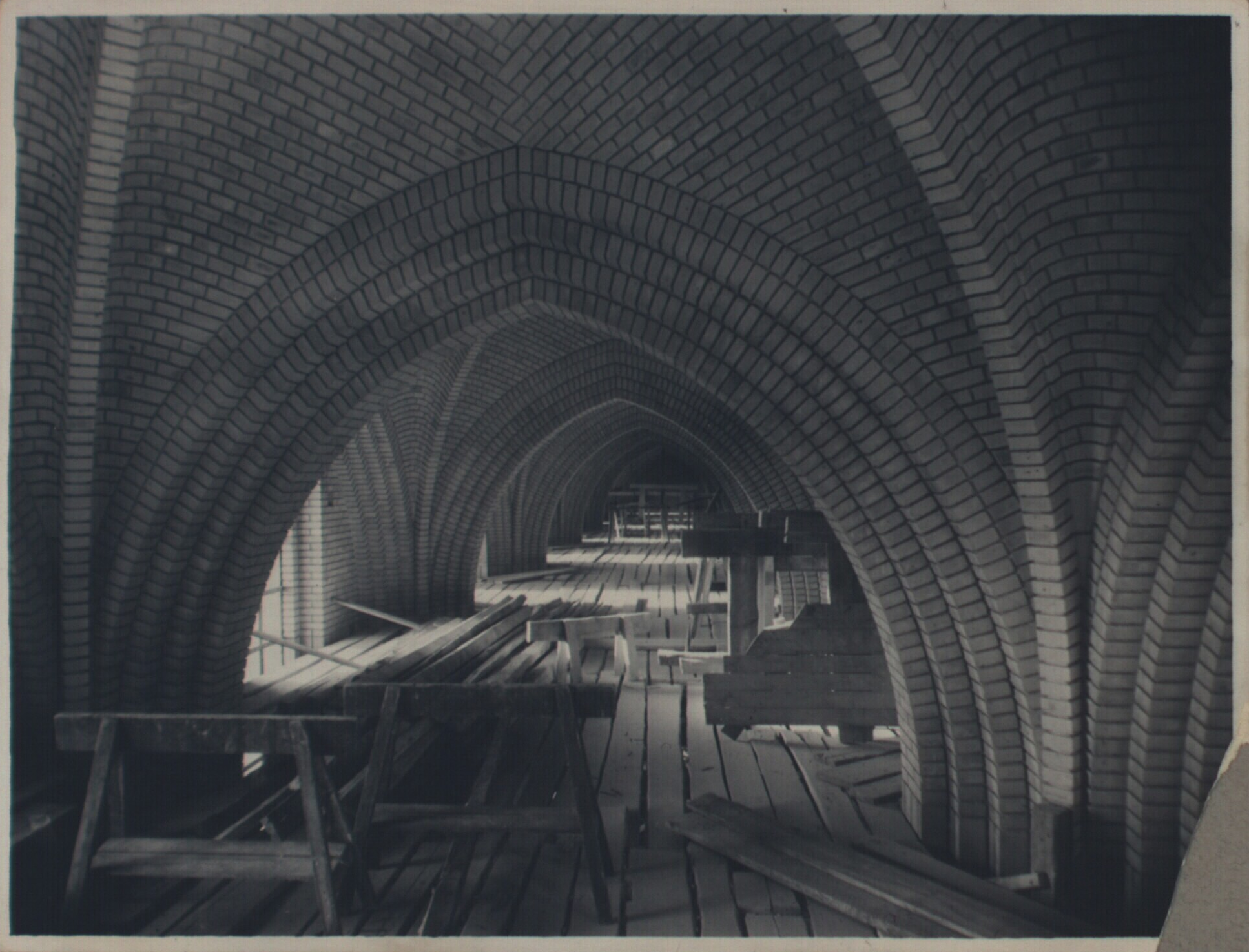
Holger Damgaard, Det Kongelige Bibliotek | Holger Damgaard, Det Kongelige Bibliotek | With horses, Holger Damgaard, Det Kongelige Bibliotek | Foundation, Holger Damgaard, Det Kongelige Bibliotek | Jonals Co., Det Kongelige Bibliotek | Interior construction, 1938, Det Kongelige Bibliotek | Interior construction with scaffolding, 1936, Det Kongelige Bibliotek | Interior construction, vaults, 1935, Det Kongelige Bibliotek | Vault construction with sawhorses, Det Kongelige Bibliotek
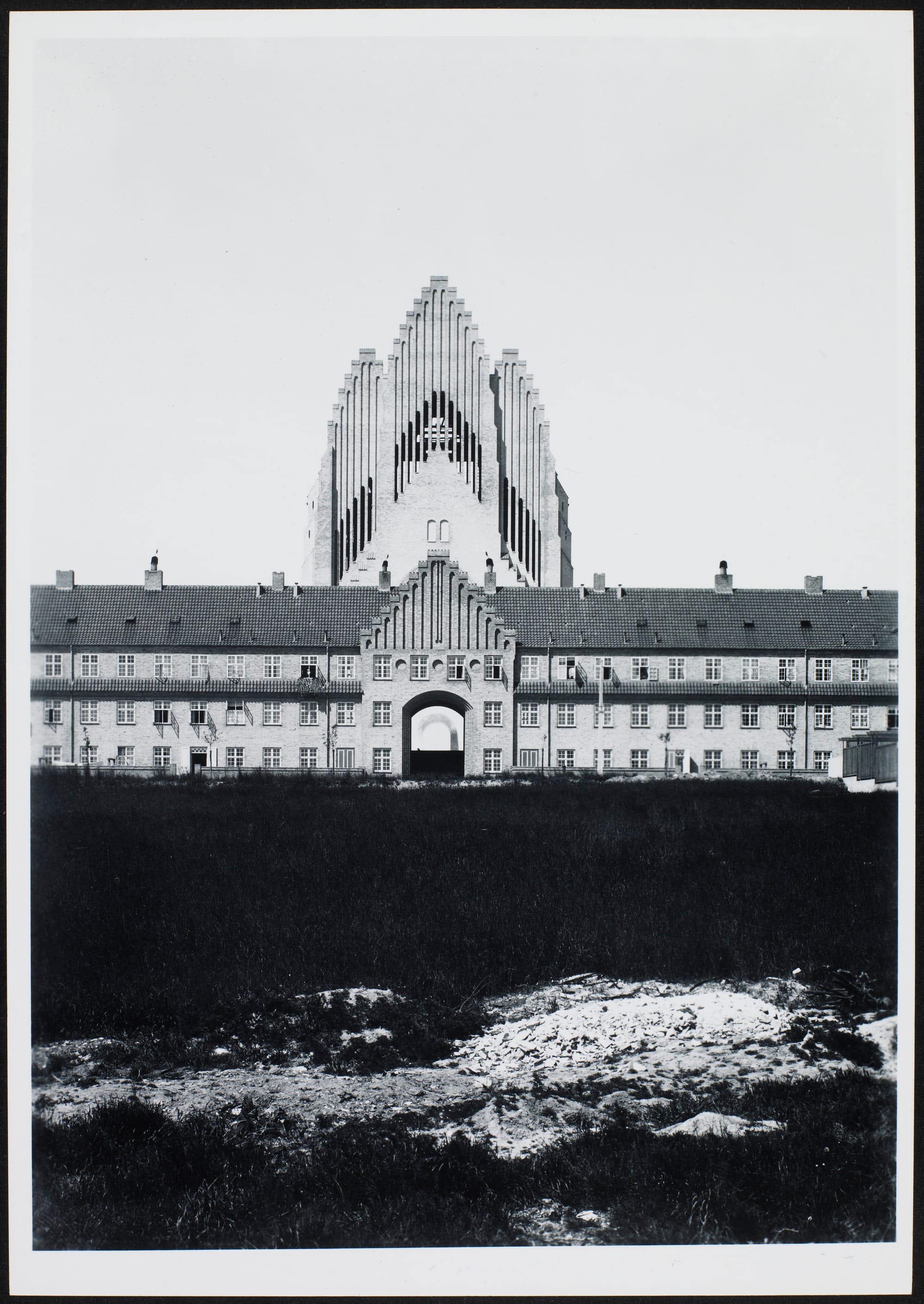
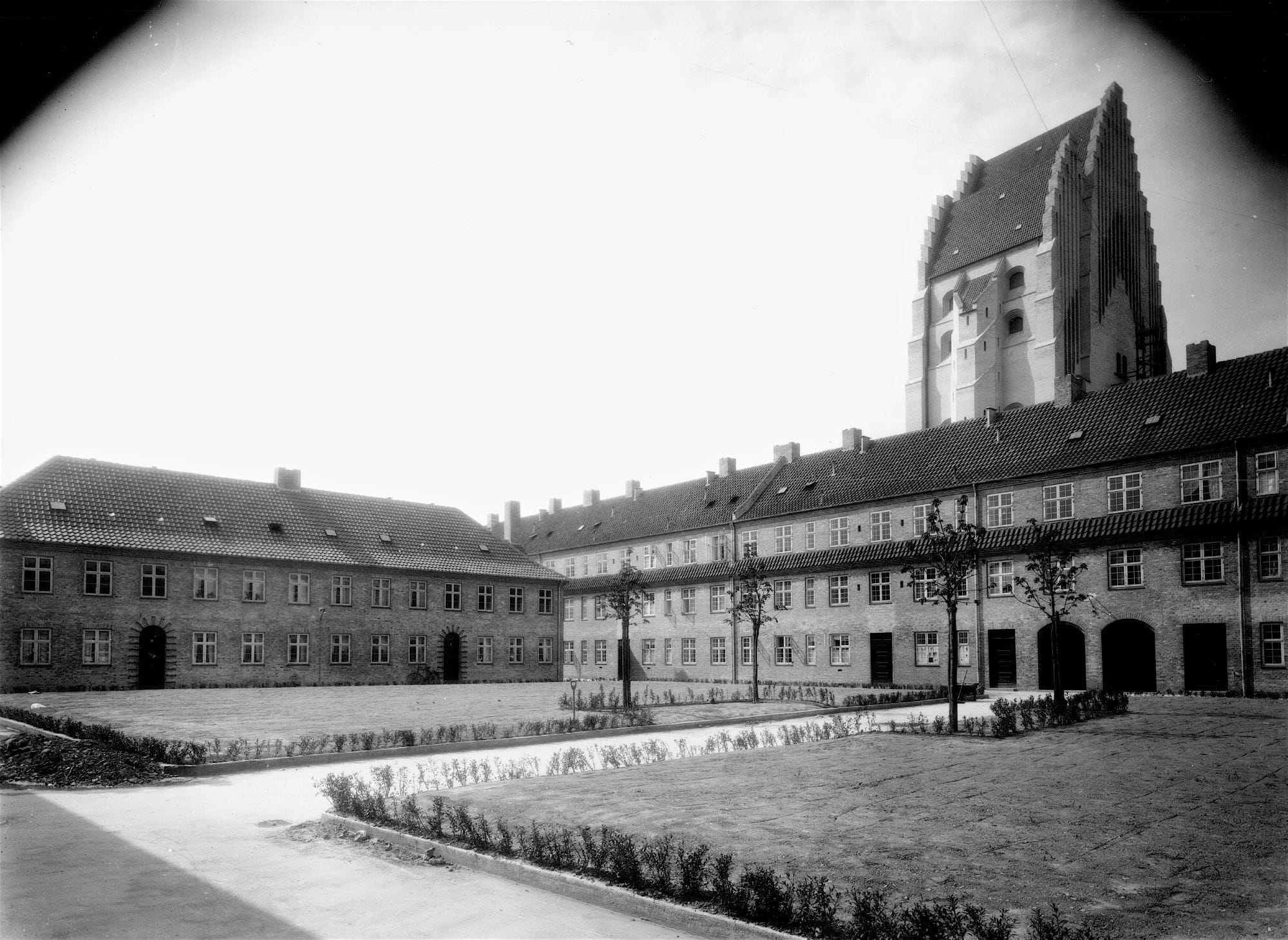
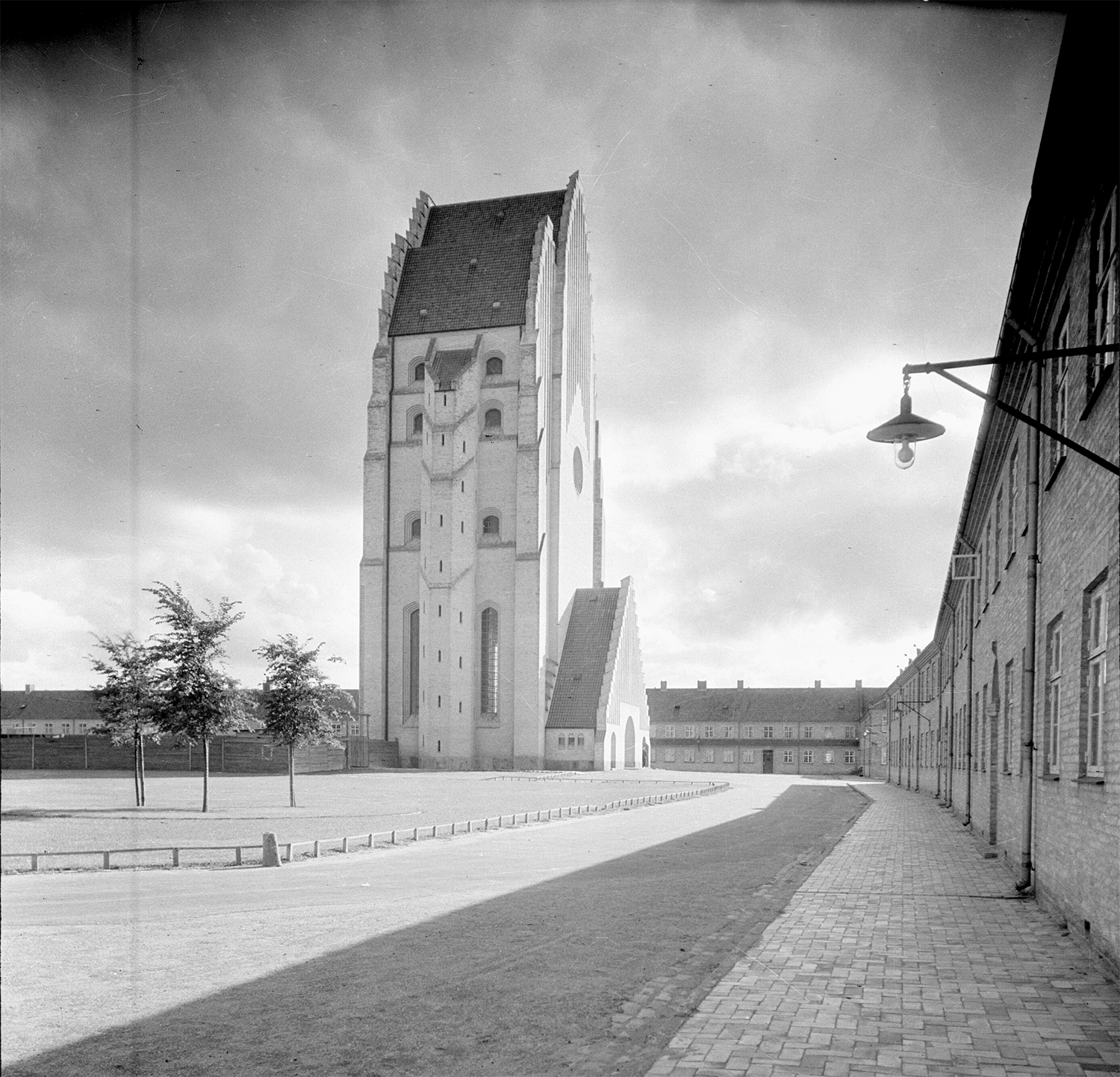
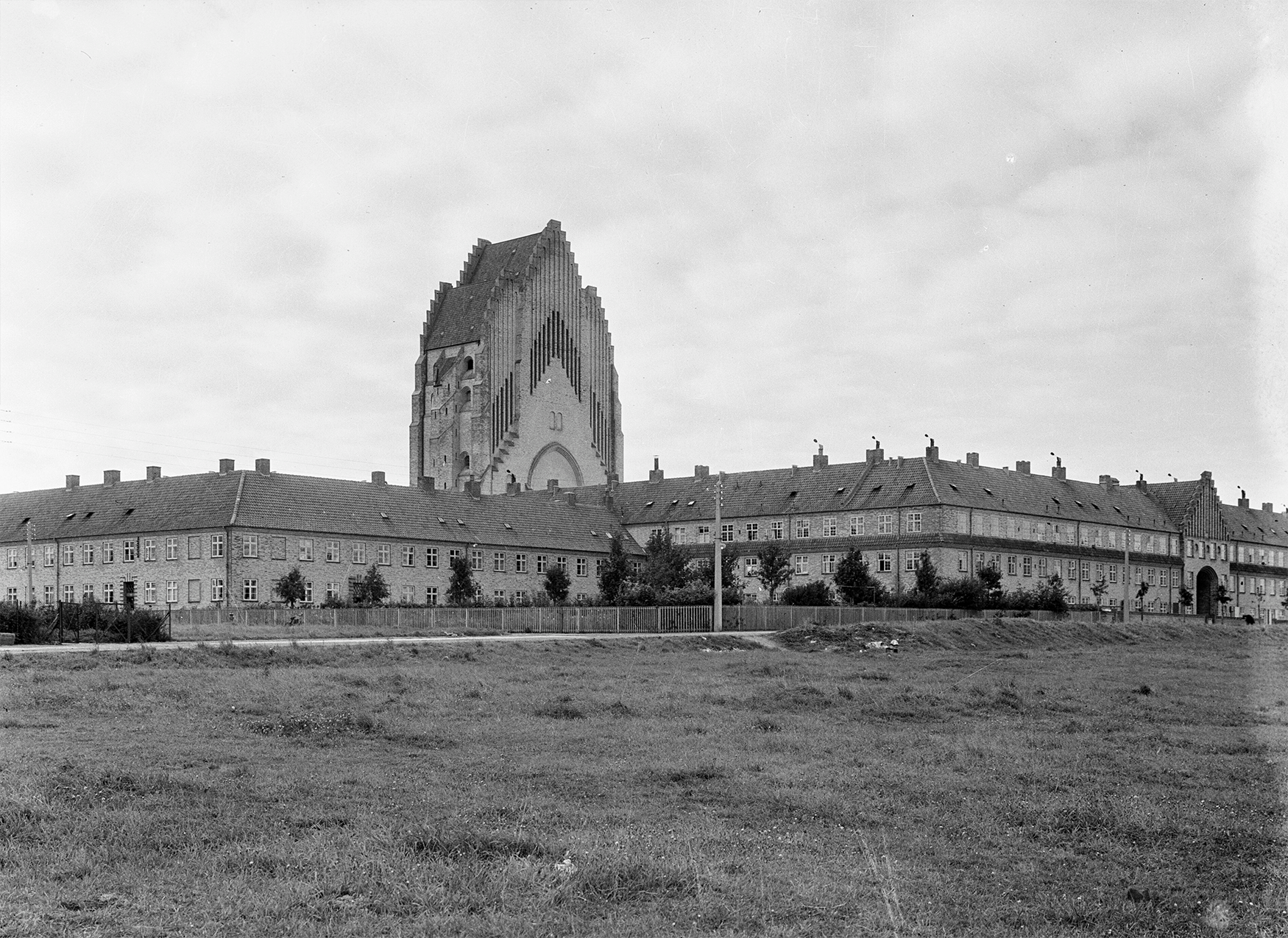
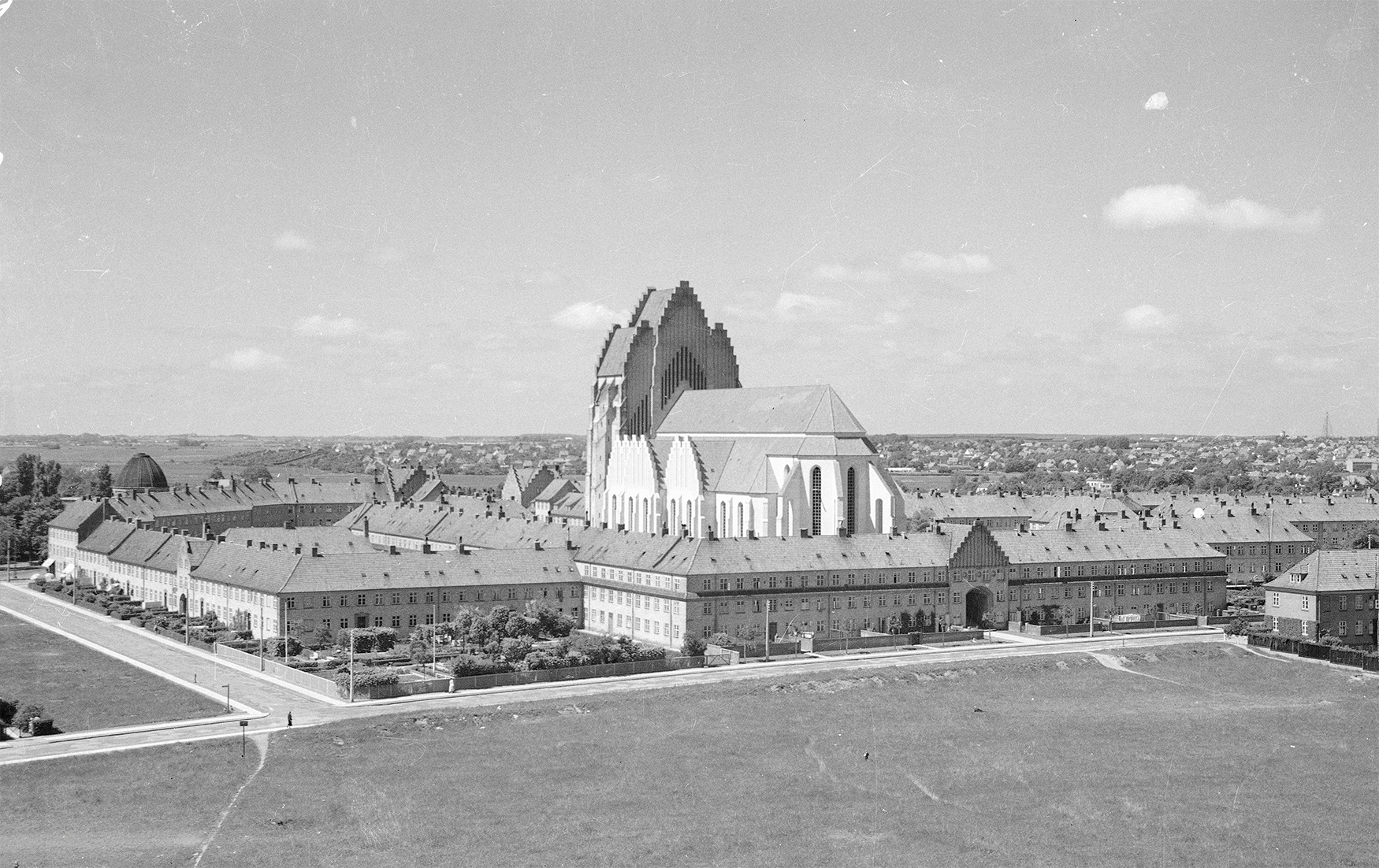
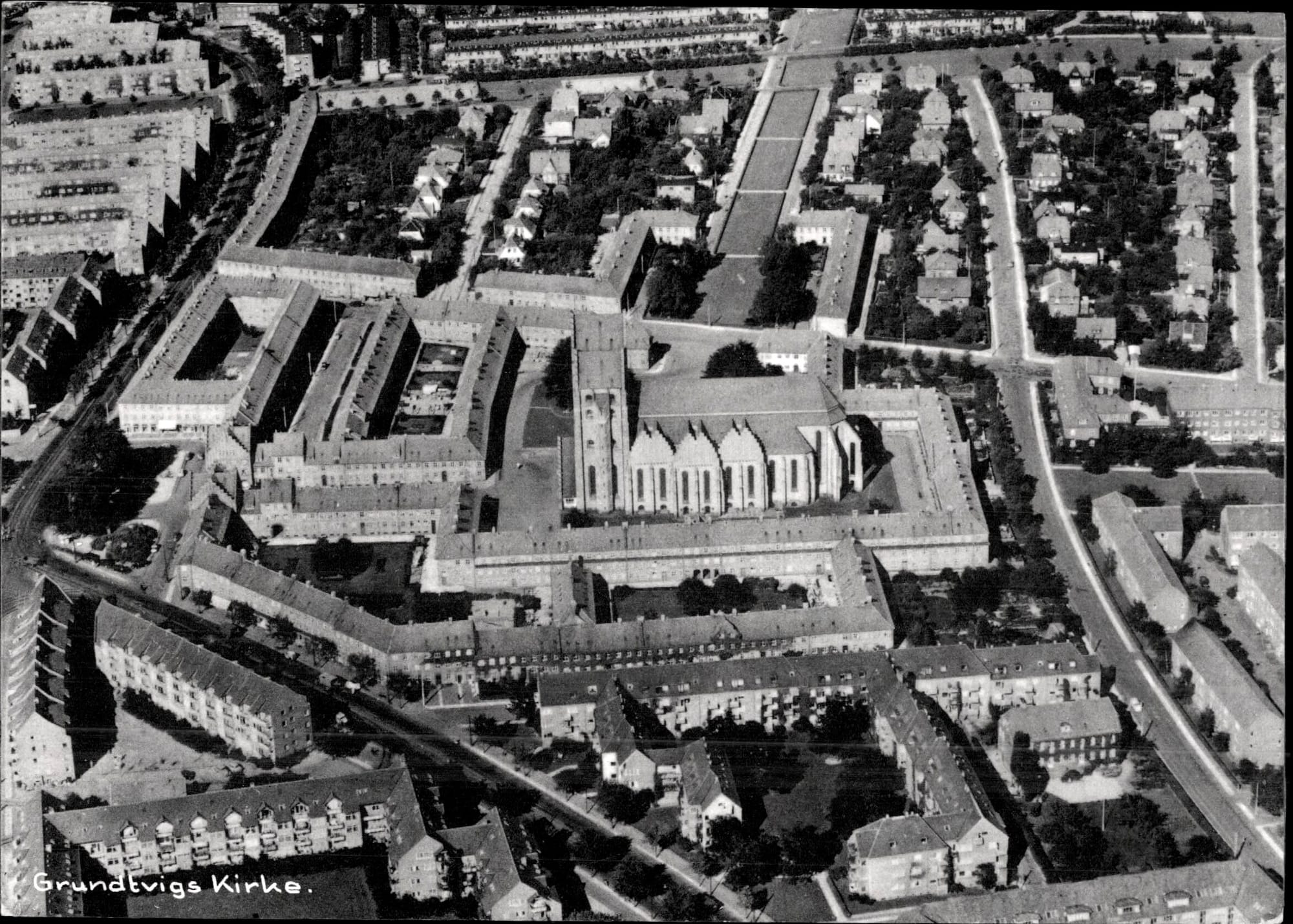
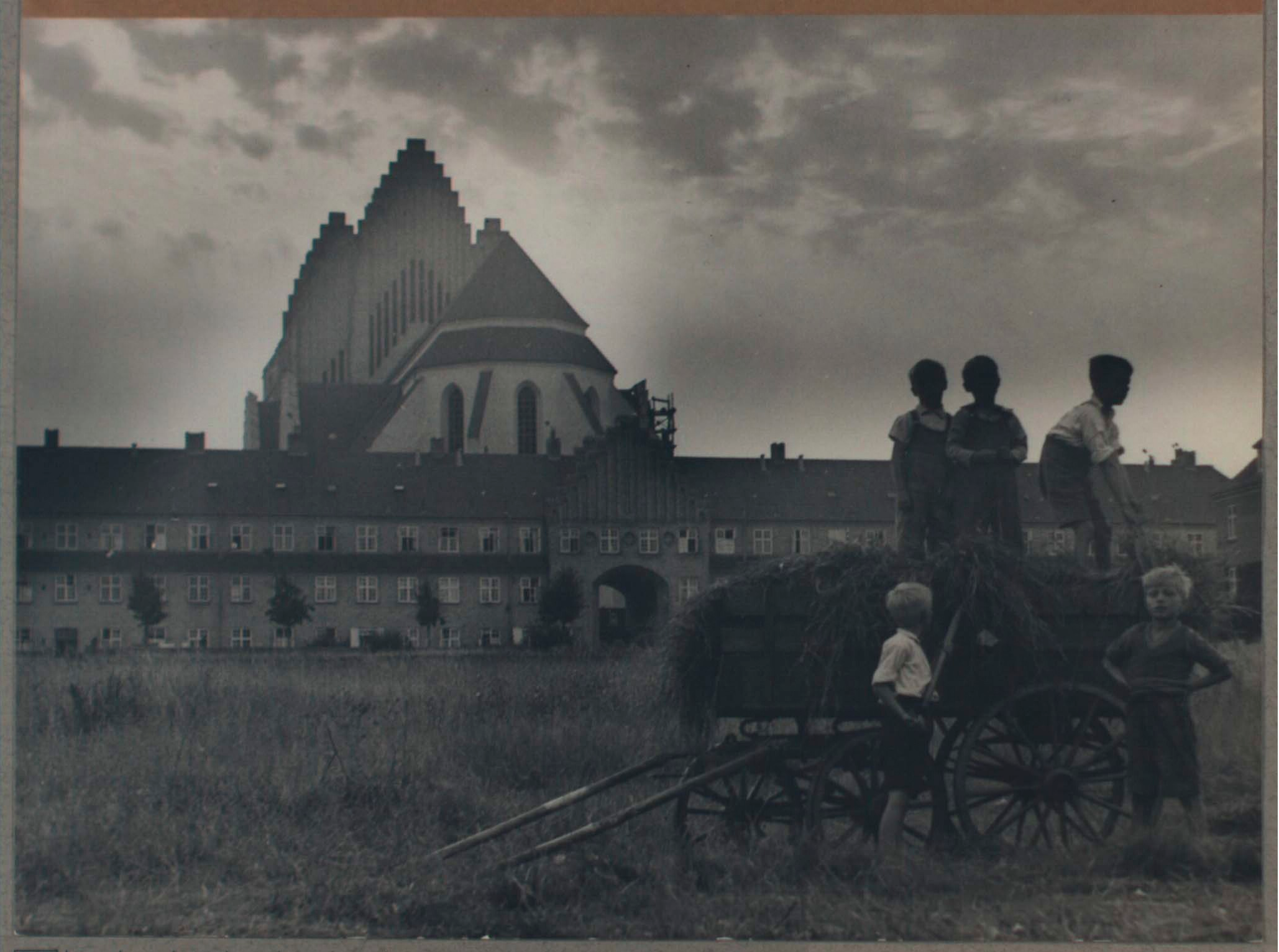
Julie Rasmine Marie Laurberg, Det Kongelige Bibliotek | 1926, Peter Elfelt, the Museum of Copenhagen | Jonals Co., Det Kongelige Bibliotek | Jonals Co., Det Kongelige Bibliotek | Completed church, Jonals Co., Det Kongelige Bibliotek | 1940s aerial, Det Kongelige Bibliotek | Kids with cart, undated, Det Kongelige Bibliotek
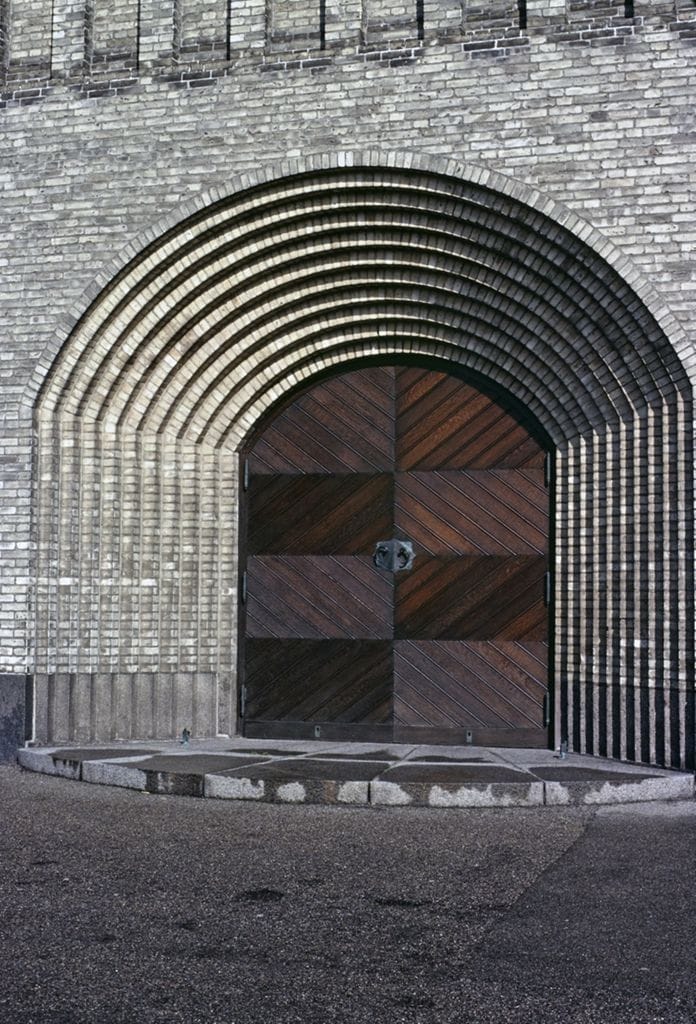
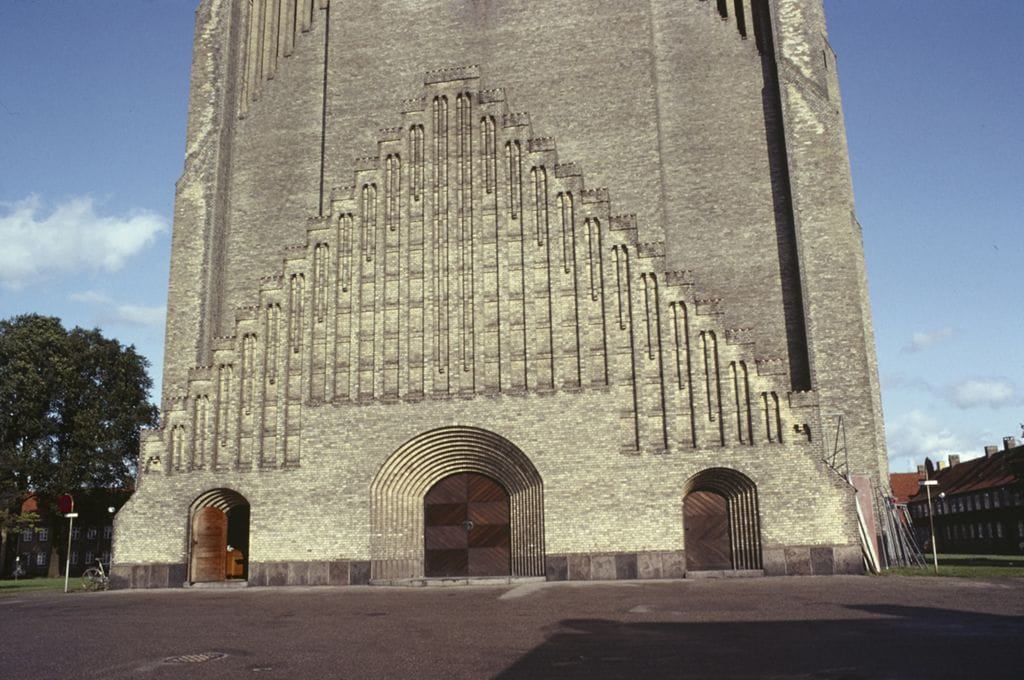
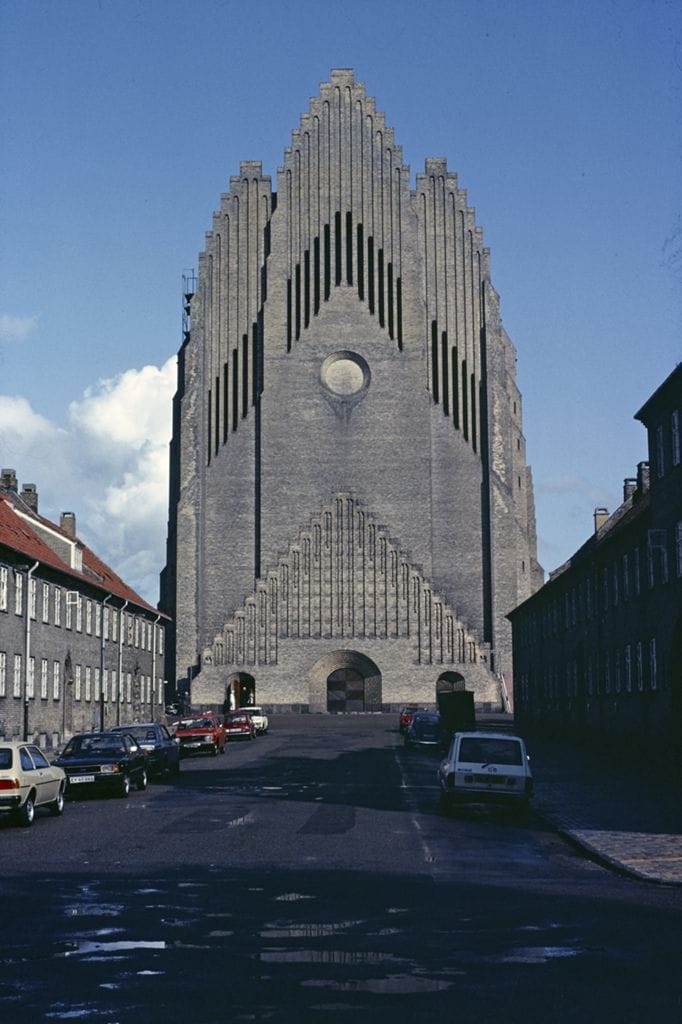
Some 1981 photos from Richard Guy Wilson, UVA Richard Guy Wilson Architecture Archive (photo 1, photo 2, photo 3)
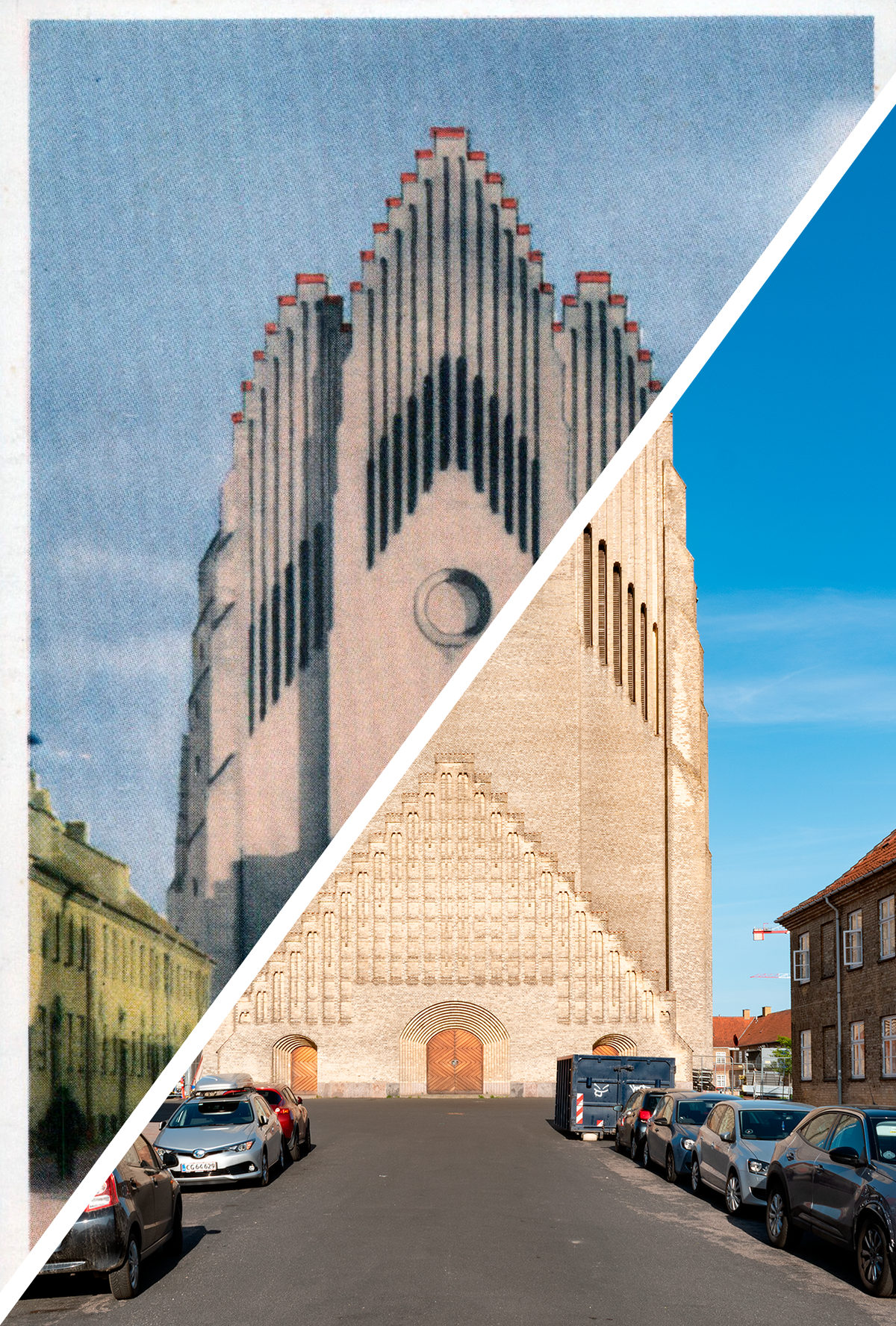




Member discussion: